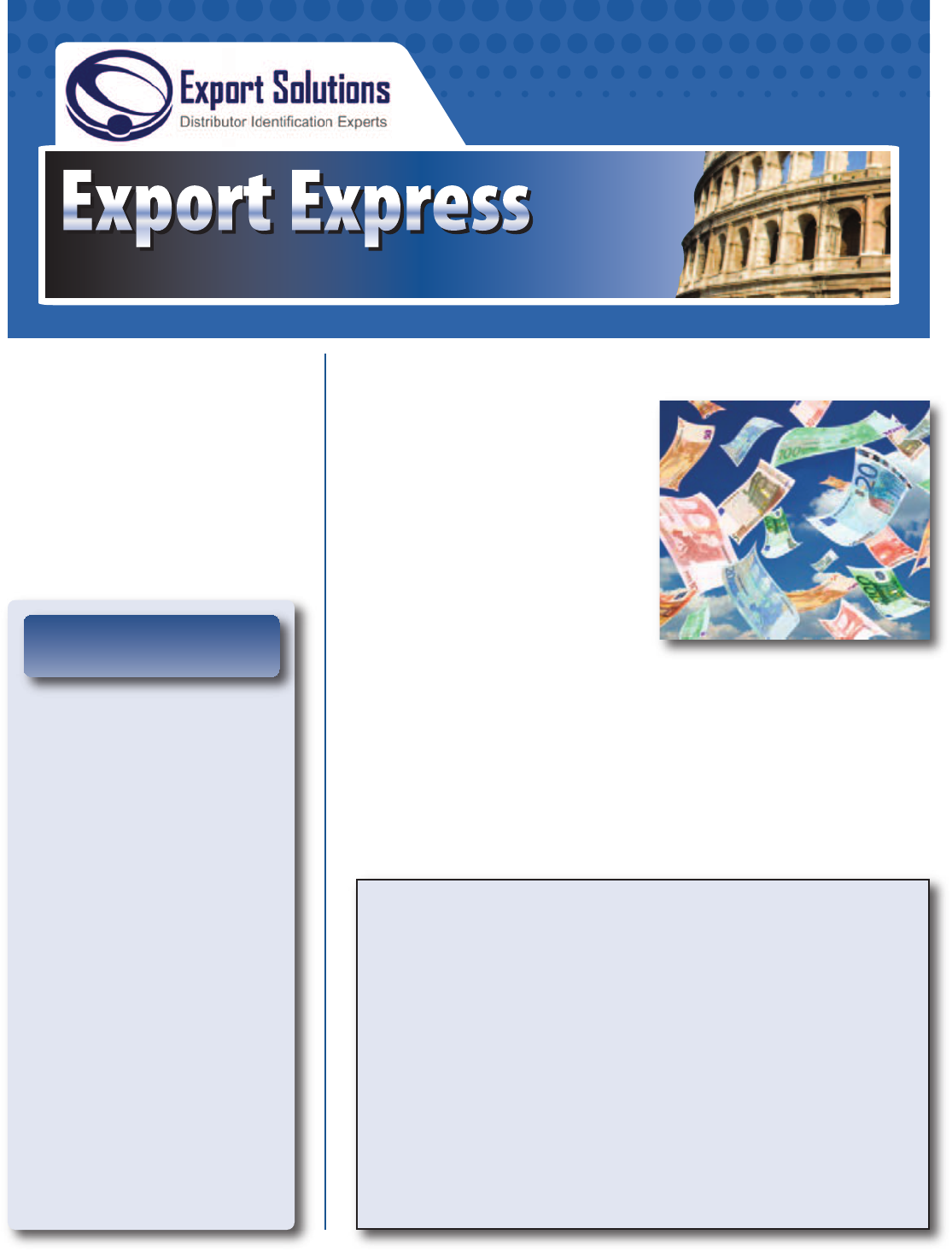
Insights to Accelerate International Expansion
Finance & Logistics
Our Mission: Help Manufacturers “Spend time Selling to Distributors versus Searching for Distributors”
In This Issue
Sell to 96 Countries
Looking for new customers and
distributors in international markets?
Export Solutions’ distributor database
covers more than 9,200 distributors
in 96 countries. Our database features
extensive coverage of leading food,
confectionery, and beverage distributors.
New! Export Solutions’ retailer database
now tracks 2,700 retailers in 96 countries.
Order now at www.exportsolutions.com.
“Turnover is Vanity, Profit is Sanity,
but Cash Flow is Reality!”
The purpose of an export program is to
deliver incremental, profitable sales for
our companies. Too many times, this
fundamental fact is blurred in pursuit
of sticking more pins in our export
coverage map. Our activities focus on
the glamorous aspects of export: new
country entry, distributor selection,
and marketing plans. However, the
real work is in the details. This involves
creating a realistic price calculation and
financing marketing investment. Many
underestimate the complexity of
effectively managing a global supply
chain. 2021 currency fluctuations
reminded us of the need not to just
sell more, but to sell more profitably.
The goal of our Money Matters Guide is
to share practical insights on financial
and logistics aspects of managing an
export business. Export Solutions
desires to add more value to your
company than just providing lists of
distributors in 96 countries. Export
Solutions’ goal is to share strategies,
ideas, and best practices that have
helped other brands succeed in
building export sales. Delivering and
invoicing the requested order to our
distributors and customers represents
the critical point where export dreams
translate to a tangible sale.
Export Solutions can help!
Money Matters: Finance and Logistics Tips
3 Maintain copies of each distributor’s price calculation.
Rough margin estimate: Retail price minus your delivered
price. Split balance between retailer and distributor.
3 Ship directly to distributors, avoid diverting risk!
3 Monthy (quarterly?) retail price surveys
and warehouse inventory reports
3 Track currency fluctuations in Top 20 Countries
3 Distributors need to make money too!
Greg's Guidance – Finance & Logistics
Page 3
Price is Right?
Page 5
Money Matters 2022
Page 7
Let’s Talk About Salaries
Page 14
FAQ’s – Retailer Database
Page 19
Pioneering: A Gamble, Not a
Guaranteed Gold Mine
Page 24
Currency Exchange –
Tough Tactics for Tumultuous Times
Page 30
10 Tips: Mandatory Distributor
Warehouse Visit
Page 36
Incoterms

2
Do you speak the same language as
your distributors? I am not talking
about English, Italian, Arabic, or
Chinese linguistic skills. I am speaking
the language of money. Most export
managers discuss business with their
distributors in terms of cases and
containers. Many distributors are
entrepreneurs that measure their business in terms of profit contribution and
cash flow, just like your company CFO. Understanding distributor economics
can position you and your company as preferred suppliers.
1. Distributors deserve a reasonable profit for their efforts.
Many achieve a net profit margin of only 3-5 percent plus various owner benefits.
A financially stable partner invests in people and technology to advance your mutual
business. A solid balance sheet allows the distributor to weather the storm in a political
or financial crisis.
2. What is the “salary” you pay your distributors?
Calculate cash flow generated by your company by analyzing distributor net sales
to customers multiplied by the distributor margin excluding any promotional bill
backs. Margin is one metric, but cash generated pays the bills. How does the distributor
salary compare to the work required to service your business or the cost of maintaining
a local subsidiary?
3. New Business = Bonus
Distributors are constantly searching for new brands. The next piece of new business
entering a distributor generates incremental sales while better utilizing fixed assets like
the sales team and warehouse. Brands with existing sales in a country are very attractive
as they contribute immediately to the distributor, even if they require a lot of effort
during the initial transition.
4. Pioneering is tough!
Would you work for a company for one year without salary? That is the scenario when
a distributor is challenged to pioneer a brand in a country for the first time. The cycle
of distributor selection, business plan, new product launch, marketing activation and
customer repayment may take one year or more before the distributor receives his first
“paycheck” for his efforts for your company. Of course, there is a long term pay out
for the distributor when the brand works. This is one of the primary reasons that
distributors are reluctant to start to represent a new company without a strong USP
and investment program.
5. What is the “size of the prize?”
Distributors appreciate export managers that frame their partnership in terms of mutual
profit development. Brand owners that understand the intricacies of distributor cost to
serve will be rewarded. Measure your profit contribution to a distributor and request
that a fair share of their resources be invested in your brand development. A profitable
distributor is a healthy distributor!
Good luck!
www.exportsolutions.com
Greg Seminara
“Spend Time Selling to Distributors versus Searching for Distributors”
Distributor Economics
Strategic Services
Contact Us for
Export Solutions
1. Identify Best in Class Dis-
tributors: 96 Countries
2. Best Practices
Export Strategy
3. Distributor Management
Workshops
4. Export 101:
Let’s Get Started
5. New Market Prioritiza-
tion
and Launch Plan
6. Personal Distributor In-
troductions:
96 Countries
7. Walmart International
8. Distributor Contracts,
Margins, and Fees
9. Meeting Speaker
10. International
Strategy Expert
Strategic Services
Contact Us for
Export Solutions
1. Identify Best in Class Dis-
tributors: 96 Countries
2. Best Practices
Export Strategy
3. Distributor Management
Workshops
4. Export 101:
Let’s Get Started
5. New Market Prioritiza-
tion
and Launch Plan
6. Personal Distributor In-
troductions:
96 Countries
7. Walmart International
8. Distributor Contracts,
Margins, and Fees
9. Meeting Speaker
10. International
Strategy Expert
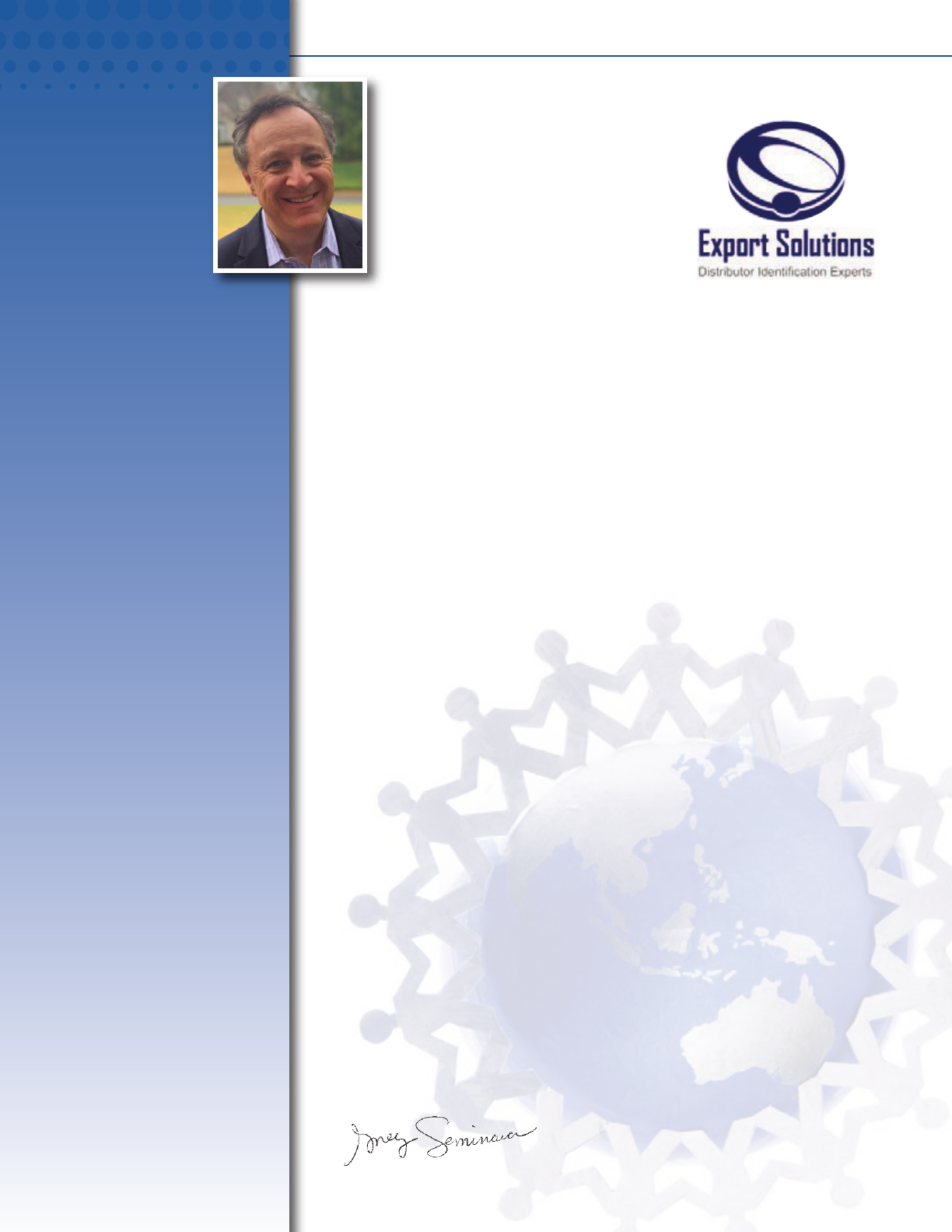
3
Consumer pricing is one of the famous
“Four P’s” of product marketing. Many
export managers spend countless hours
negotiating wholesale price lists with
distributors and retailers. However, this
intensity frequently disappears when the
discussion shifts to the point of pricing to
the consumer. This is unfortunate, because
retail pricing is at the critical point where
our marketing dreams and distributor
inventory are translated to tangible sales.
I recently conducted a seminar where I presented a full day program on Export Strategy,
Distributor Economics, and Getting More Than Your Fair Share of Your Distributors
Attention. In the Distributor Economics module, I surveyed the group on how many
maintained copies of each distributor’s price calculation. This is the fundamental formula
that tracks each brands pricing inputs from factory gate to supermarket shelf. None of the
participants had copies of their distributor’s actual price calculation or requested a market
wide retail price survey. As the norm, busy export managers focus attention on the myriads
of details required to process orders such as importation paperwork and product
registration. However, retail pricing is a critical element to add to your “to-do” list.
Listed below are Export Solution’s Tips for managing your retail price guidelines.
1. Review Suggested Retail Price by Market.
Is your pricing realistic based upon 2022 market dynamics and your cost calculation?
2. Conduct Market Wide Retail Price Survey
How do your prices compare versus your suggested retail price and competitive set?
3. Obtain Distributor Price Calculations
Most distributors openly share this information with their brand partners. If a distributor
is hesitant, it’s usually easy to figure out if you have retail prices.
Retail price - distributor cost - sales taxes and import duties = gross margin.
This gross margin is divided by the retailer and distributor.
4. Examine Each Line Item of a Price Calculation
Distributors and Retailers are entitled to a fair return for their work on your brand. They
maintain profit targets just like your company. In some cases, price calculation transparency
leads to breakthrough changes in business development. I remember a situation where the
distributor established an 8% currency benefit at the start of a price calculation to hedge
against fluctuation. The export manager agreed to sell in the common currency, absorbing
the risk, but translating to an 8% positive benefit to the brand price. In some cases,
distributors may place “average” numbers in a calculation for logistics services or trade
discounts which may not be representative for your brand.
5. Evaluate Relationship Between Everyday Pricing and Promotional Pricing
Price analysis should reveal typical price paid by the consumer. For example “everyday”
prices are not as relevant if the consumer habit is to wait until product is on promotional
discount to purchase and “stock up.”
6. Supermarket E-Commerce Sites Offer Instant Desktop Price Surveys
Lately, I have checked online web sites for retailers in the UK, Australia, Panama and the
USA to get an immediate snapshot of market prices and assortment. It’s not perfect, but
a free and easy way to begin to understand market pricing dynamics.
Pricing is a cornerstone of your brand proposition. A little emphasis and investigation will
determine if your “Price is Right” to optimize sales in a country.
www.exportsolutions.com
“Spend Time Selling to Distributors versus Searching for Distributors”
Price is Right?
Greg Seminara
404-255-8387
Strategic Services
Contact Us for
Export Solutions
1. Identify Best in Class Dis-
tributors: 96 Countries
2. Best Practices
Export Strategy
3. Distributor Management
Workshops
4. Export 101:
Let’s Get Started
5. New Market Prioritiza-
tion
and Launch Plan
6. Personal Distributor In-
troductions:
96 Countries
7. Walmart International
8. Distributor Contracts,
Margins, and Fees
9. Meeting Speaker
10. International
Strategy Expert
Strategic Services
Contact Us for
Export Solutions
1. Identify Best in Class Dis-
tributors: 96 Countries
2. Best Practices
Export Strategy
3. Distributor Management
Workshops
4. Export 101:
Let’s Get Started
5. New Market Prioritiza-
tion
and Launch Plan
6. Personal Distributor In-
troductions:
96 Countries
7. Walmart International
8. Distributor Contracts,
Margins, and Fees
9. Meeting Speaker
10. International
Strategy Expert
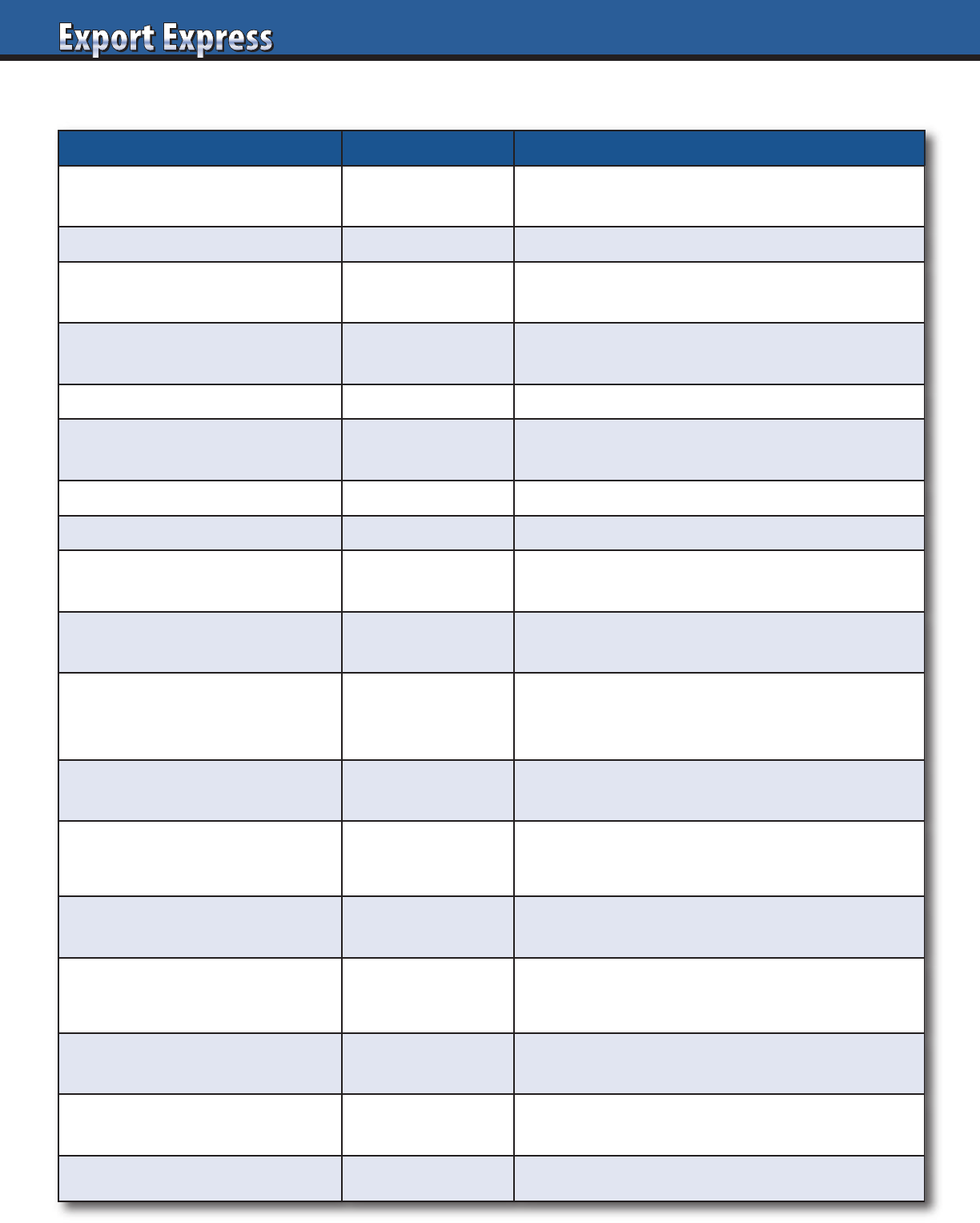
4
Price Calculation Worksheet
Item Amount Comments
List Price (factory or port)
Compare to your domestic list price?
Avoid diverting risk.
Exchange rate Watch bank rate vs. distributor rate.
Freight (sea, truck or rail)
Target full containers.
Consolidation is costly.
Duties
Apply correct Harmonized (HS) code.
Confirm Free Trade Agreements.
Customs clearance, insurance Money and time!
Inland freight: port to distributor
Translate actual costs to case rate.
Avoid flat percentage rates.
Landed Cost
Product Stickering Select countries.
Listing Fees
Flat fee. One time only.
Usually not in calculation.
Marketing fund accrual
Typically, 10-20% of list price.
Part of calculation or manufacturers price.
Distributor Margin
Normal range: 15-35%.
Depends on size, complexity of brand, services,
and “what trade spend is included.”
Other Distributor Fees
Should be part of distributor margin.
Avoid hidden profit centers.
Price to Retailer
Fair and transparent model.
Incentives for large customers, extra performance.
Retailer promotions, incentives,
rebates
10 – 20% depending on the country.
Other Retailer Fees
At times for merchandising or central distribution.
Should be allocated from distributor margin.
Retailer Margin
Global average: 28%
Range: 15% -45% based upon category, brand.
Sales Tax/VAT
Included in price in many countries.
USA sales tax is on top of shelf price.
Consumer shelf price Everyday prices and promotional prices.
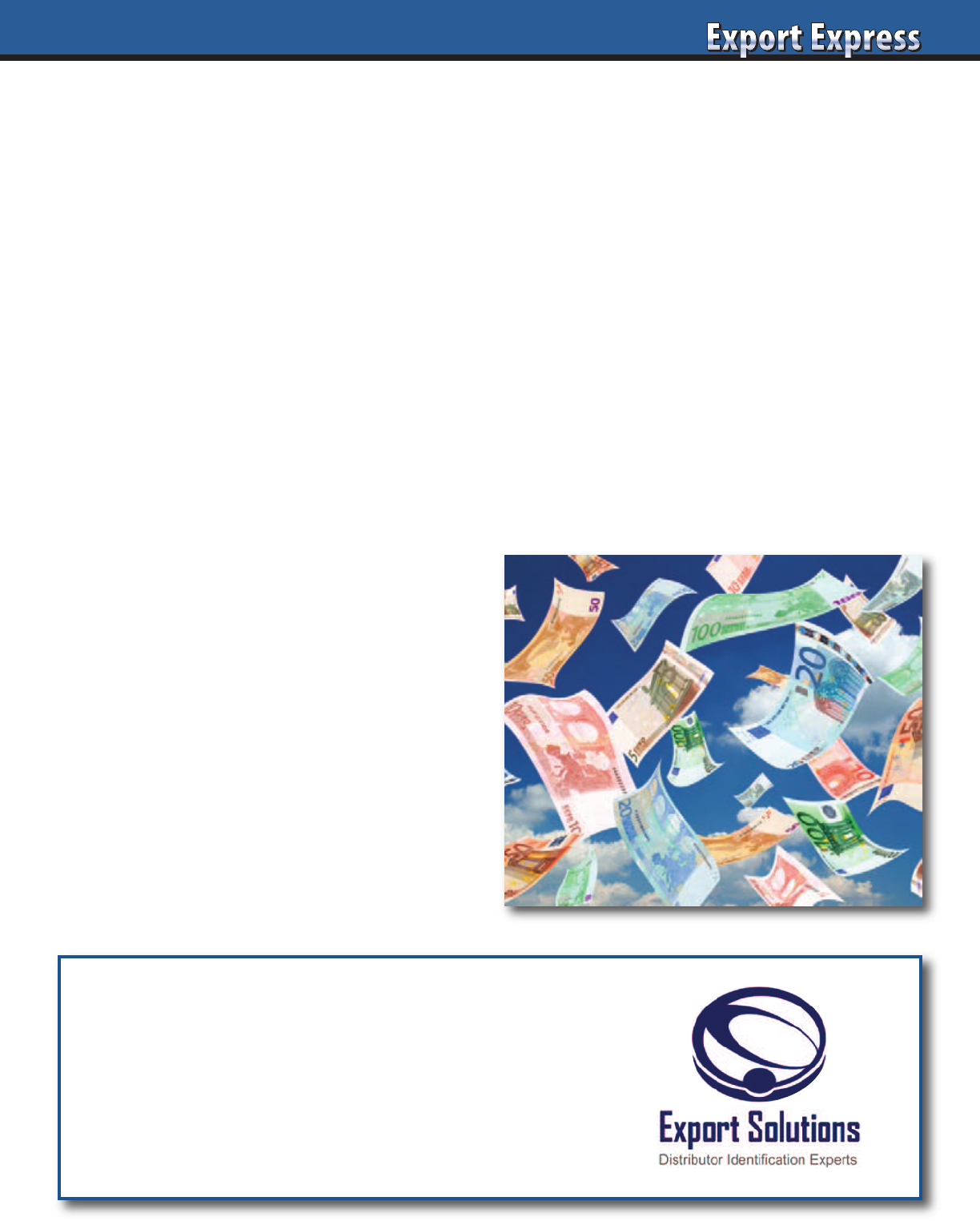
5
Money Matters 2022
Today’s export managers devote more time to finance issues
than their historical role as international brand builders. Global
managers are turning grey from problems in Russia, Ukraine,
and Venezuela. It’s virtually guaranteed that this month a new
crisis will evolve somewhere.
Few money issues should come as a complete surprise. Watch
for clues in distributors’ operations and organization. Study
country benchmarks published by The Economist or other
financial tracking services. Listed below are a few tangible steps
to consider to minimize risk and optimize your financial results
in 2022.
Update Credit History
2021 financial reporting should be completed by all distributors.
Now is a good time to request an updated credit history for all
partners. Recommend that your group finance manager handle
the request to create joint ownership of the issue and to avoid
sensitivity. Run a Dun & Bradstreet report for all distributors.
Track days outstanding trends for the last 24 months.
Review Pricing Calculation
Brand owners and distributors dedicate significant time to
wrestling over the pricing calculation prior to establishing
a relationship. As the years go by, the calculation may “drift,”
although input costs usually shift significantly. Why not take
a fresh look at your pricing model?
Time for a Price Increase?
Raw material prices and transportation costs have surged in
recent months. Many brand owners have taken cost justified
price increases. Retailers may complain, but they understand
the reality of changes based upon their own private label and
transportation costs. In many cases, the retailer may benefit from
a price increase if consumption remains stable and competition
follows the price hike.
Inventory Levels: Important Benchmark
Measurement of inventory through the supply chain is an
important indicator. The key metrics should always be in terms
of number of weeks supply on hand at the distributor and
retailer’s warehouses. Evaluation should be based upon trailing
12 week sales velocity or seasonal trends. Low inventory levels
could indicate cash flow problems. High inventory levels could
suggest sell through issues. Look at trends versus historical levels
and contractual agreements.
Retail Pricing Survey
When was the last time that you requested a market wide audit
of retail prices? Your competition may have adjusted their pricing
higher or lower without your notification. A price survey is also
valuable in advance of a price increase to measure “pre” and
“post” prices for your brand and category.
10% Challenge
Trade spending may be a wise investment if it drives profitable,
incremental sales. This is a good time of year to challenge
distributors with the question: “What type of spend levels
would be necessary to secure a 10% increase in shipments
(consumption) in the next 90 days?” Of course, in emerging
markets you may want to challenge the distributor for a 20-40%
increase or higher.
Distributors Need to Make Money Too
Distributors are squeezed, dealing with increased transportation
costs and demanding retailers. Calculate the gross dollars earned
by the distributor to represent your product. Consider the
financial implications of your requested activity to build your
brand. A healthy relationship is when both the brand owner and
distributor are making money.
Evaluating Distributors?
We can help!
Export Solutions performs
Distributor Search in 96 countries.
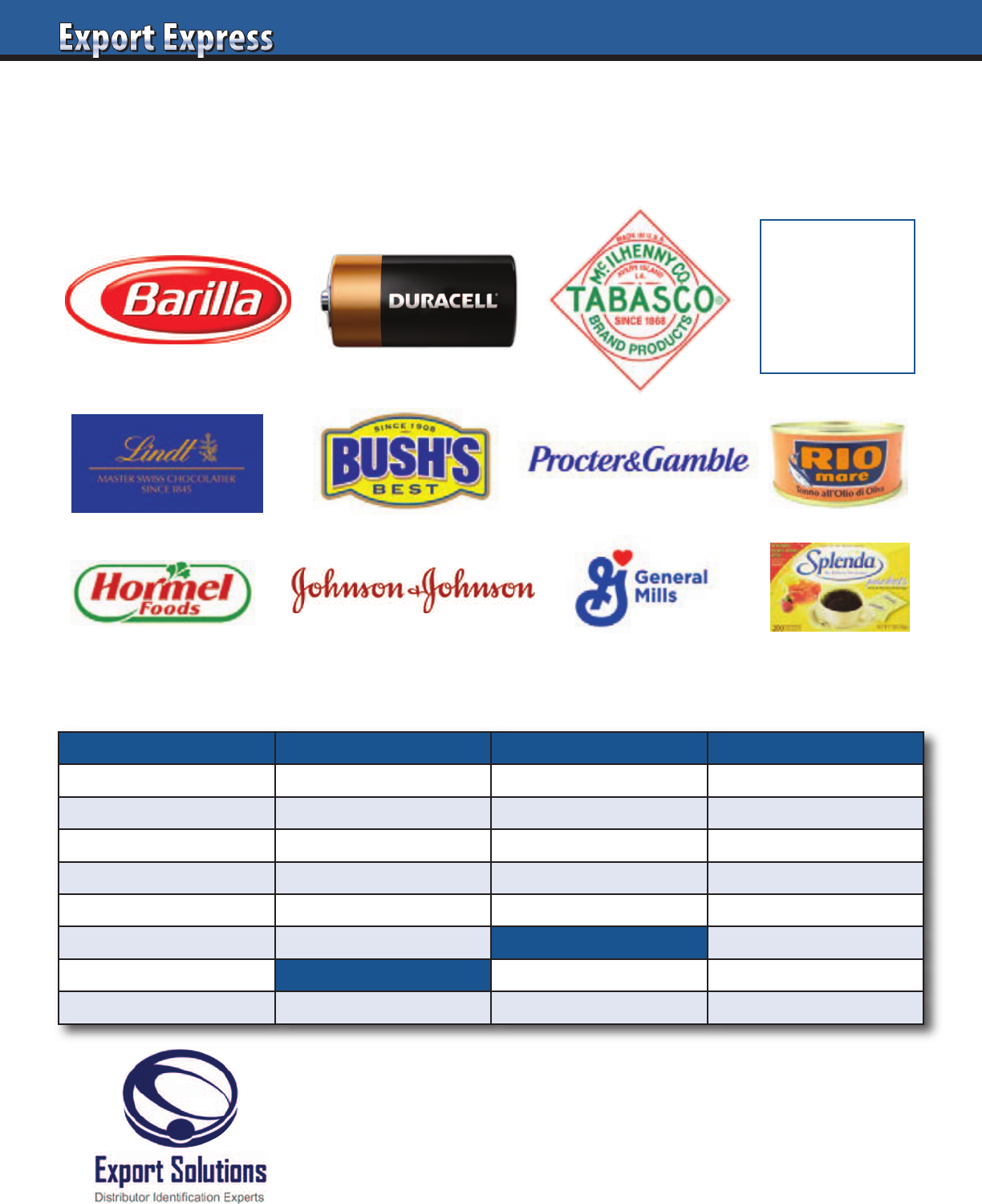
6
Distributor Search Helper for:
Your
Logo
Here
Can We Help You?
Recent Distributor Search Projects
Asia Europe Middle East Latin America
Australia Germany Israel Argentina
China Ireland Kuwait Brazil
Indonesia Netherlands Qatar Colombia
Japan Nordics Saudi Arabia Costa Rica
Malaysia Spain UAE Ecuador
Philippines United Kingdom North America Mexico
Singapore Africa Canada Panama
South Korea South Africa United States Peru
Call the Export Accelerator!
Contact Greg Seminara at greg@exportsolutions.com
to discuss your business development project.
www.exportsolutions.com
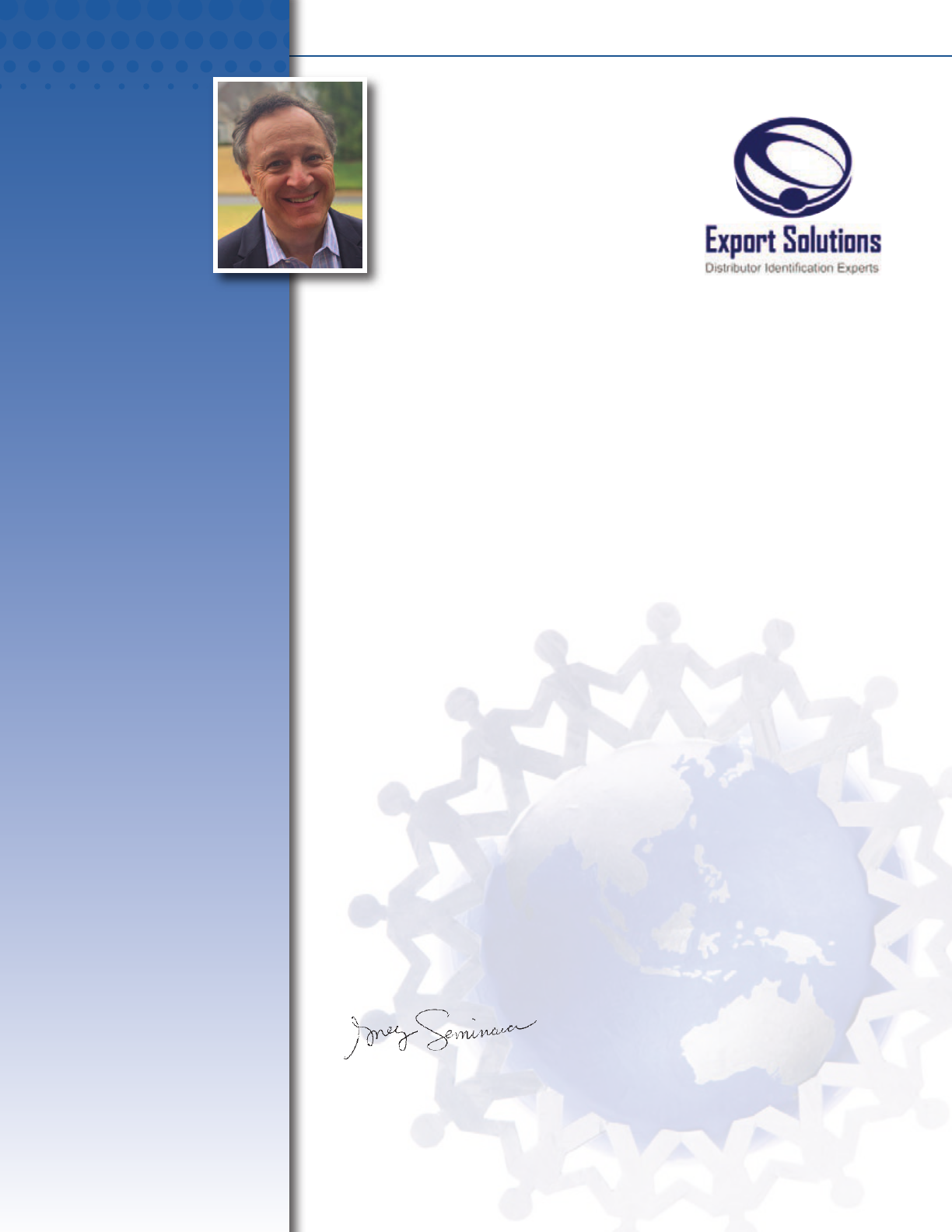
7
Shhhhh. Salary discussions are taboo.
Not here! I am actually opening the door to
a conversation on distributor compensation
or “salaries.” All business people are
focused on their personal salary and
attainment of available bonuses. Discussions
with our distributors measure movement of
containers or cases, without a whisper of
distributor profit implications or “salary.”
Many brand calculations were created in a
different era, with details now buried under
an unexamined grey cloud of secrecy. Exporters may be surprised at distributor
sophistication in understanding the cost to serve details of their supply chain.
A natural and necessary cultural change must occur from brand owners and distributors
to bring compensation discussions to the forefront. This advancement will position
producers to accelerate their business to the next level as “profitable preferred partners.”
Distributors will benefit too. Financial transparency should sustain the distributor
model, validating the fundamental right to earn a reasonable return for their efforts.
1. Analyze Your Profit Contribution to Each Distributor
Export Solutions identified 20 factors for consideration. A good idea is to complete
our template that helps you evaluate your company contribution to distributor profit.
How profitable is your company for your distributors?
2. Distributor Salary: Beyond Profit Margin
Distributors maintain multiple profit centers, just like manufacturers. Each supplier
maintains a unique cost to serve. Brands that deliver high sales and profits with a
limited range of SKUs are most attractive to a distributor.
3. Compare Outsourcing to Distributor Versus Direct Employees
The distributor model is an integrated solution, capable of serving as your “outsourced
subsidiary” in a country. Larger companies should compare the model versus the cost of
direct employees. Include backroom functions like HR and IT, as well as overheads such
as offices and telecommunications. Distributors are usually a “bargain.”
4. Is Your Distributor Compensation Model Relevant for 2022?
Global customers, online shopping, central delivery, field teams, currency swings,
and a hundred other factors have changed since original agreements were created.
When was that the last time that you reviewed your distributor pricing calculations?
5. Calibrate Distributor Work Demands to Compensation
Big company profit contributions may warrant dedicated resources. Smaller brands
may need to think twice about mountains of paperwork requests.
Brand owners must adopt 2022 strategies for investing in the continued financial health
of their top performing distributors. In other cases, lagging distributors may not be
delivering value for your compensation. Most salary discussions can be difficult, with
one party always feeling that they are “under paid.” The reality is that distributor
organizations generate positive cash flow for their owners. Brand owners that dedicate
the time to understand their contributions to a distributor’s profitability can reach a new
level of partnership alignment and business development.
www.exportsolutions.com
Greg Seminara
404-255-8387
“Spend Time Selling to Distributors versus Searching for Distributors”
Let’s Talk About Salaries
Strategic Services
Contact Us for
Export Solutions
1. Identify Best in Class Dis-
tributors: 96 Countries
2. Best Practices
Export Strategy
3. Distributor Management
Workshops
4. Export 101:
Let’s Get Started
5. New Market Prioritiza-
tion
and Launch Plan
6. Personal Distributor In-
troductions:
96 Countries
7. Walmart International
8. Distributor Contracts,
Margins, and Fees
9. Meeting Speaker
10. International
Strategy Expert
Strategic Services
Contact Us for
Export Solutions
1. Identify Best in Class Dis-
tributors: 96 Countries
2. Best Practices
Export Strategy
3. Distributor Management
Workshops
4. Export 101:
Let’s Get Started
5. New Market Prioritiza-
tion
and Launch Plan
6. Personal Distributor In-
troductions:
96 Countries
7. Walmart International
8. Distributor Contracts,
Margins, and Fees
9. Meeting Speaker
10. International
Strategy Expert
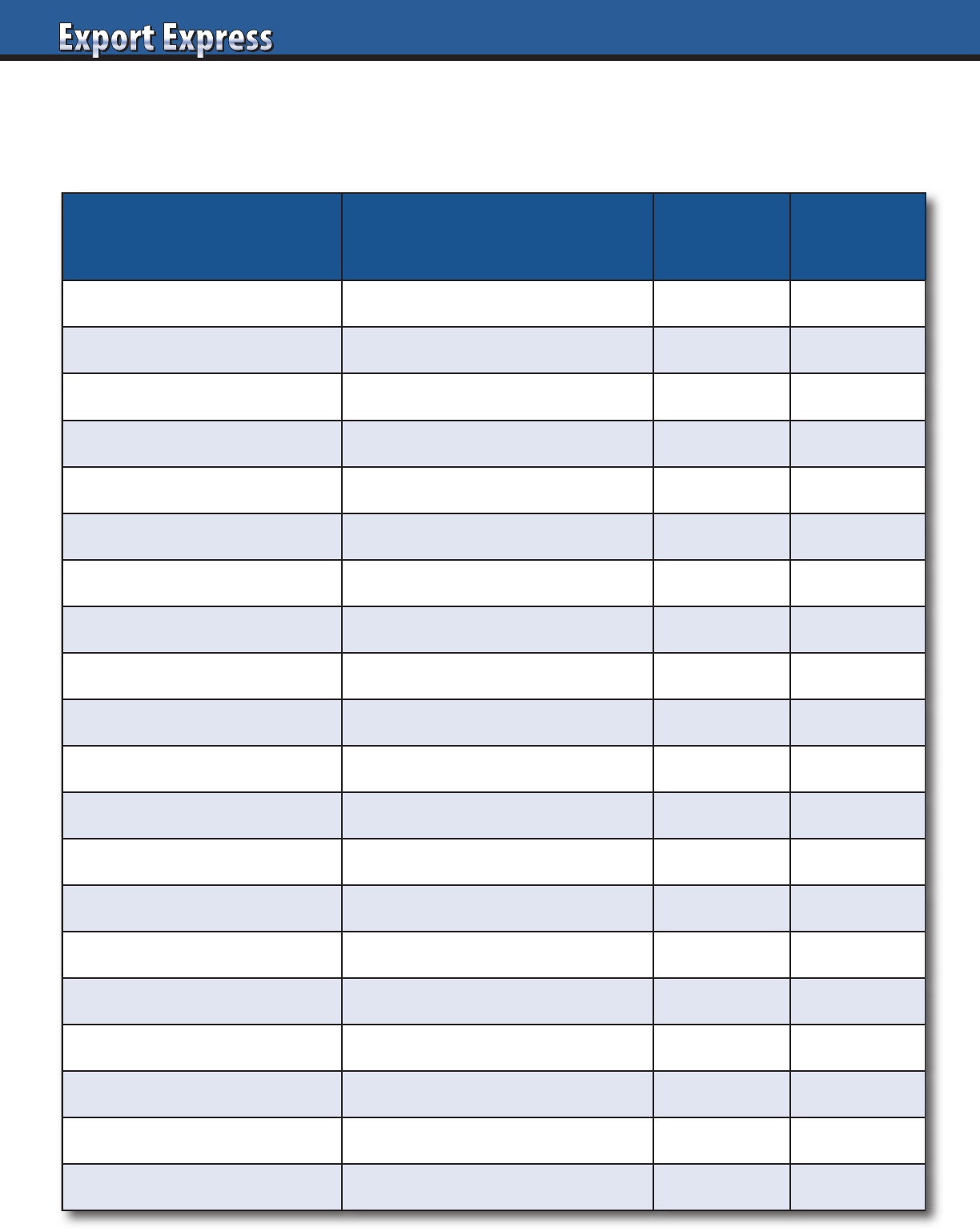
8
Analyze: Your Contribution to Distributor Profit
Export Solutions: 20 Factors Driving Distributor Profitability
Assessment Criteria
Considerations
Result
Rating:
(10 = Best)
Annual Sales Revenue • Percent total distributor sales
Annual Margin Generated ($) • Net sales times gross margin
Distributor Percent Margin
• 10 percent to 50 percent
Brand Owner Investment Level
• Percent of distributor purchases
Distributor Margin Re-Investment
• Distributor promotion spending
Category Adjacency • Distributor portfolio synergies
Brand Market Share
• Niche versus market leader
Payment Terms
• Pre-pay versus 120 day terms
Safety Stock Requirements • Two weeks to four months
Typical Customer Order • One case to full truck
Shelf Life • Two weeks to five years
Case Cube/Case Cost • “Low cube, high case cost best”
# Brands/Items in Range
• “High sales, fewer items valued”
Logistics/Storage: Temp?
• Ambient versus chilled
Damage/Expired Goods • None to 20% of sales
Category Competition
• Niche to highly competitive
Labor: Battle for Shelf Space
• None to intense fight
Brand Manager
• Shared or dedicated
Admin Requirements • Orders only to multiple reports
Manufacturer Visit Frequency
• Never to weekly
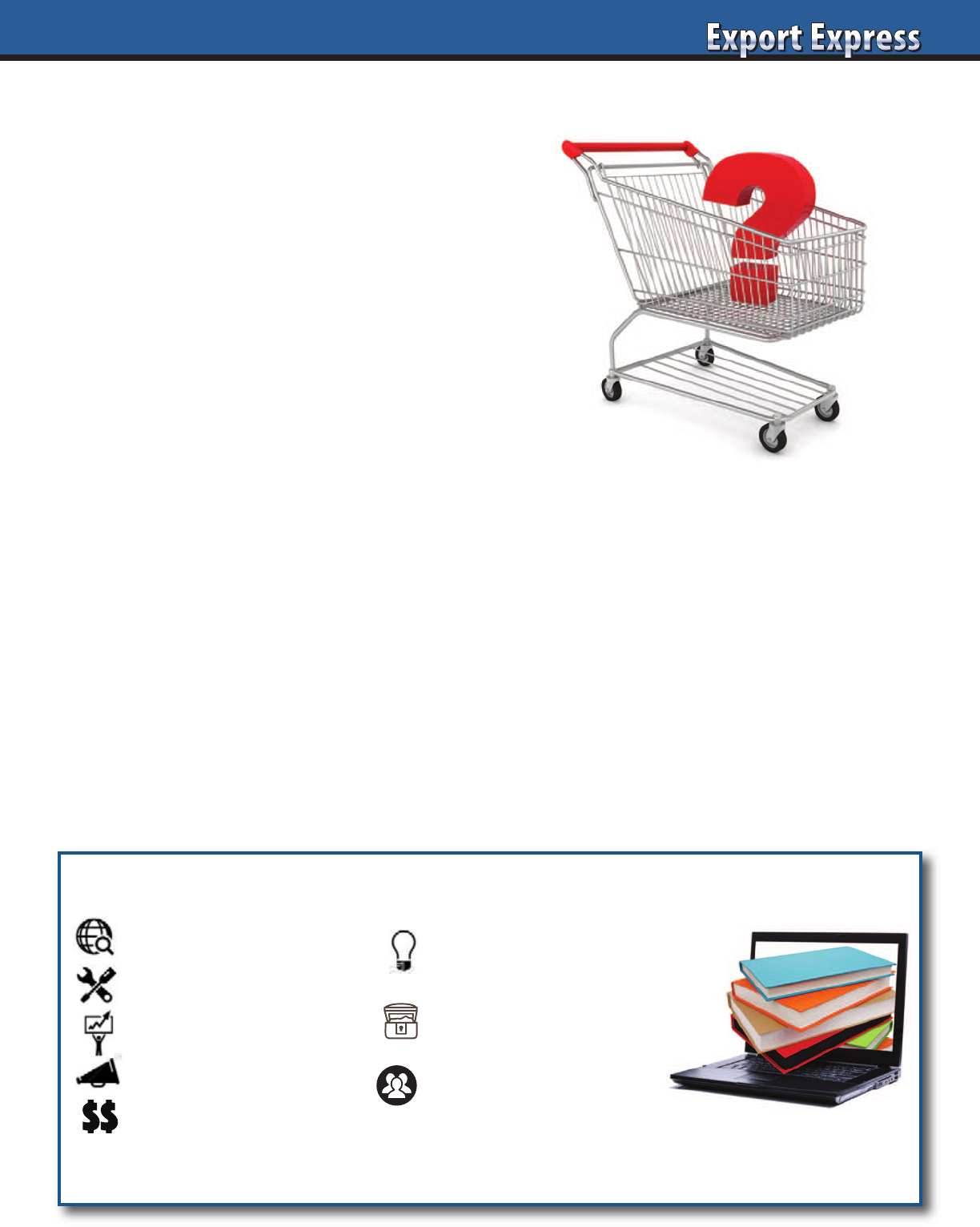
Pricing is a critical element of our marketing strategy.
The “calculation” defines all pricing inputs from a designated
port to the retail store shelves. Brand owners and distributors
invest significant energy developing a pricing model during
initial negotiations. My experience reveals that the calculation
tends to drift over time, fluctuating from the original guidelines.
This is natural, given changes in cost to serve inputs. However,
the calculation represents a fundamental ingredient to brand
success. Brand owners should review current models to ensure
an understanding of pricing for each country.
1. Do you possess your current pricing calculation from each market?
Many brand owners do not have current price calculations.
In some cases, distributors are reluctant to share them. The price
calculation, with suggested retail price, should be matched with
a retail price survey. This will allow you to compare (not control!)
the official model with “retail reality.”
2. What inputs are included in the price calculation? Any extra costs?
There are no standard price calculation models, even within
the same country. All distributors employ unique methodologies.
The key is to understand what is included and what inputs are not
included. You will also need to request definitions for some line
items. For example, financing in one model could be based upon
a Bill of Lading date in one scenario and delivery date in another.
3. What services are included in the Distributor Margin?
A financially healthy distributor is a good partner. Distributors
are entitled to fair compensation for their work on your brand.
It’s critical to understand what services are included in a
distributor margin. For example, in some scenarios, a distributor
offers a flat, “all inclusive” margin. In others, they may offer
a lower margin, but add an “admin” fee or profit allocation in
addition to the distributor margin. Are distributor margins the
same for all products in your portfolio? Does the distributor
margin change if you double or triple your sales?
4. Who pays for Trade Discounts and Promotions?
In many cases, the manufacturer covers 100% of these brand
specific investments. In other models, the costs are covered by
the distributor or split. The key is to understand who is
responsible and what is the planned investment. There is a big
difference in a distributor funding 1-2 small promotions per year
and funding monthly, high value, deep discount promotions.
5. How are price increases managed?
Price increases are a common activity in our business.
Manufacturers need to adjust prices to reflect fluctuations
in raw material costs, promotional support, and competitive
activity. Manufacturers should understand that some distributors
act as “single vendors” to a retailer. In some cases, distributors
can only implement pricing actions once per year. In other cases,
distributors may apply price increases (or decreases) against all
the brands in their portfolio.
6. How do you handle Currency Fluctuation?
This represents a critical point in certain countries and at times
emerges as an issue with worldwide implications. For example,
the euro/dollar exchange rate has fluctuated from .83 to 1.60,
settling around 1.12 as of today.
Six Questions Regarding your Distributor Pricing Calculation
9
Create Your Own Export Library
Distributor Search Guide
Export Handbook
Selling to USA Handbook
Distributor Management Guide
Finance & Logistics
All guides available free at www.exportsolutions.com in the Export Tips section.
Idea Guide:
New World – New Business
Export Treasure Chest
My Favorite Templates & Forms
People Power
Strong Teams Build Great Brands
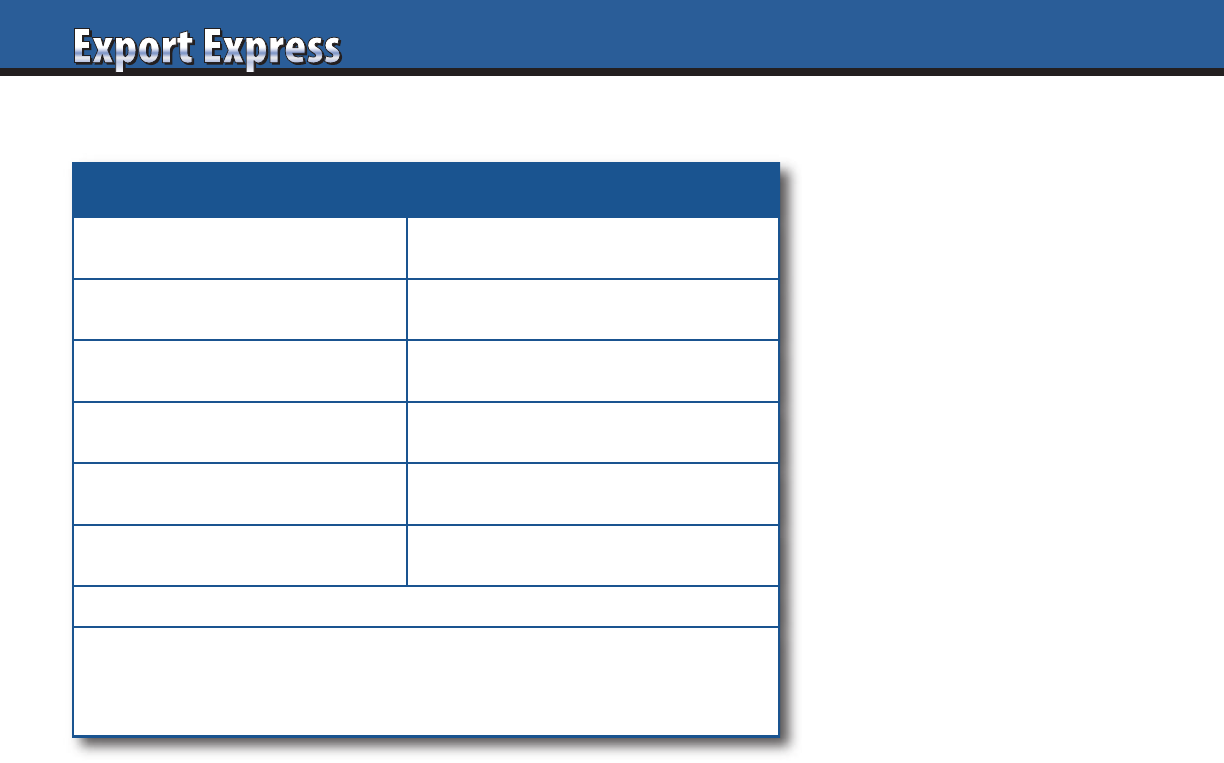
10
Cost to Serve: 5 Factors to Consider
Manufacturers must perform self analysis
to understand the costs required to service
their business:
1. How complex is your product line?
One category with 3-5 items is relatively
simple to manage. Or is your company in
many categories with 50-100 items to sell,
inventory, deliver, and merchandise in-store?
2. Logistics: Single largest cost for a distributor.
Freight and warehouse handling complexity
can vary widely by manufacturer. Key
factors include product cube, shelf life, sales
turnover, and typical order. Temperature
controlled logistics usually adds 5-10 points
of margin.
3. Retail Intensiveness. Certain brands
compete in large categories (confectionery/
drinks) with fierce competition for shelf
space. This demands constant attention
by the distributors/brokers sales force on
every store visit. Other brands require little
ongoing retail attention. In these cases,
distributor personnel must simply verify
that authorized brand sizes are available
at each store.
4. Seasonal Brand versus Year-Round Sales?
Naturally, it is easier for a distributor to
service a brand that has a narrow selling
season (Christmas Holiday) than a brand
requiring year-round focus.
5. Manufacturer Involvement and Visibility.
Does the brand require a dedicated brand
manager in the distributor to handle day-
to-day activities? How involved is the
brand owner? Do you speak to him daily
or several times per year? What is the
frequency of brand owners request for
information/reports and market visits?
Pioneering New Brands is Expensive
Brands new to a country bring no
immediate income and are risky for a
distributor. As a result, brands requiring
pioneering frequently experience higher
margins for distributor services. This
surcharge is driven by the fact it may take
up to a year from start until the distributor
derives a meaningful sales level and is paid
for his shipments of your new product.
Market entry planning can take 3 months,
followed by another 3-4 months to sell in
to retail availability. Marketing activities
begin and may take 2-3 months to generate
meaningful sales levels followed by retailer
payment 30-90 days later. Thus, a distributor
may be investing his organization’s
resources for one year before he gets paid!
In some cases, a manufacturer will offer
the distributor or broker a small, monthly
fixed retainer fee during the launch
planning period. This supplies income for
resources allocated before your partner
receives payment.
Marketing Investment:
How Much and Who Pays?
Brands with a strong financial
commitment to marketing should
generate higher sales for the distributor.
Marketing investments include spending
for consumer awareness activities such as
advertising and sampling, as well as trade
development events such as listing fees,
special displays, and in-store campaigns.
Brands with strong marketing budgets
typically enjoy lower margin structures.
In some cases, the distributors agree to
share the marketing costs as part of their
margin calculation. This practice may
apply to large brands or new products.
Distributor sharing of marketing
expenses may result in a slightly
higher margin, but also in increased
accountability, efficiency and a unique
sense of partnership.
What is the Size of the Prize?
Margins and commissions represent your
partner’s "salary." Brands with existing
business deliver immediate and reliable
cash flow. Most distributors’ costs
are fixed: sales force, warehouse,
management, administration, etc. Brands
with current sales deliver incremental
profits for the distributor by leveraging
the distributors’ existing infrastructure.
The distributor must offer a competitive
margin to attract these brands to deliver
a cost savings versus the brands current
organizational strategy. Manufacturers
with significant existing business are in
a strong negotiating position.
Bonus Incentives Versus Scale Discounts
Supplemental compensation schemes
may be used to incent distributors/
brokers or to obtain cost savings once
certain volume thresholds are reached.
One approach is to pay a bonus based
upon reaching critical annual sales
targets. In other situations, manufacturers
may structure margin calculations to
receive rebates/margin reductions once
business reaches a certain sales level. For
example, reduction of margin from 25%
to 23% once 3 million in sales are reached,
20% once 5 million in sales are reached.
Other plans call for a reduced margin
only on levels exceeding the thresholds.
For example 25% margin on first one
million in sales, 22% margin on sales
above one million.
Distributor Margins & USA Broker Commissions: What’s Fair?
Short Answer – Prevailing Rates*
12-20% Distributor Margin Leading companies with sizable budgets:
consumer marketing and trade promotion
20-30% Distributor Margin Mid-size companies with some investment:
marketing and trade promotion
30-50% Distributor Margin Niche brands or start-ups with little or no
upfront marketing investment
2% USA Broker Commission Leading companies/brands – full service
(HQ sales + retail)
3-5% USA Broker Commission Average size brands – full service
(HQ sales + retail)
5- 10% USA Broker Commission Niche brands or “start-ups” requiring
full service
Distributor margins do not include optional distributor contributor to trade promotion
*Distributor margins and broker commissions can vary based upon local factors such
as retail requirements, logistics costs, financing fees, and complexity of servicing a
manufacturers business. Contact Export Solutions to discuss typical margins/com-
missions for a specific country or brand.
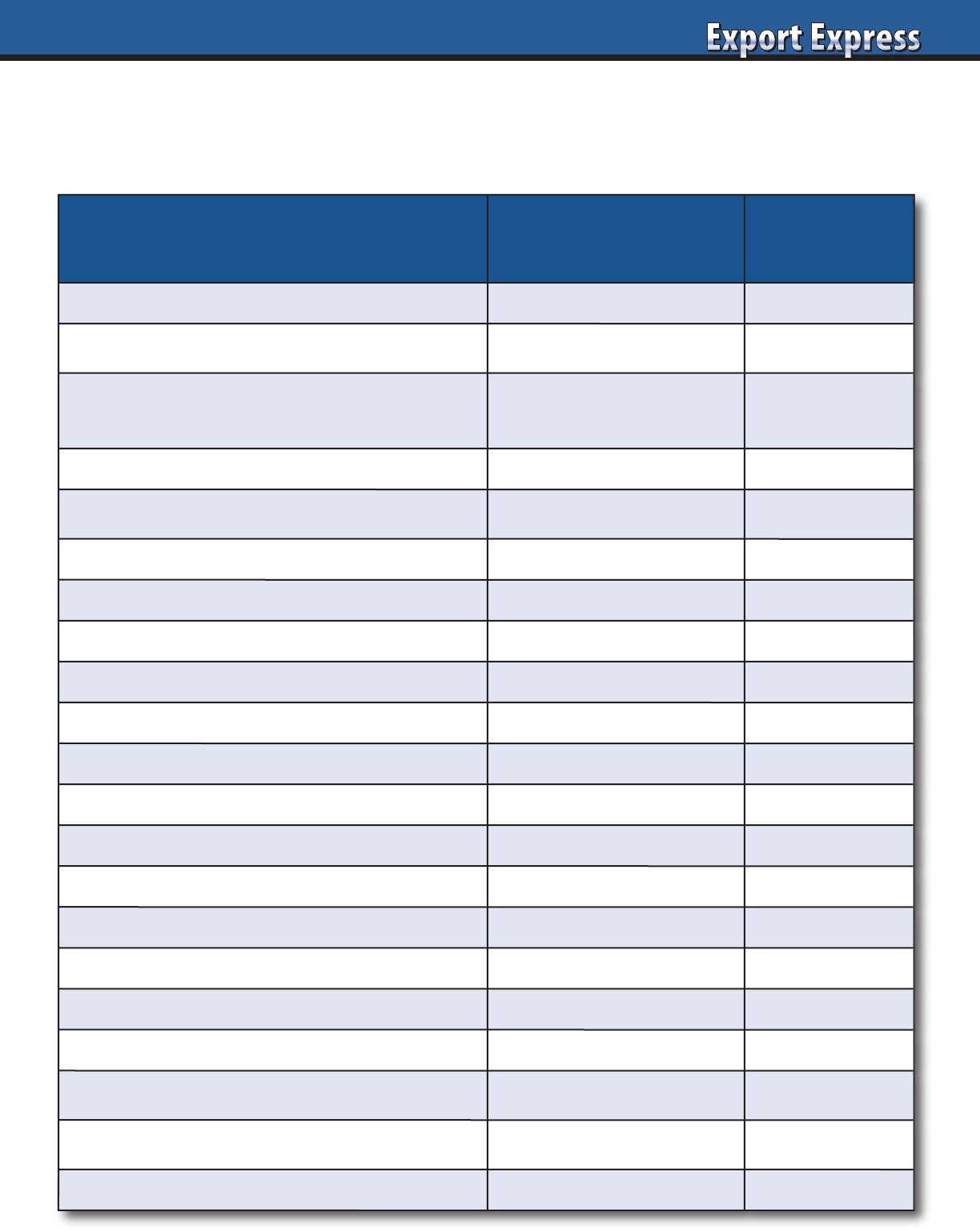
11
Cost Calculation Assessment*
*Ambient grocery example: Higher margins – Chilled and Health & Beauty products
Assessment Criteria
Global
Benchmark
Actual
Retailer: Everyday margin
20-35%
Retailer: Back margin (rebates,discounts)
0-10%
Retailer: Other margin
(Damage, merchandising, central warehouse)
0-5%
Total Retailer Gross Margin
25-40%
Trade Promotion (Manufacturer)
5-20% of net sales
Total Distributor Margin
15-35%
Warehouse/Stickering
2-4%
Delivery
2-5%
Total Distributor Logistics
3-7%
Key Account Sales
1-3%
Brand Management
1-2%
Merchandisers/Field Force
0-4%
Total Distributor Sales Team
4-6%
Administration
1-2%
Finance and Collections
2-5%
Overheads (office, IT, corporate)
2-5%
Distributor Promotion Investment
0-10%
Distributor Net Profit
2-5%
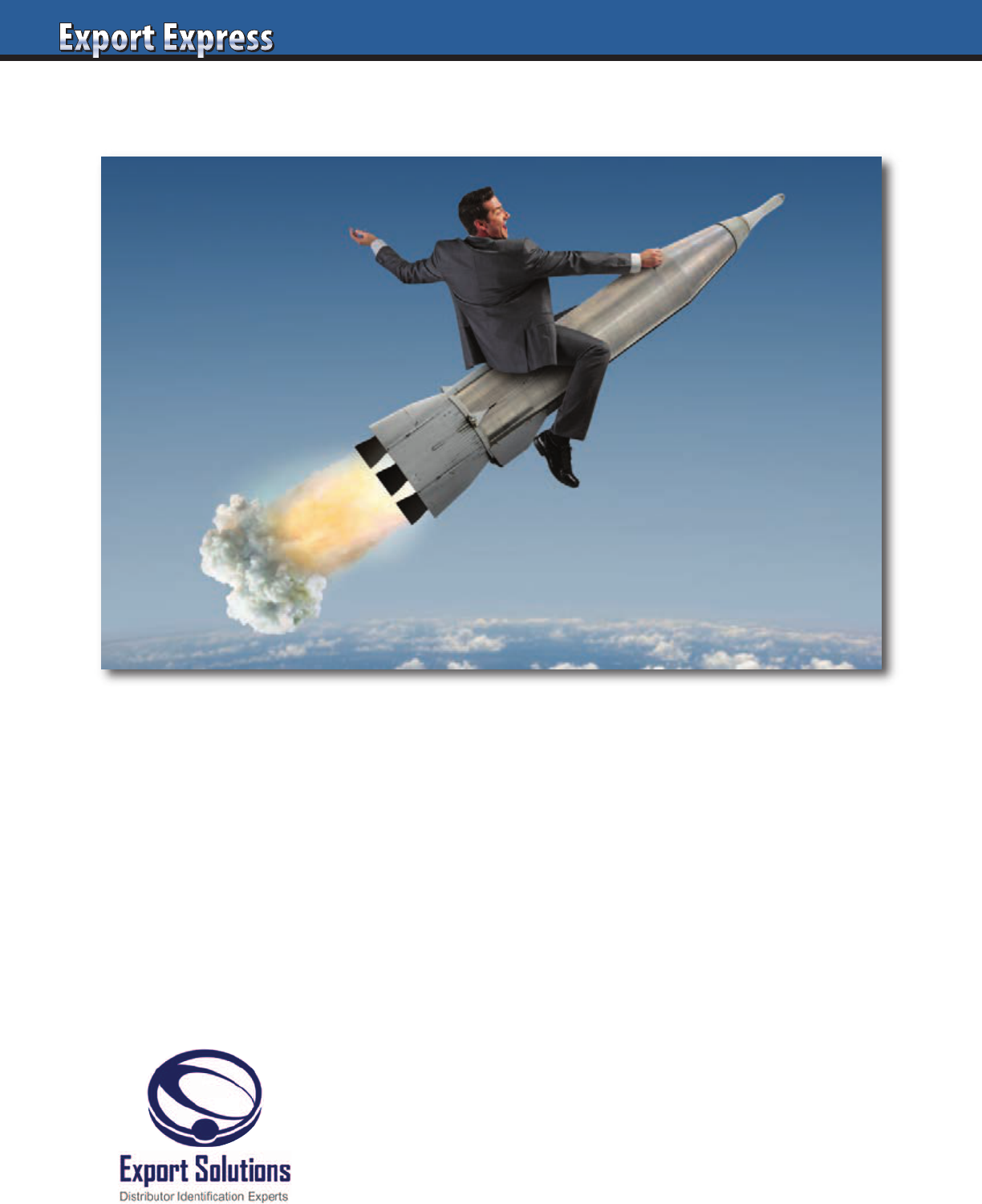
Export Accelerator
Contact Us for Distributor Search Help in 96 Countries
Greg Seminara • greg@exportsolutions.com
“Spend time Selling to Distributors versus
Searching for Distributors”
12
Why have Barilla, Pringles, Nature Valley, Starbucks, Duracell,
Nestlé, Tabasco, Pepperidge Farm, and other leaders used
Export Solutions as a distributor search consultant?
• Powerful distributor network: owner of industry database
9,200 distributors – 96 countries
• Professional 10 step due diligence process
• Results! We make Export Managers’ lives easier!
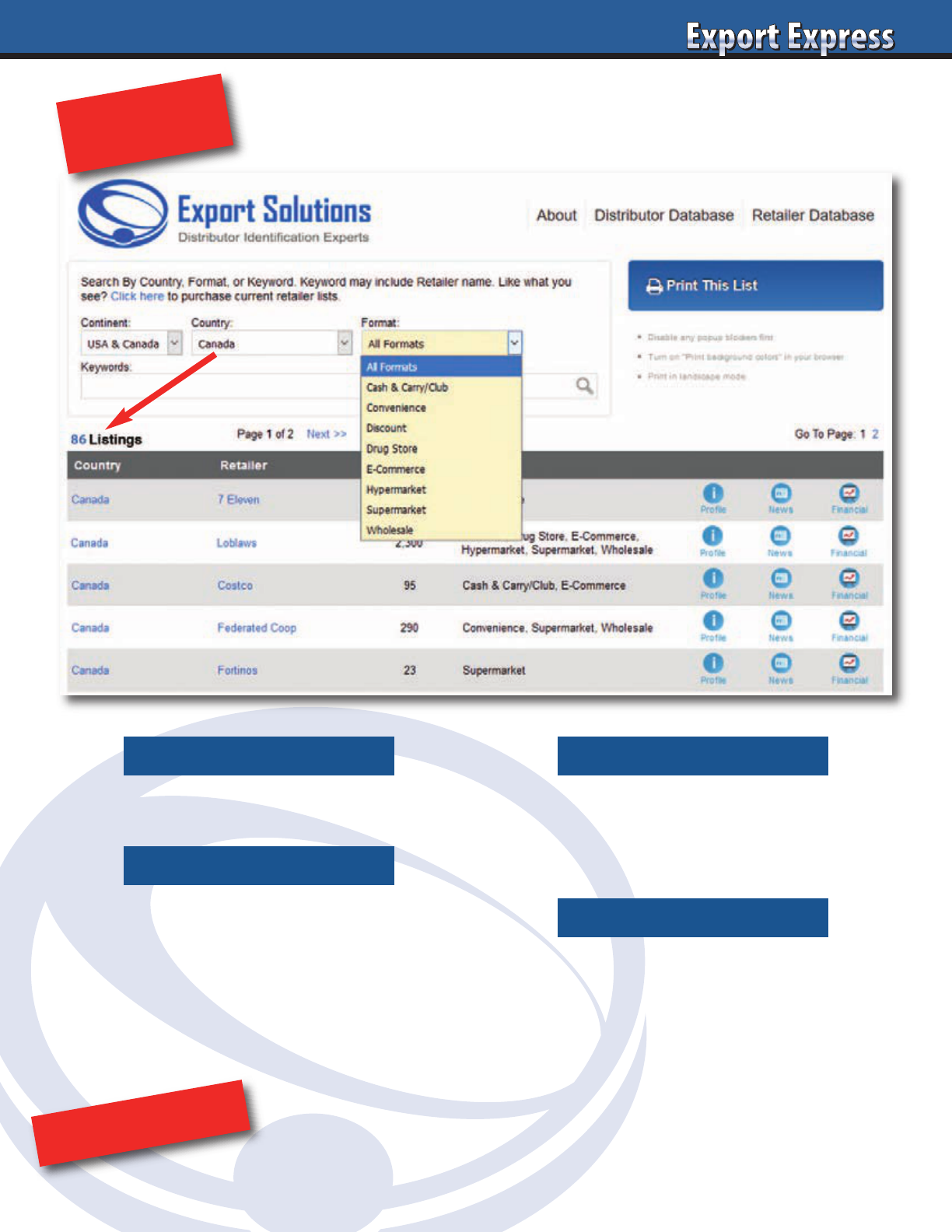
Coverage: 96 countries and 2,700 retailers
Supermarket
Convenience
Drug Store
Natural Food
Club, Cash & Carry
Supplying profiles, store counts, formats,
news and info for Top 100 international
retailers plus all overseas branches
Example 1: Who are supermarket
retailers in Canada?
Example 2: How many stores does Loblaws
operate by banner, in Canada?
NEW!
ORDER NOW!
13
Search by Retailer NameSearch by Country
Combo Search
www.exportsolutions.com
Search By Format
Retailer Search Made Simple
Canada Example
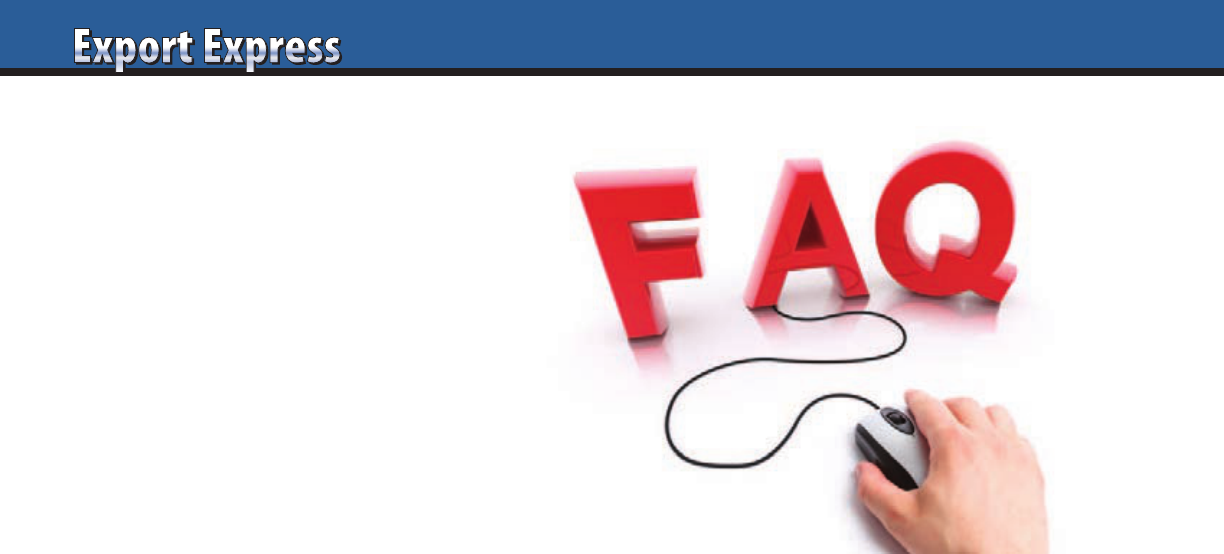
14
Why did you create the retailer database?
Export managers dedicate a lot of time
to researching countries, retailers and
preparing business plans. A standard
KPI measure is tracking product listings
for key customers. I believe that our
industry could benefit from a global
retailer database to instantly locate
retailers and their store counts in
96 countries. The retailer database
is a logical extension of our leading
distributor database which has helped
more than 3,000 companies build export
sales during the last 10 years.
What is your geographic coverage?
96 of top 100 GDP countries worldwide.
This includes most Asian, Middle Eastern,
and European countries. Our database
covers every country in the Americas.
In Africa, we cover South Africa.
What is your format coverage?
Excellent coverage of chain supermarkets,
hypermarkets, clubs, cash and carry,
and convenience formats. Solid initial
coverage of drug stores, natural food
stores, and e-commerce channels.
Our database does not cover
DIY/hardware, toy, office, liquor,
or sporting goods channels.
Retailer database: featured info
Profile – Retailers profile and link
to their internet home page.
Formats – Retailer’s stores segmented
by format and banner.
We track supermarkets, hypermarkets,
cash and carry, convenience stores,
discounters, drug stores, natural food
stores, and e-commerce retailers.
News – Latest retailers’ news. In some
cases (Asia), we substitute a link to the
retailer’s latest promotional flyer.
Financial – Many leading retailers are
publicly traded. A link is provided to
their latest financial results. We do not
offer estimated financial information for
privately held or family owned retailers.
How is your coverage of global retailers?
We offer total coverage for top 100 global
retailers. This includes all of their
branches and banners. Searchable!
Use filters to research Walmart, Costco,
Carrefour, Tesco, Metro, Casino presence
by country. Database covers retailer’s
total store outlets as well as a breakout
by banner and format.
What can I use the retailer database info for?
• Obtain an instant snapshot of an
average of 24 retailers per country
for 96 countries.
• Track presence of global retailers like
Walmart, Carrefour, and Metro AG.
• Create country specific listing maps
where distributors measure brand
authorization by retailer.
• Conduct home office based
international category reviews
and price checks from retailers’
e-commerce sites (not all retailers).
• Prepare annual reviews and reports
with up-to-date information on
leading retailers and channels.
Searchable
The database offers filters allowing you
to search by country, format, or retailer
name. You can also use a combination
of filters for your research.
Can I get a free sample
of the retailer database?
Sure! Check www.exportsolutions.com for a
complete profile of United Kingdom retailers.
Do you provide retailer’s annual sales
or market share information?
Accurate annual sales information is
available through the financial link for
publicly traded companies. We do not
provide estimated financial information
for privately held and family owned
retailers. Channel blurring occurs
between supermarket, convenience,
e-commerce, and even natural food
operators. We do not provide market
share due to difficulty to accurately
isolate and define channel market share
information, particularly with so many
privately held retailers.
How accurate is the retailer data?
Export Solutions’ retailer database is
updated weekly, so information is highly
accurate. Retailer names, web sites, and
formats rarely change. This makes the
database 99% accurate at the company
level. New stores open every day,
resulting in store counts that may be 95%
accurate. We intend to update store
counts on a regular basis.
How much does retailer database access cost?
An annual subscription to the retailer
database is $975. This supplies one year,
unlimited access to more than 2,700
retailers in 96 countries. Special offers
available for our distributor database
customers. Note: special pricing for
government trade organizations.
How do I access the retailer database?
Visit www.exportsolutions.com and click
the retailer database page. You can place
a subscription or individual continent
(i.e., Europe) into a shopping cart.
Register and check out via credit card.
The process takes two minutes and we
automatically send you an invoice.
About Export Solutions
Export Solutions was founded in 2004
and is based in Atlanta, Georgia in the
USA. Export Solutions serves as a leading
provider of business intelligence to the
food and consumer goods industries.
Our distributor database covers 9,200
distributors in 96 countries and has been
used by more than 3,000 clients. Our
Export Express newsletter has a circulation
of 9,900 and is viewed as an important
source of insights, strategies, and
templates for international development.
www.exportsolutions.com.
FAQ’s – Retailer Database
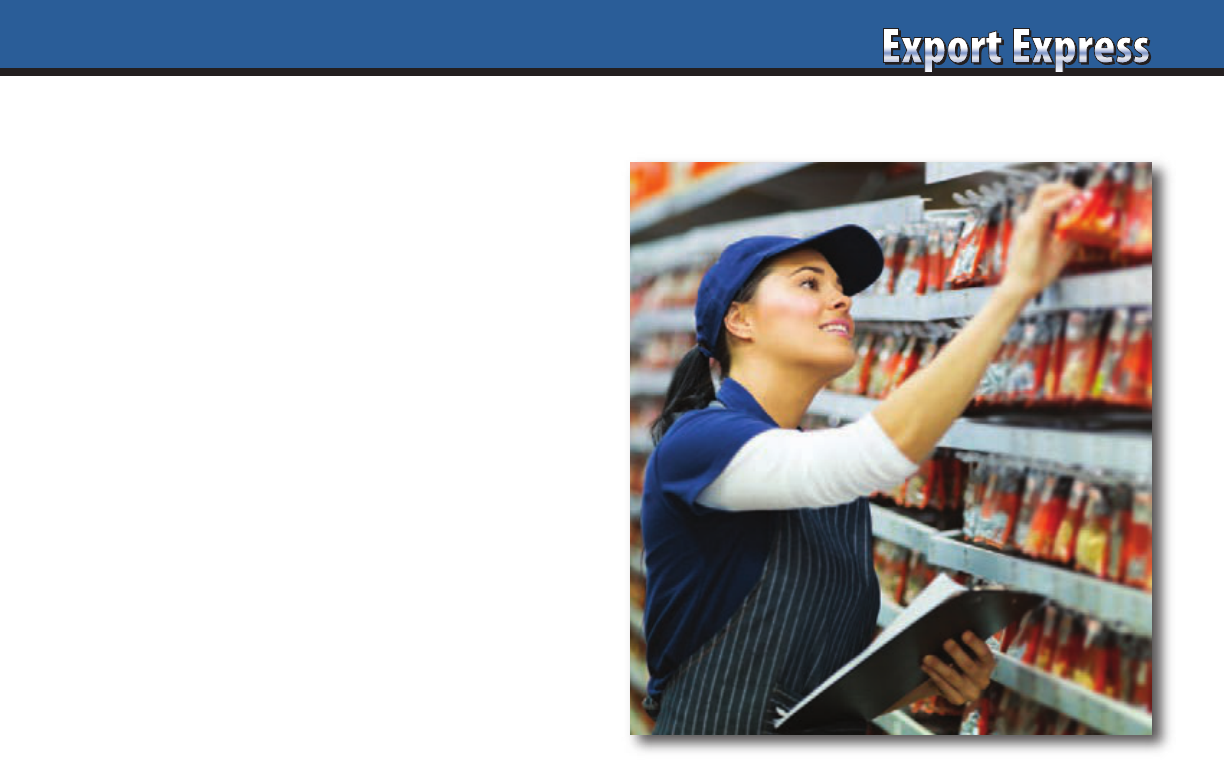
15
I just returned from Central America where retailers such as
Walmart, Auto Mercado (Costa Rica), and Super 99 (Panama)
suffer from out of stock conditions due to direct import practices.
A retailer’s primary objective is to maximize sales, which is
tough to achieve if there are gaps on your shelf as you await
the next container from the USA. “Service” defines best-in-class
manufacturers like Coca Cola and distributors which maintain
local inventory and strong commitments to keeping in store
product showrooms “looking good.” Listed below are Export
Solutions’ Ten Tips why an international retailer should source
your brand from a local distributor versus waiting for a direct
shipment from your central factory.
1. Local Inventory: 24-48 Hour Delivery
Local distributors promise 24-48 hour delivery, instantly
correcting costly out of stocks. Direct import supply chains may
take up to six weeks for inventory replenishment. We have all
witnessed situations where a retailer allows 1-2 items to run out
of stock for weeks to wait to place a consolidated order or to
encourage sales of a size where they are overstocked.
2. Brand Building vs. Availability
Direct import brands look lonely on the shelf, without any
activation or promotion. I remember the case of Hidden Valley
Ranch, the leading USA salad dressing from Clorox. I was
thrilled when it showed up on the shelf of my Walmart in Buenos
Aires. However, I was one of a few homesick expats who knew
about Hidden Valley. Without support, the brand gathered dust
and was discontinued.
3. In-Store Merchandisers: Emerging Markets
In-store merchandisers or distributor appointed “shelf stockers”
represent an essential function across Latin America, Asia,
and the Middle East. Large distributors maintain armies of
merchandisers to fight for shelf space and brand presence for the
brands that they represent. Retailers typically offer “prefunctory”
stocking for direct import brands, with low level of compliance
versus agreed to terms. I recall a situation in Mexico for a leading
USA beverage brand. The retailer had complained about slow
rotation of the direct import brand. We checked stores and saw
that only 2 of 4 sizes were typically cut in on the shelf, with
items relegated to the bottom or top shelf, nowhere near
“planogram promises.”
4. Distributors: Local Category Advisors
Distributors understand local taste preferences and share trends
from other market customers. In emerging countries, normally
there is a preference for smaller sizes than the family packs
offered in USA or European supermarkets.
5. Problem Solving: Pricing, Shelf Tags and More
Success in the consumer goods industry requires focus on the
myriad of details from the factory to the store shelf. Without a
distributor, difficult to identify and correct routine problems like
incorrect pricing, missing shelf tags , and misshelved goods.
6. Promotions Drive Trial and Tonnage
Local distributors offer periodic promotions to stimulate sales.
Typically, this translates to price discounts, but can also include
sampling, banded packs, and joint displays. Direct import brands
usually sit on the shelf without the benefit of local activation.
7. Point of Sale Material and Stock Rotation
Emerging markets permit point of sale materials which
encourage sales. Distributors provide special display pieces
or trial size shippers. Merchandisers rotate stock regularly
to facilitate “first in, first out” movement.
8. Damaged, Expired Goods or Product Recall
Local distributors provide a valuable service on returned goods.
This allows a retailer to remove out of date or damaged products
for a credit. With direct imports, the sub-prime product lags
unattractively on the shelf, with no one focused on replacement.
9. Payment Terms
Distributors offer retailers 30-60 day payment terms. Smart
retailers fund their inventory from the “float,” buying and selling
goods before the payment is due. On direct imports, retailer
needs to tie up his money in inventory, in some cases paying in
advance and then storing goods until the unsupported brands
sell. Is this the best use of capital?
10. Retailers: Support Your Local Distributor Community
Distributors represent small/mid-size local businesses
which provide jobs to members of the community. Distributor
employees are shoppers too, likely to shop at customers that
are supporting their company.
Success: Create Total Country Customer Strategy
Export Solutions recommends dealing with a local partner
(distributor) who is capable of serving all market customers.
This allows you to optimize sales and maintain pricing
equilibrium. Retailers attempting to buy direct offer the
temptation of short term volume, but rarely translate to
long term brand building for the supplier.
Retailer Benefits: Purchase from Local Distributors
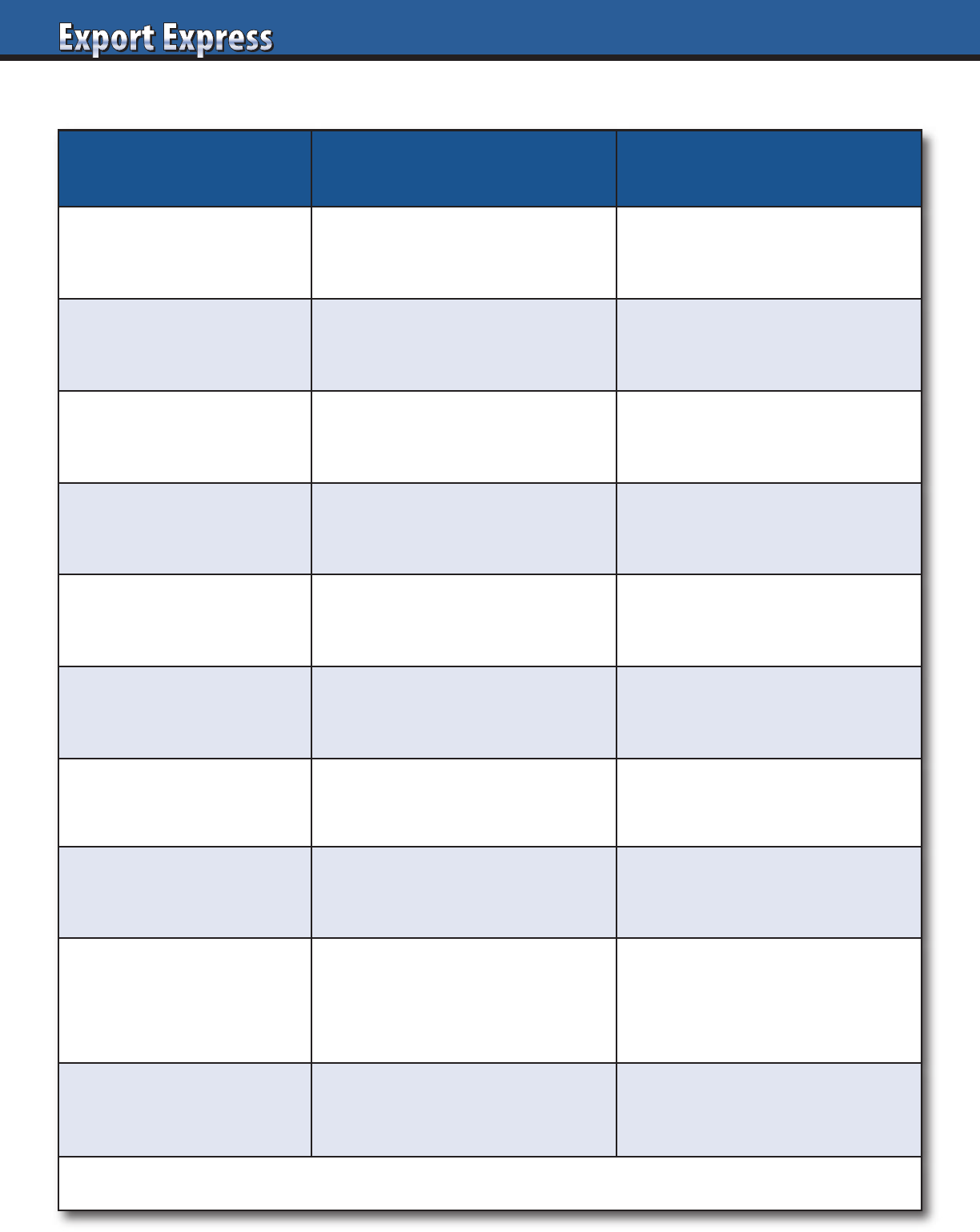
Reduce Export Diverting
Activity Bad Practice Best Practice
Logistics
Allow factory pickup or
delivery to USA* port
Ship directly to distributor
Label USA* pack, 100% English
Translated to distributor’s
language
Distributor Profile
Small company with no
web site or brand references
Well known local distributor
handling other global brands
Pricing
Low price combined with
USA* port pickup
Export pricing model,
ship directly to distributor
Partner Due Diligence Start partnership without visit
Extensive evaluation,
including in market visit
Pack Size Standard USA* package
Special “multi language” pack,
labeled “Export Only”
Store Check No trip to check stores
Annual visit to document store
conditions and warehouse stock
Listing Map No customer level information
Report local product
authorization, by retailer
Syndicated Data No data
Obtain data to compare
purchase levels with
market consumption
Reference Check
No financial
or commercial checks
Check current principals plus
financial institutions (D & B)
* For Made in USA brands
16
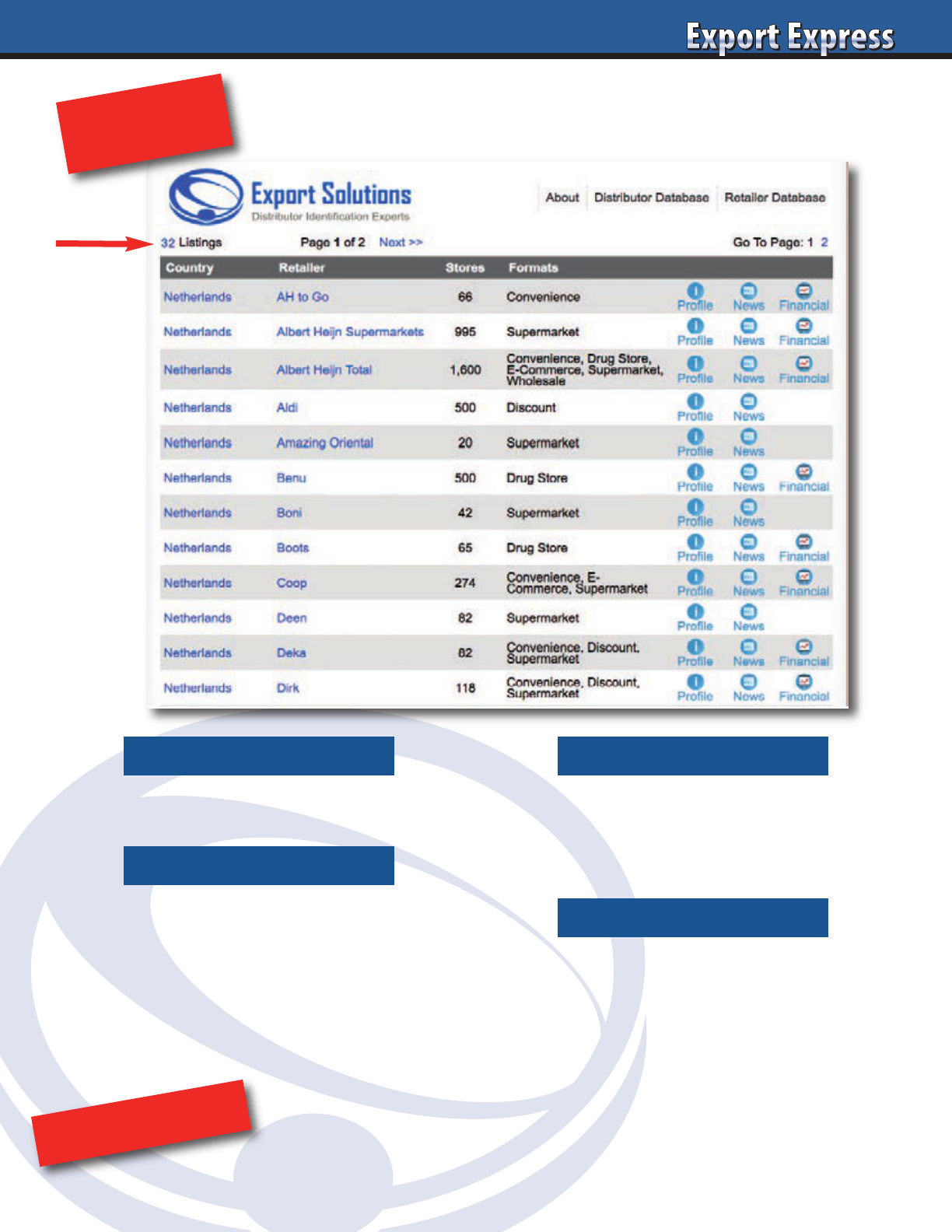
Coverage: 96 countries and 2,700 retailers
Supermarket
Convenience
Drug Store
Natural Food
Club, Cash & Carry
Supplying profiles, store counts, formats,
news and info for Top 100 international
retailers plus all overseas branches
Example 1: Who are supermarket
retailers in the
Netherlands?
Example 2: How many stores does
Albert Heijn operate by banner,
in the Netherlands?
NEW!
ORDER NOW!
17
Search by Retailer NameSearch by Country
Combo Search
www.exportsolutions.com
Search By Format
Netherlands
32 Retailers
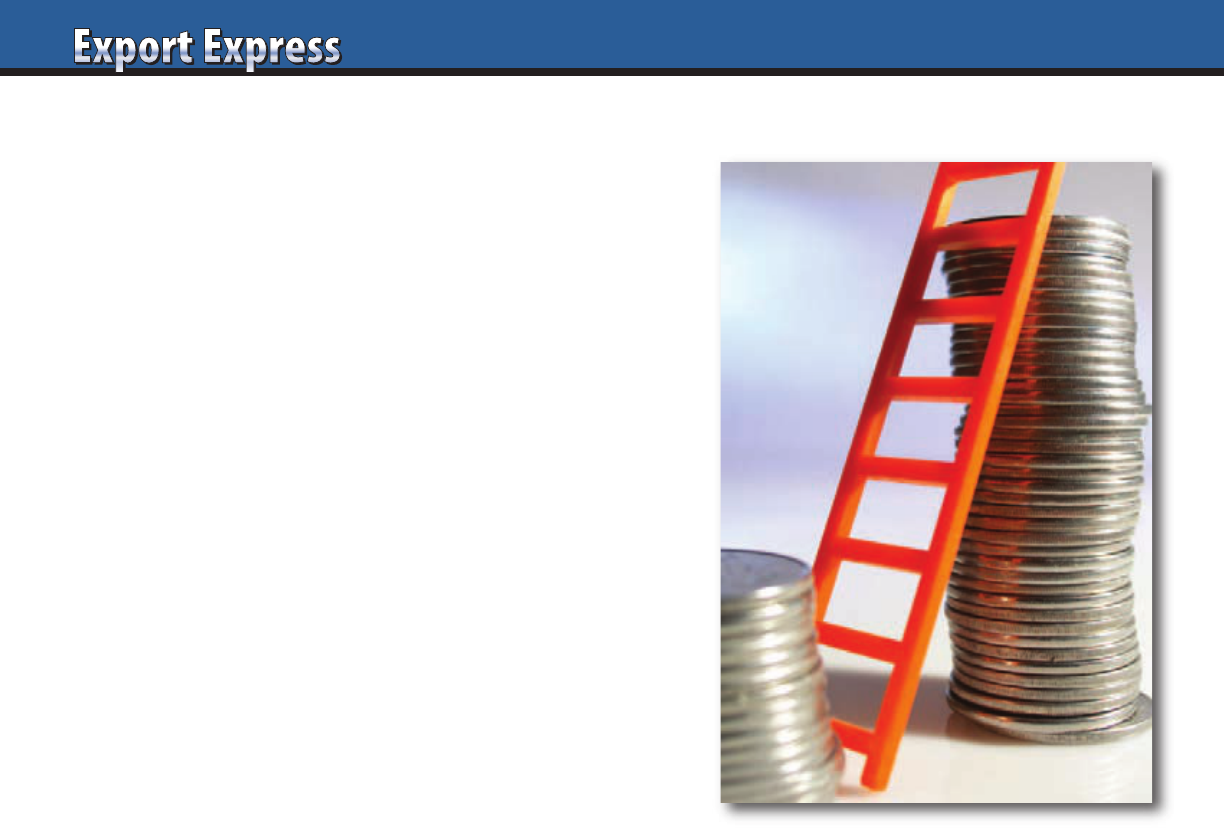
18
Everyone knows their own salary.
But have you given much thought
to the compensation structure for
your distributor partners? Distributor
compensation is often a “murky” issue,
buried in a calculation created years ago
focused on a combination of distributor
margin plus other income for services
rendered. Brand leaders periodically
review their distributor compensation
structure and compare it to the
requirements to service their business
in 2022. Listed below are Export Solutions
“Ten Tips” for analyzing your distributor
compensation model.
1. Convert Distributor Margin
to Gross Dollars Earned
Margin percentages are important,
but another critical measure is absolute
income derived from representing your
brand. This simple calculation of gross
margin multiplied by invoiced sales
provides a baseline number. If applicable,
manufacturers should add bonuses or
subtract retailer rebates.This is the first
step to understanding your true
distributor compensation.
2. Shared Service Model
Typical distributor services may include
importation, warehousing, delivery,
selling, merchandising, invoicing, and
collections. In some cases distributors
reinvest a portion of their margin in trade
discounts or in store marketing activities.
Another major distributor expense is
people, including senior management and
a brand management team. Income from
your brand margin buys your company
a share of total distributor resources.
3. Value Equation:
Distributor vs. Local Subsidiary
An important exercise is to evaluate the
services received from the distributor
relative to what they would cost if you
needed to create your own independent
subsidiary in a country. Your analysis
should include subsidiary allocations
for buildings, information technology,
telecommunications, travel, and
entertainment. Normally, the result
demonstrates that the distributor model
is an efficient outsourcing alternative.
The key is to balance your many company
objectives versus the requirement to
function in a “shared services”
environment where you are “buying”
only part of the distributors time.
4. Pay For Performance
Most food and consumer
goods industry executives
operate in a compensation
structure which includes a
bonus incentive for achieving
and exceeding assigned goals.
Some brand owners have
extended this approach to
distributors so that the entire
team is aligned on a common
plan. All distributor bonus
schemes should reward cases
moved into consumption
versus warehouse inventory.
5. Price Increases mean
Distributor Pay Raise
Many suppliers were fortunate
enough to execute price
increases. In a margin driven
structure, this often translates
to a pay raise for the
distributor, with little
incremental effort other
than implementing the price
increase. On the other hand,
a price decline means a
reduction in distributor
compensation and the
distributor needs to execute
his own “salary” reduction!
6. Contracts and Margins from the 1990’s
Many distributor contracts and margin
calculations date back to the 1990’s or
many years earlier. These agreements are
rarely revised or reviewed based upon
the realities of competing in today’s
marketplace. When was the last time that
you reviewed your Distributor contract,
margin, and service requirements? Does
it still make sense?
7. I don’t know my distributor’s margin
This happens more frequently than you
might imagine. In many arrangements,
the distributor buys your brand at a dead
net price and applies their own internal
methodology for margin development.
Some distributors are protective of this
practice with a rationale that manufacturers
should not “pry” as long as shipments
maintain a positive trajectory.
8. Best in Class Distributor Compensation
Leading Distributors offer an open book
approach based upon a cost to serve
model. Financially astute distributors
provide new suppliers a detailed
template identifying key services and
manufacturers requirements to operate
the business. Smart manufacturers will
benchmark their distributor margin
versus similar brands in the market.
Key inputs include complexity of your
product line, logistics inputs (temperature
requirements, case weight) and size of
your business.
9. Total Compensation:
More than Gross Margin
Examine every line item in your market
price calculation to understand total
distributor revenue sourced from your
brand. Distributors may increase their
income through promotional funds,
added margin for logistics services,
or periodic bill-backs.
10. Distributors have Profit Targets Too!
Distributors are in business to make
money too! It is quite reasonable to
expect that the distributor should
realize a net profit of 3-5 percent.
Everyone hopes to grow their salary
base and receive bonuses for excellent
performance. Winning long term
relationships exist when both parties
profit from business success.
Ten Tips – Distributor Compensation Analysis
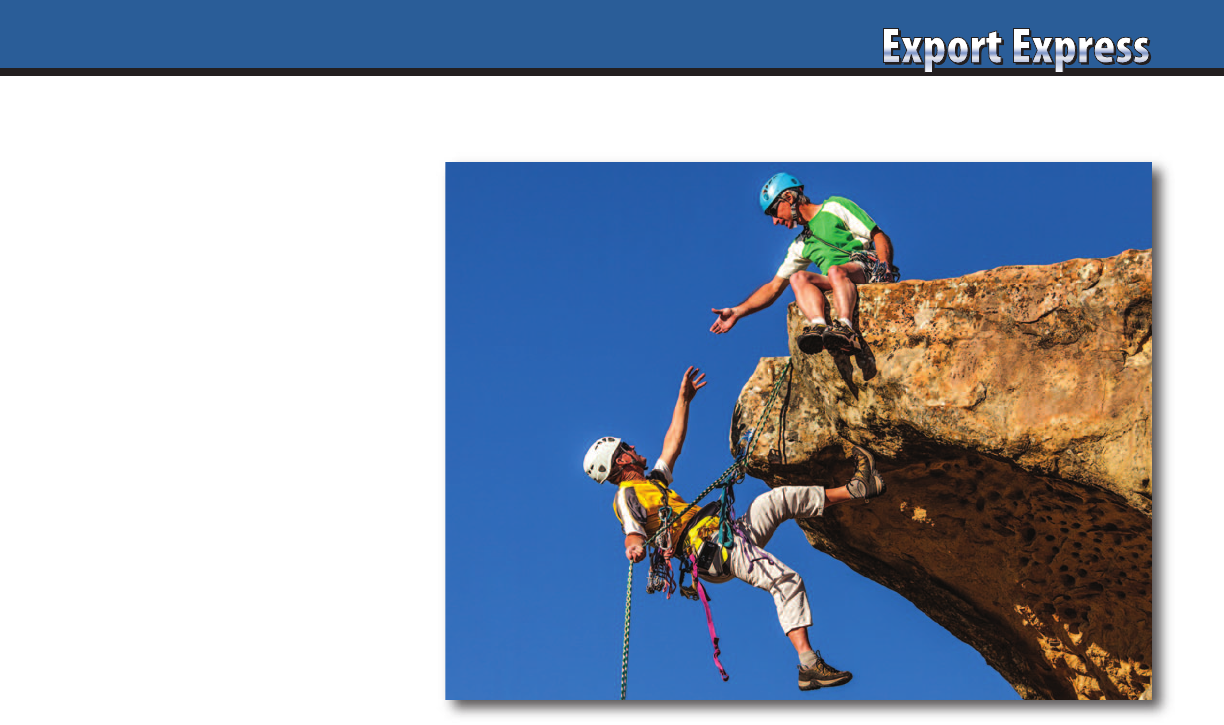
19
Brand owners express frustration at
the lack of response from distributors to
their representation inquiries. Qualified
distributors are flooded with emails from
companies looking for new distributors
to handle their unknown brands. It’s
difficult to convince massive retailers
to take a chance on a new brand without
a proven track record. It’s even tougher
to persuade the owner of a mid-size
distributor to write a check for the first
order of your product, particularly if
you are not committed to a significant
marketing campaign. Brand building
from ground zero requires one-two years.
Research reveals that approximately
20 percent of new products are still on the
shelves two years later. Listed below are
Export Solutions’ tips on increasing your
chances that your new brand will be a
“Gold Mine” for a successful distributor.
Distributors: Always Looking for New Brands
Every distributor is looking for new
brands. Distributor profitability rises
exponentially when they add new
business. New business allows them
to leverage their fixed costs of warehouse
space and sales teams. Most distributors
search for adjacent brands that
complement their existing portfolio.
For example, confectionery specialists
look for other snack items that may be
purchased by the same buyer and are
located in the same aisle as their current
brands. Distributors need new
companies, as all distributors (even
the good ones), lose brands due to
acquisition, performance, or direct
models. The key is to position your
new brand opportunity as an attractive
addition to the distributor’s portfolio.
What Every Distributor Wants to Know
While you rave about your brands
superior taste, the distributor has
three thoughts on his mind :
1. How much money can he
make representing your brand?
2. Will it be tough to secure
market acceptance?
3. What will the brand owner commit
to in marketing investment?
Manufacturers that position their
proposition in these terms have a better
chance of gaining market acceptance.
Review Export Solutions’ article “How to
Excite Buyers, New Product Checklist”
for an independent product assessment.
Resistance to Pioneering
New product launch cycles require up
to one year from time of first distributor
meeting until he receives retailer payment
for his first order. During this incubation
period, the distributor must allocate his
sales and marketing resources to your
company without compensation. This
time dedicated to your company is
sourced from their other brands that are
currently generating income. Access to
the shelf does not guarantee consumer
trial and repeat purchase. A distributor
may buy your brand, capture shelf space,
and suffer disappointment when the
product does not sell. Unfortunately,
these pessimistic comments reflect reality
and provide insights on why best in class
distributors are hesitant to pioneer.
On the Road to Gold Mine
How can brand owners overcome
distributor resistance to pioneering?
Distributors are impressed by large
companies and brands that have been
successful in adjacent countries. Some
distributors will accept a product that
offers some existing market penetration
with the belief that their stronger team
can drive the business to the next level.
Manufacturer commitment to a powerful
marketing program sends a loud message
that you are serious. For mid-size
manufacturers, offering a small monthly
pioneering fee ($3,000 - $7,000)
demonstrates that you are a patient
partner, willing to co-fund the launch
preparation until distributor sales begin.
At the end of the day, distributors look for
a strong partner, with a good track record,
and a firm financial commitment to
support youir mutual marketing efforts.
How to Find an Enthusiastic Partner?
Export Solutions compiled an extensive
Distributor Search guide covering all
aspects of the distributor search process.
In pioneering scenarios, it is critical to
consider a wide variety of potential
partners. Schedule a one week trip
to a country. Plan to visit at least 5
distributors. Most distributors will be
open to an introductory meeting with an
overseas principal if you are professional
in your approach. Referrals from your
local government trade support contact
or another one of their current brand
owners helps pave the way. Trade Shows
also generate leads from interested
distributors. Post a large sign saying:
Distributors Wanted, listing countries
of interest. This will encourage visitors
to stop and chat.
Pioneering is tough but not impossible.
In reality, creating new brand sales from
a zero base is the essence of the Export
Manager’s job responsibility. Fortunately,
Export Solutions’ database covers more
than 9,200 distributors looking for
opportunities. Good luck!
Pioneering: A Gamble, Not a Guaranteed Gold Mine
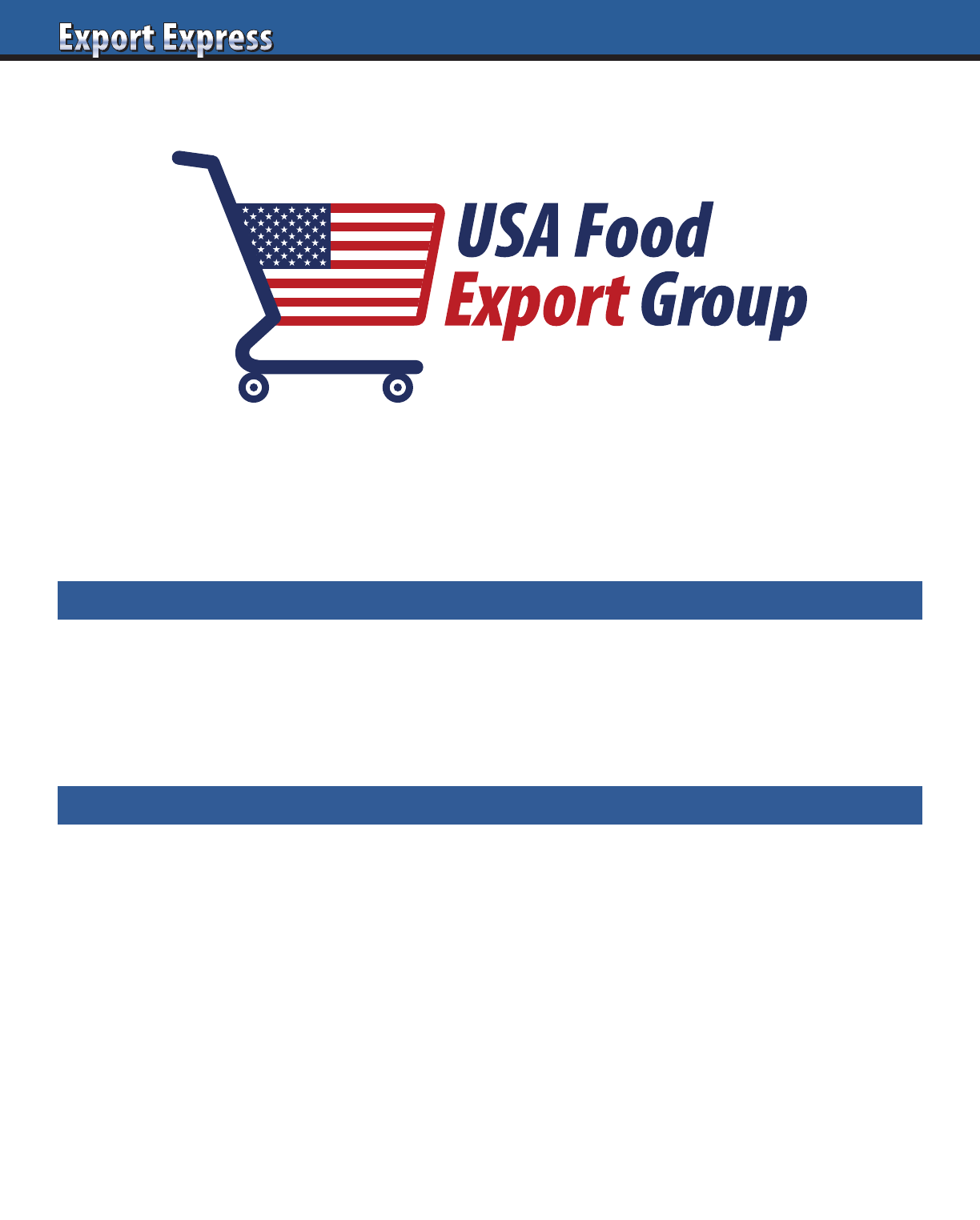
20
Introducing
America’s Favorite Brands
Executive Board
Export Solutions Smucker’s Tabasco
Greg Seminara, CEO Danny Berrios, President Megan Lopez, Vice-President
General Mills Sun-Maid
Eric Saint-Marc Carsten Tietjen
Advisory Board
Bazooka Candy Blue Diamond Bob’s Red Mill
Santiago Ricaurte Dale Tipple Jan Chernus
Bush Beans Campbells Church & Dwight
Dave Bauman Julio Gomez Arun Hiranandani
Ferarra Candy Heartland Idahoan
Daniel Michelena Tom Theobald Ryan Ellis
Johnsonville Sausage Kao USA Keurig Dr. Pepper
Cory Bouck Julie Toole Billy Menendez
Mizkan Reynolds Welch’s
Noel David Chris Corey Marc Rosen
19 Companies | 200+ Top Brands | $80 Billion Combined
View our activities for export managers – www.usafoodexport.com
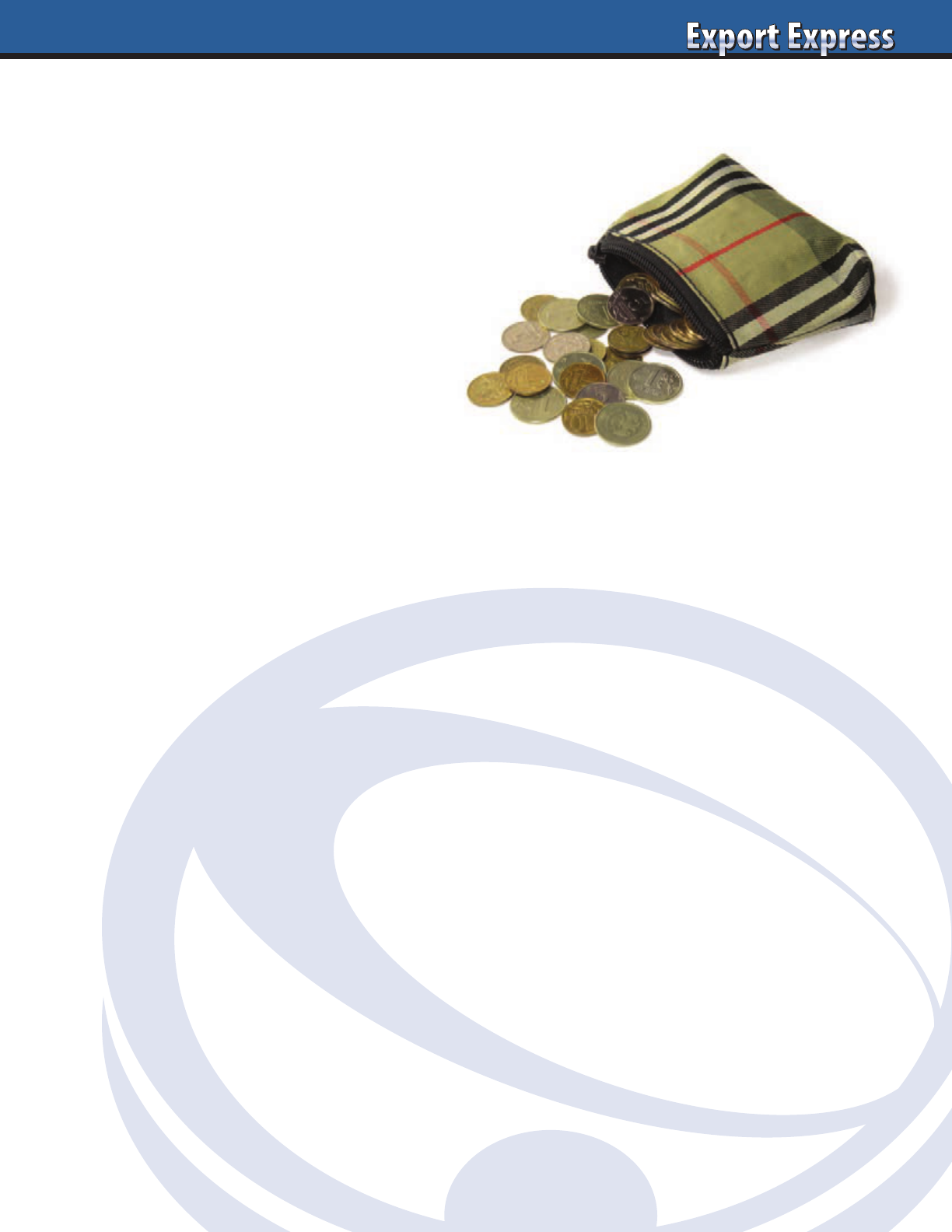
21
Stretching thin marketing budgets is a job
requirement for most Export Managers.
Listed below are “Ten Tips” for brand
building on a “Shoestring Budget.”
1. Tap into Government Export Programs
Many countries sponsor strong trade
organizations that can aid your export
development program. Exports translate
to jobs and most countries have well
established programs to facilitate the
sale of locally produced products. For
example, the USA Foreign Agricultural
Service will co-fund marketing
investments for small-mid size USA food
producers through their MAP programs.
German Sweets and GEFA, UBI France,
ICE (Italy), ICEX (Spain), Austrade
(Australia), and AG Canada serve as
valuable resources for local exporters.
These organizations often sponsor local
“Food Events” at leading supermarkets
in international countries. For example,
Austrade sponsored G’Day USA to
showcase Australian food producers to
USA consumers. These events are highly
publicized and normally feature a
relatively modest participation fee.
2. Leverage Relationships
with Global Retailers
Wal*Mart, Carrefour, Tesco & Costco
all maintain programs to ease the export
process for their current suppliers. This
usually involves direct consolidated
shipments with other local producers,
labeling assistance, and placement in a
special section in the international aisle
of their stores, i.e., USA Foods, France
Foods, UK Foods etc. The immediate
benefit is the streamlined route to market
without payment of upfront local
marketing fees. This allows you to “Test
the Market” prior to a traditional market
entry with a local distributor and heavy
marketing support.
3. Joint Venture with Local Manufacturer
Another idea is to locate a local player
in your category in a country targeted
for expansion. You may be able to
offer a potential partner innovation
in taste/flavor or packaging to
complement his local expertise. A joint
venture or Co-Branding agreement can
produce revenues without significant
start-up funds.
4. Build Marketing
Costs into
Distributor Margin
Many
manufacturers
build an accrual
fund into their
distributor
margin
calculation.
Normally the
funding level is
around 10% of
sales, but can
range from 5 -
20% depending
on the category.
This creates a
fund for the
local distributor
to manage. The
accrual fund is created on a “pay as you
go” basis, with fund levels proportionate
to shipments. In this scenario, the
manufacturer usually provides a small
fixed sum to create a launch budget prior
to initial shipments
5. Free Goods May Fund Trade Marketing
Free goods may be used to offset the cost
of trade marketing programs, particularly
for established brands. This can be in
form of a 1 free with 10 purchase or
similar type of promotional events.
The benefit is that your budget can be
stretched as your cost of goods produced
is less than the wholesale cost.
6. Private Label
Retailers source quality products for their
private label at the lowest possible price.
This eliminates the need for marketing
investments. However, private label is
difficult if freight expenses are too high.
7. Foodservice Channel
Foodservice/Catering offers a “low
investment” route to market versus
the supermarket channel. Foodservice
usually requires less traditional brand
marketing support. Foodservice operators
look for tailored solutions with rebates
based upon purchase levels. A small
budget for SPIF’s (SPIF- special incentive
fund) can generate purchases from
independent restaurants.
8. Specialty Retailers
Each country has specialty retailers that
serve as alternate channels for your
brands. This could include diverse
customers such as Cost Plus World
Market, Trader Joes, Big Lots or Dollar
Tree in the USA. These retailers maintain
different approaches not dependent on
heavy manufacturer spending.
Their strategy is to offer different brands
(or sizes) versus traditional supermarkets
or mass merchandisers.
9. Co-promotion with Other Brands
Retailers generate excitement through
Theme events around a group of
complimentary items or common
cause. This could involve participating
in Barbecue event with other Barbecue
related products :
Charcoal, Meat, Picnic Supplies, Drinks,
Pickles etc. Another example is a retailer
promotion celebrating their anniversary
or support of their favorite Charity
(Juvenile Diabetes etc.). In many
countries, leading distributors sponsor
an annual event for all the brands they
represent. Don’t forget the country
specific promotions (G’Day USA)
mentioned earlier. In each case,
manufacturers pay for a portion of
the event as costs are spread out among
all brand participants.
10. “In & Out” Packs/Gift Baskets
These special packs can generate
incremental business without investment
in listing fees or shelf space. Examples
could include modular displays, trail size
shippers, or bonus packs with free product
or gift. Gift Baskets are very popular
during the Christmas Holidays. This is a
good vehicle for “Fine Foods” brands to
gain exposure with gourmet consumers.
International Expansion – Shoestring Budget
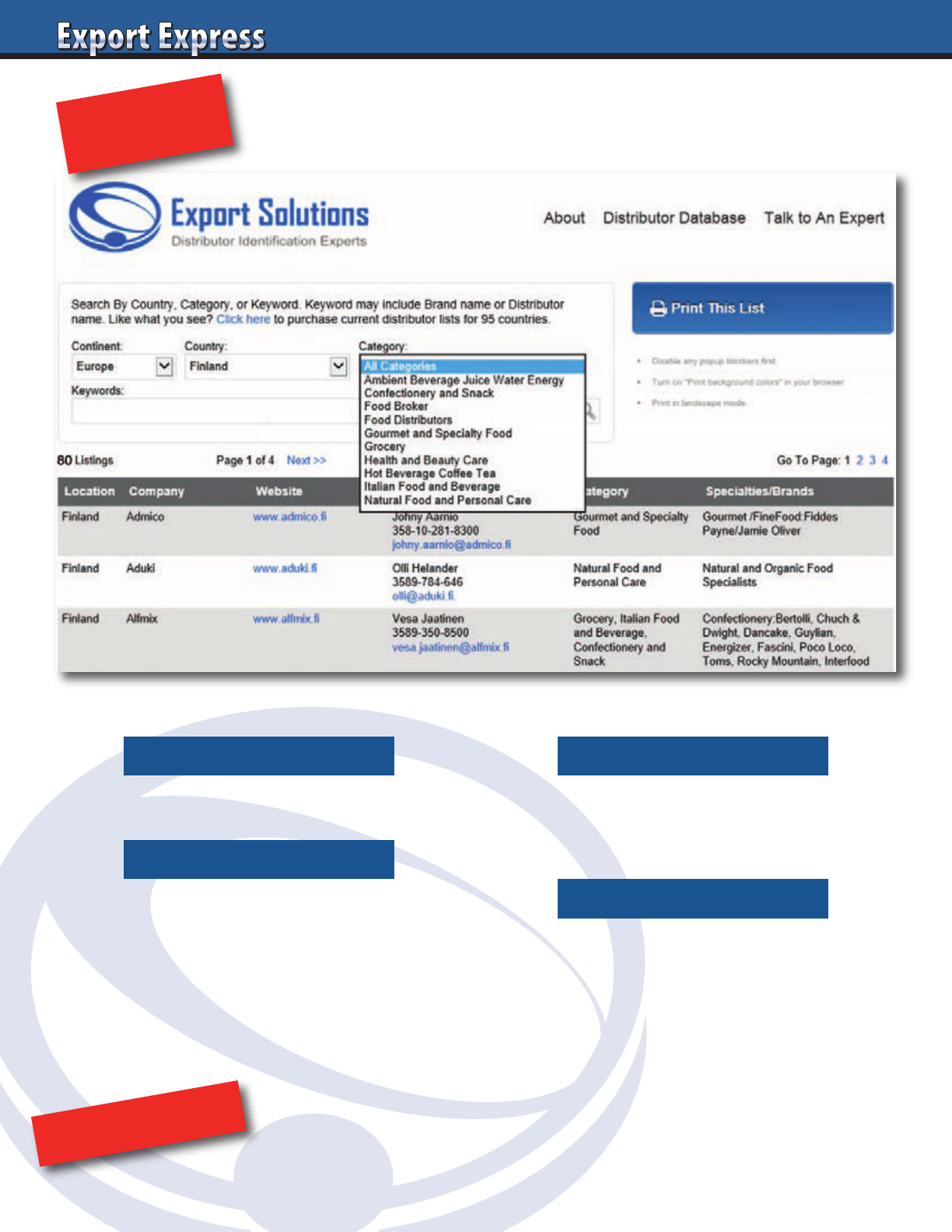
Coverage: 96 countries and 9,200 distributors
Confectionery & Snack
Gourmet/International Foods
Beverage (Ambient & Hot)
USA, German, UK, Italian Food
Health & Beauty
Tracking Distributors for more than 300
of the world’s most famous brands.
Example 1: Who are Beverage Distributors
in Germany?
Example 2: Who is the Pringles Distributor
in Saudi Arabia?
NEW!
ORDER NOW!
Distributor Search Made Simple
22
Search by Brand NameSearch by Country
Search By Category
Combo Search
www.exportsolutions.com
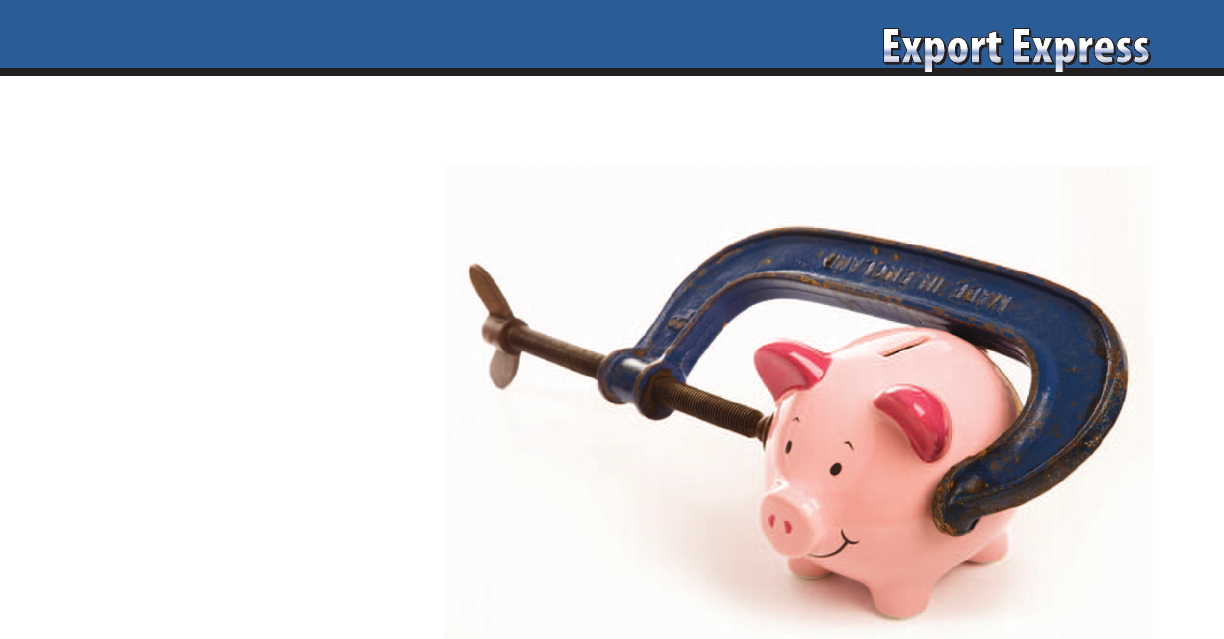
23
There are 196 countries in the world
and there is always a financial crisis
somewhere. Recently, Western European
countries have suffered issues. Emerging
markets display a history of “boom-bust”
cycles. A friend from Argentina explained
this story. “I do not worry when things
are bad and the country is suffering. At
least, I can face my problems directly and
I know that recovery is ahead of me. I am
more afraid in good times, when business
has been growing for a few years. In these
cases, I know that a new crisis is around
the corner and surprises are tougher
to deal with.” Recapped below are
Export Solutions’ Ten Tips for
dealing with countries experiencing
financial instability.
1. Assume every market will be affected.
Naturally, certain emerging markets carry
a higher degree of risk versus others.
However, even large countries such as the
USA and the United Kingdom have been
burned through the bankruptcies of
Bruno’s and Woolworth’s. Total risk
should be measured by the amount
of credit outstanding as well as each
countries risk factor.
2. CFO to CFO discussions make sense.
Bring in the financial experts. Let your
company CFO or financial manager speak
with your Distributors ( or Key Retailers)
financial manager. These financial experts
speak the same language and will
allow your financial team to accurately
gauge the situation. It also spreads
out the responsibility beyond the
sales and marketing department
for potential problems.
3. Request New Distributor/Retailer
Credit Information – Most of this
information was submitted years ago
in advance of the credit crisis. It is timely
to request new information every year.
2021 year end financial reports should
be available from every distributor.
4. Watch Distributor/Retailer Inventories
Shipments to retailers may not correlate
to consumer demand. Inventory levels
measured in terms of weeks supply
on hand should be monitored at both
distributors and retailers. Higher
inventory levels signal slowing
consumer demand. Reduced inventory
levels may indicate a cash flow/potential
credit problem.
5. Connect with Peer Non-Compete
Suppliers – Every retailer and distributor
trades with a myriad of suppliers. I
recommend setting up formal or informal
groups of peer, non compete, suppliers.
These valuable contacts facilitate the
exchange of benchmarking information
on shared retailers and distributors.
6. Track Leading Indicators – Most of
us are not economists, but it is still easy
to develop a simple tracking form of
leading metrics for distributors in key
countries. We suggest measuring trends
in shipments, accounts receivable,
inventory, as well as country level data
on GDP, stock market, unemployment,
and currency exchange rates.
7. Payment Terms – Some suppliers are
implementing additional safeguards to
protect themselves. This includes moving
towards “brokerage style” arrangements
where the manufacturer still maintains
ownership of the goods. Other strategies
include offering discounts for early
payment or requesting cash on delivery.
8. Run a Dun & Bradstreet Report on
Partners – On the surface, business may
appear normal. A Dun & Bradstreet
Report (or similar) creates a rating based
upon a thorough examination of financial
records, statements and dealings of the
business with its customers, clients,
investors and shareholders.
9. Beware of Unusual Shipments or
Billback’s – Unfortunately, there are
too few examples of unusual, “best
ever” promotional success stories. Look
carefully at order patterns or promotional
allowance reimbursement (billback)
requests that appear out of sequence
or abnormal.
10. Commit to Open Dialogue with Long
Term Partners – Many exporters enjoy
relationships with their international
distributors that extend 20, 30, 40 years
or more. Current financial issues likely
reflect overall country level financial
status versus poor decisions taken by
a long term distributor. Distributors need
to understand that manufacturers hate
“surprises”. Best bet is to create an
environment that facilitates open
communication supported by data
to solve any credit issues.
Ten Tips – Managing a Credit Crisis
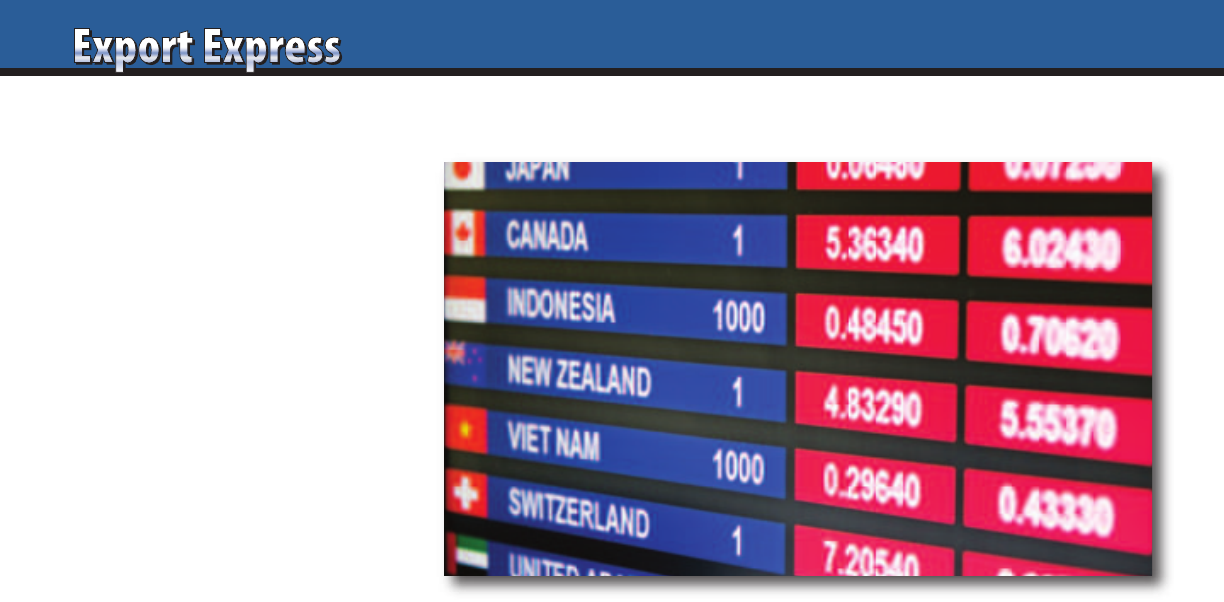
24
Dramatic currency gyrations wreak
havoc with retail pricing around the globe.
Strong USA dollar, weaker Euro, devalued
China RMB, and cratering pound.
These lightning fast moves on currency
exchange may require six months or more
to wind their way through the supply
chain. Some distributors devote more time
to serving as f/x traders versus brand
builders. Unfortunately, most export
managers are distanced from the problem
until receiving an urgent call from a
distributor who faces passing on a 10-20
percent price increase to his customers.
Listed below are Export Solutions’ “tough
tactics for tumultuous times.”
Higher Prices Mean Lower Volume
Emerging market currencies usually
move in a weaker direction. This
translates to higher shelf prices. Citizens
in these economies rarely experience wage
increases in parallel with inflation. Most
consumers tend to reduce purchases of
overseas products as they become luxury
items. Exporters need to calibrate “how
much pain” they are willing to endure
in terms of lower volume.
Prices Only Go Up, Never Down
Permanent price declines or rollbacks
are extraordinarily difficult to execute.
If your currency weakens, retailers and
distributors don’t pass on lower net cost.
It is common practice for them to try to
maintain retail shelf prices and capture
extra margin. Savvy brand owners skip
the price rollback and invest in heavier
promotion levels or enjoy higher profits.
Conduct Monthly Price Surveys
In countries of extreme price fluctuation,
best to schedule monthly price surveys of
your brand and the competition. Request
that distributors use the same store base
every month to avoid regional differences.
Online grocers allow us to monitor
country pricing from our desktops,
miles away from overseas markets.
Retailers: Once Per Year Price Increases
Many retailers accept price increases
only one time per year. This may occur
in conjunction with annual negotiations.
Other retailers demand ninety days
advance notice. Sometimes “borderline”
brands encounter customers who
simply refuse to accept price increases.
Ultimately, this puts tremendous pressure
on distributors who may be facing price
increases from multiple suppliers
What’s Fair? – Peg Rate
I advocate a model where currency
is pegged to an exchange rate at the
beginning of the year. Distributor and
brand owner agree to “swallow” price
swings of the five percent in either direction
of the peg. If the currency breaches five
percent threshold, then both parties review
the formula and assess options.
Bank Rate Versus Distributor Rate
A key metric to investigate is the
distributor exchange rate in his
calculation versus the actual bank
rate. Many distributors seek to insulate
themselves by building in a five to ten
percent protective cushion. Guess
what? If the currency doesn’t move,
the distributor just made an extra five
to ten percent on your brand, starting
from the landed cost line!
Sell in Local Currency
This forces large manufacturers to accept
the risk or benefit. This insulates smaller
distributors who may not enjoy similar
capital reserves as their larger principals.
This approach works especially well
with European brands selling to the
USA or vice versa.
Competitive Activity
Frequently, all category players
experience similar input cost increases
such as raw materials. Competitors may
use the window to hold prices low to
gain market share. Others may eliminate
promotional spending. Ultimately brands
elect a certain price positioning in
a country and should strive to stay
within the desired range.
Document Price Change Rationale
Retailers provide strict challenges to those
requesting price increases. Supply them
with hard facts on costs of raw material,
currency exchange, transportation and
other factors. Retailers with substantial
private label programs face similar
pressures on their own private label,
so they are not blind to the situation.
Watch Credit/Receivables
Distributors pay their suppliers in
advance of receiving payment from local
customers. Distributors invoice in local
currency and wait for repayment.
During periods of currency fluctuation,
the typical sixty day float could result in
a five percent reduction in receivables.
Across a broad portfolio of brands, this
could spell trouble for a distributor.
Run credit reports and monitor days
outstanding trends.
“Helpers” are Heroes
A trusted distributor who has delivered
consistent results is worthy of your help!
In the past year, I have witnessed the
USA dollar appreciate more than fifteen
percent versus the Mexican peso and
Canadian dollar. Best approach is for both
partners to “roll up their sleeves” and
engage in an open discussion around
transparent examination of the facts.
Distributors are entitled to a reasonable
profit. A manufacturer who helps absorb
the pain during a “currency crisis” will
be remembered as a true partner when
the situation stabilizes.
Currency Exchange – Tough Tactics for Tumultuous Times
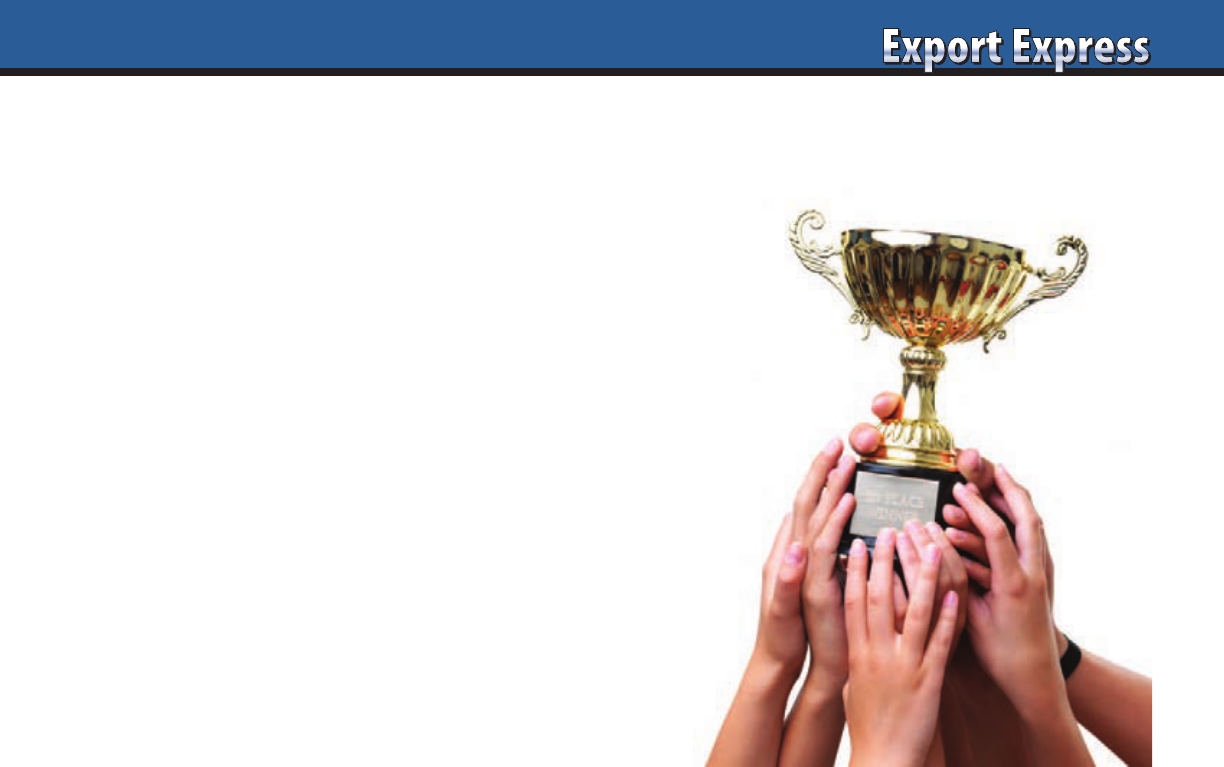
25
Fifteen Tips: Achieve Preferred Supplier Status
A natural goal is to achieve “Preferred
Supplier Status” with retailers and your
distributors. Satisfied trading partners
generate superior results. “Vendor of
the Year” does not mean “Spender of
the Year.” Listed below are 15 tips to
be viewed as a Preferred Supplier with
your distributors and retail customers.
1. Invest in Brand Support
Marketing activities drive incremental
sales and cultivate the health of your
brand and category. Supplier investments
in consumer awareness and retailer
development activities help everyone
achieve their sales objectives.
2. Innovate, Innovate, Innovate
The CPG/FMCG industry is fast paced,
with frequent new product introductions.
Companies which invest in research to
deliver new product ideas out-perform
and lead the category.
3. Keep the Supply Chain Filled
Short shipments cause a chain reaction
of problems throughout the supply chain.
Seek to attain a 98% case fill rate or better.
4. Distributors Need to Make
Money Too!
Retailers, Manufacturers, and
Distributors seek to achieve a reasonable
profit. Distributors ( Importers/Brokers)
are often “squeezed” as middlemen.
Distributor Margin reductions translate
to cutbacks in sales personnel, customer
service, investments in technology, and
ultimately impact results for your brand.
A financially healthy distributor is a
productive partner.
5. Focus on Priorities versus Minutiae
All partners are guilty of getting absorbed
in the details of the business. Maintain
attention on the key elements which
drive business success. Minimize
“non-essential” reports.
6. Serve as Category Expert
It’s a challenge for Retailer buyers and
distributors to master all the categories.
Preferred suppliers provide fresh and
unbiased insights into category trends,
product development, and analysis of
category data.
7. Visit the Market, But not Too Often
Distributors and Retailers welcome your
periodic visits. Insights on market
development and problem solving “face
to face” are
invaluable. On the
other, you need to
provide distributors
the time and freedom
to build the business
without distraction
of preparation and
management of
frequent supplier
market visits.
8. Calibrate Time
Commitment to
Compensation
A first step is to
evaluate what your
brand represents
to a distributor
(or retailer) in
terms of annual
revenue/profit
contribution. Reflect
on the activities
requested to service
your business in
relation to your
contribution.
9. Keep Your
Commitments
Preferred suppliers
are viewed as trusted partners. Reliable
suppliers secure more than their fair
share of retailer and distributor focus.
Last minute cutbacks in marketing
support are sometimes necessary,
but damage your credibility.
10. Respond to Local Ideas
Distributors and Retailers know their
markets. Give them the support they
request on a new promotion idea or sales
campaign. Let them build ownership of
an idea and the ultimate results. Good
ideas will build credibility and sales.
11. Pay Bill-backs on a Timely Basis
Many distributors are small businesses
with tight cash flow. It is always positive
to be viewed as a “Prompt Payer” of
legitimate invoices.
12. Support Distributor
with Corporate Headquarters
Many companies enjoy long term
relationships with their distributor
network. The Distributor depends on
you to serve as their advocate with senior
management of your company. Fight for
their ideas and defend their business
performance, where appropriate.
Remember that all organizations
experience a mix of “good years and
bad years.”
13. Share Best Practices
Industry participants are all “students
of the game” and are generally open
to learning about strategies from other
markets/retailers. On the other hand,
we must recognize that all markets have
subtle differences and not all approaches
are transferable.
14. Provide Proper Lead Time
to Achieve Desired Results
The consumer goods industry is relatively
organized with established protocols
and timelines. Exceptions can be made
in case of product recall or breakthrough
innovation. Everything functions better
when timelines are adhered to.
15. Recognize Achievement
Take the time to say “Thanks” or “Well
done.” This acknowledgement may be
in the form of a personal note, phone call,
or public recognition.
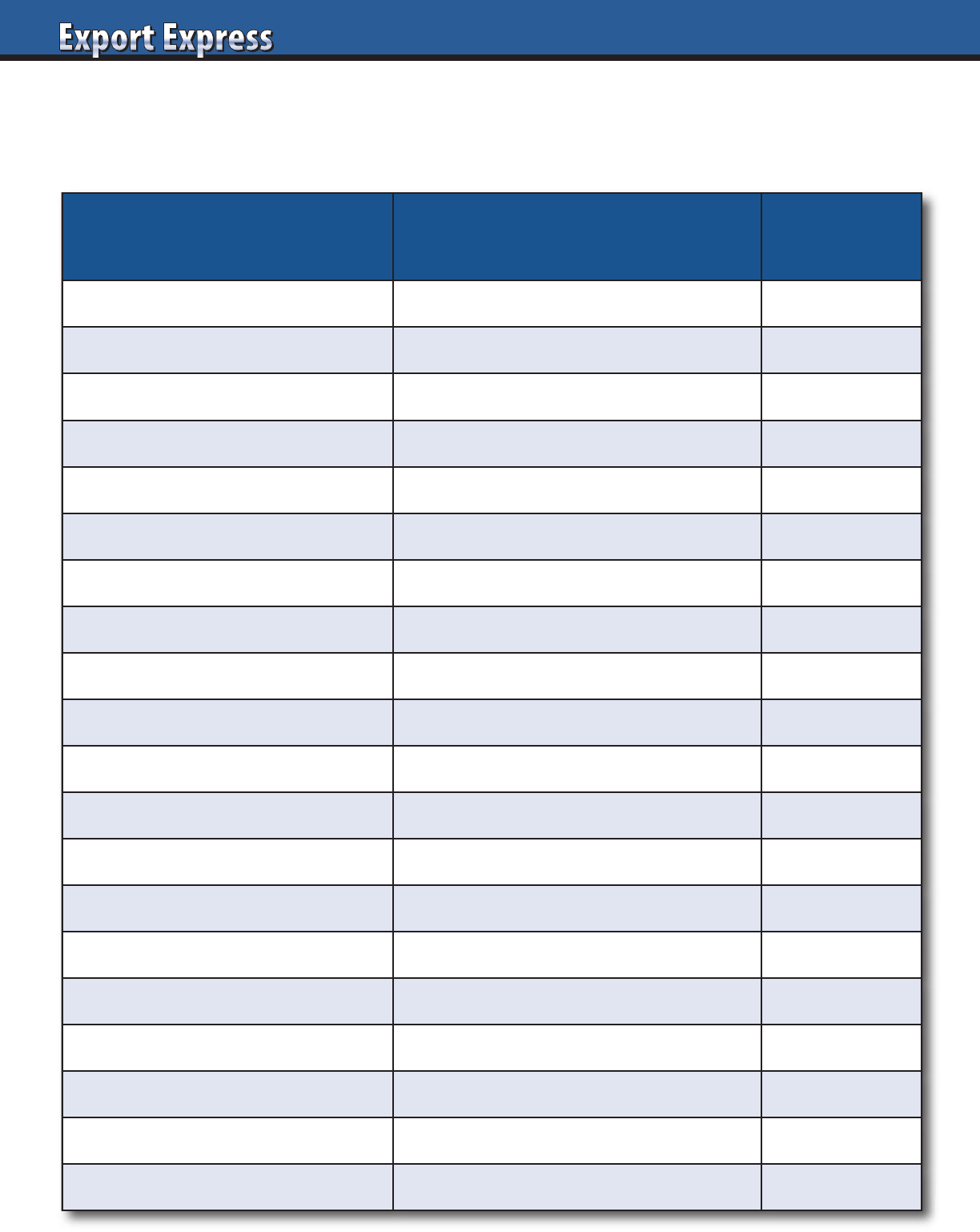
26
Preferred Supplier Scorecard
Distributors deliver their best results for their favorite principals. How do you rank?
Supplier Assessment Considerations
Rating:
(10 = Best)
Annual Sales Revenue • Percent of total distributor sales
Annual Profit Generated ($)
• Net sales times gross margin
Years of Service • New to 20 years or more
Compound Annual Growth Rate
• Flat to 10% or more
Supplier Investment Level • Zero to 25% of sales
Celebrates Success
• Awards, dinner, thank you notes
Shares Best Practices
• Serves as category expert
Logistics Service Level
• Target 98% on time, complete orders
Visits Retail Stores
• Never to full day every visit
Reimbursement of Billbacks • 2 weeks to 3 months
Senior Management Relationship • None to long term partners
Export Manager Experience • New hire to 10 years or more
Response Time • Same day to one month
Supports Distributor’s Ideas
• Invests in local ideas
Good on Customer Calls
• Avoids calls to customer favorite
Admin Requirements • Orders only to multiple reports
Supplier Visit Frequency • Never to weekly
Relationship: Entire Team • Finance, logistics, administration
Respects Fair Profit for Distributor • Healthy distributor is profitable
Achieves Joint Business Targets • Creates culture of success

Export managers rarely think about how much money
a distributor is making from representing their company.
Big mistake! How often do you think about your own salary?
How do you feel when you get a raise? Or no bonus or a
reduction of salary? Most distributors are family owned
operations, relying on net profit margins in the 3-5 percent
range. Distributors make money on scale, always looking to
attract companies with existing sales versus pioneering risky
new product ventures.
1. Calculate how much revenue your distributor sources
from representing your company.
A quick estimate can be generated from net sales multiplied
by the distributor margin.
2. What is the work required to build your brand?
How much of the distributor’s resources will you need to achieve
your mutual objectives? Is your brand a tough sale, or growing
a popular item? Dedicated brand manager or shared?
3. How much complexity is involved with your business?
Number of items in your product portfolio? Shelf life?
Temperature control logistics? Highly competitive category
or “niche?” Every day low price or frequent promotions?
Average order size? How much help (pressure!) from
manufacturer? Marketing budget? These inputs directly
impact distributor profitability.
4. Distributor margin is the first place where they generate income!
Distributor executives receive salaries and “owner-operator”
benefits like travel, cars, and jobs for family members.
Country level price calculations are usually based upon the
most expensive customer. A distributor gains income when
other customers do not receive similar discounts and rebates.
5. All distributor margins are not equal!
The key is to examine “what’s included.” Some margins appear
high, but could include periodic trade price promotions. Others
margins may be lower on the surface, but then allocate separate
line item add-ons for logistics, administrative overhead, or
distributor profit margin.
6. Pioneering is extremely difficult!
It may take one year from the time of your first discussion with
a distributor to the time he receives trade payment for his first
shipment. Normally, a distributor must allocate his team
resources for up to a year, with hope for a long term payout.
This is a difficult gamble. Manufacturers must remember this
fact, and understand when distributors refuse to partner with
a company with no existing sales.
7. Marketing investment drives distributor Income.
Funding required consumer and trade marketing investments
stimulates sales. Higher sales generally translates to higher
distributor profit. No investment leads to marginal sales
and lower distributor revenue.
8. Price increases: tough to execute, but pay raise for distributor
Customers are reluctant to accept price increases, because
they hate to raise prices to the consumer. However, currency
fluctuations and raw material prices force manufacturers to
take price increases. Many distributors are very open to a timely,
competitive price increase. Higher invoiced case costs deliver
greater returns at a consistent margin, except if volume suffers.
9. Consider direct talks on margin and compensation
Most employees enjoy an annual performance and salary review.
Many distributors would welcome a review of compensation
trends. This would include sales, resource allocation, currency
fluctuation, trade payment and competitive activity.
10. Open dialogue on alternate financial models
A company with critical mass may operate on an “open book,”
cost plus model with a distributor. A large brand may benefit
from margin rebates when certain volume thresholds are met.
Another approach involves manufacturer funding of a dedicated
“team within a team” at a distributor. For a small brand or new
entry, consider a monthly retainer fee to cover six month start-up
period. Another is an incentive program which rewards the
distributor for achieving volume targets.
11. Helpers are heroes!
Many distributors literally write the check for your invoice
from their own funds. Frequently it is difficult for small-mid size
distributors to dictate payment terms to multinational retailers.
This forces distributors to swallow price increases, extra retailer
fee demands, currency impact etc. Large brand owners that serve
as caring partners that “help” will be rewarded with a healthier
distributor and more focus on their priorities from an
appreciative distributor.
Ten Tips: Distributors Need to Make Money Too!
Need a hand? Visit www.exportsolutions.com.
27
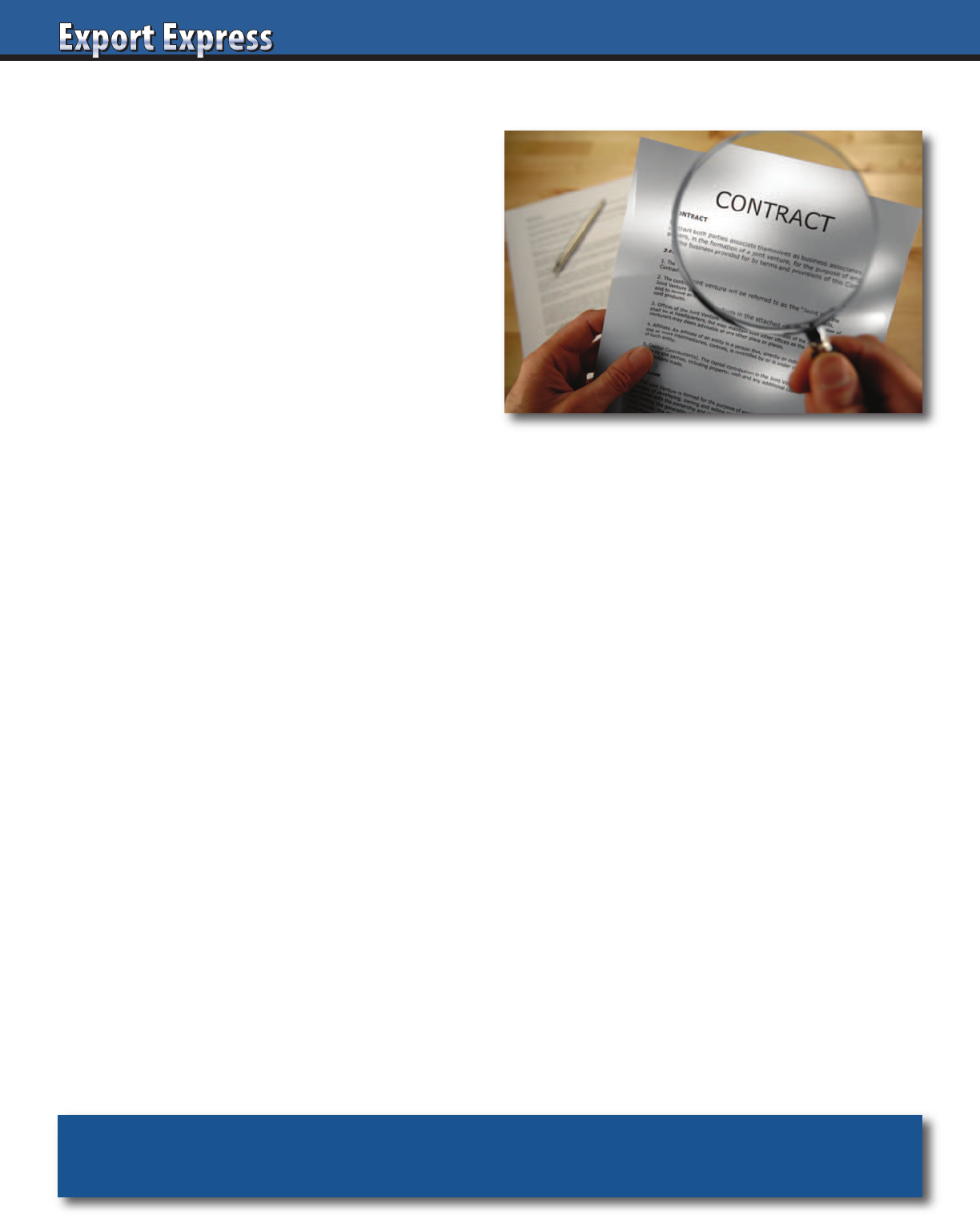
28
When was the last time you reviewed your distributor contracts?
Fortunately, both brand owners and distributors only dedicate
time to these documents at the start of a relationship or when the
end is near. View our ten tips on handling distributor contracts.
1. Contract, Letter, or Handshake deal?
Most companies maintain a mix of these type of relationships.
This is normal, although most wish to standardize the model.
The rule of thumb is that the “more money you spend, the more
detailed the contract you need.” A simple two page letter of
understanding may be appropriate for a small business or a
handshake commitment in situations where the distributor
“buys and resells.” However, fully supported brand launches
and business management of a global brand usually requires
a detailed contract to protect both parties.
2. Sole Versus Exclusive Distributor
Most distributors demand country exclusivity. This is standard,
but may cause problems if the region is subject to inbound
shipments from global customers, e-commerce, or grey market
traders. A compromise is to offer a contract as the “sole”
distributor, providing protection from the manufacturer
appointing multiple partners in a country.
3. Distributors are Customers
At contract time, some manufacturers fail to remember that
distributors are customers, buying your product and reselling
to all local retailers. Suppliers may forward “one way” contracts
that are biased to terms favoring the manufacturer. Would you
send a contract like that to Kroger, Carrefour, or Tesco? Key is
to strike a reasonable balance favoring commercial sensibilities.
4. E-Commerce Implications
Many distributor contracts were executed before the advent
of e-commerce. Revised agreements may be necessary
incorporating e-commerce service requirements: items,
pricing, inventory, metrics, channel exclusivity.
5. Local Law Dominates
Overseas companies should have their contract reviewed by
a local law firm to guarantee compliance with local regulations.
For example, in Puerto Rico and Belgium, distributor (agent)
protection laws supercede any contract language.
6. Point of Arbitration
Normally, the brand owner automatically assigns his home
country as a point of arbitration for any disputes. In some cases,
both parties select a neutral country like Switzerland. A global
corporate counsel once taught me that ultimately any dispute
will need to be resolved in the distributor’s home country. For
example, a USA company can sue a distributor in a USA court. It is
unlikely that the distributor will hire a USA lawyer or even show
up. The USA court may enter a judgement, but the brand owner
still needs to go to the distributor’s country for enforcement.
7. Notification of Contract Termination
Standard contracts appear for two or three years with provisions
for automatic renewal. Distributors fight for long lead times;
a loss of brand can represent a major disruption. From a brand
owner’s side, would you want a terminated employee working
for you for six months or one year? I prefer three months
notification, but that can also backfire if the distributor resigns
your business.
8. Loss of Major Principal
Sadly, I have witnessed distributor bankruptcies because they
were doing “too well.” A distributor grows the brand to a size
where the manufacturer decides to take the brand back and form
a subsidiary. The distributor scrambles, but sometimes they need
to lay off more people and causes a rapid exit of other brands.
2022 contracts should require distributors to inform you within
10 days of notification (not effective date) of any loss of principal
representing ten percent or more of their business.
9. Global/Regional Customers
Large players like Walmart, Costco, Amazon, and Carrefour can
be difficult to manage. They demand best pricing system wide or
threaten to trans ship from other locations. In some cases, these
retailers may demand to “buy direct.” In this case, you can add
an “indent” clause permitting this practice while compensating
the distributor for local services such as merchandising.
10. Late Payments & Currency Exchange Rate
A distributor that pays late signals financial difficulties. Include
a clause that allows you the option to consider the contract in
default with payment delays beyond 45 days or with frequent
problem payers. The benchmark for calculating currency
exchange rates should be specified in the contract. I have seen
cases where a distributor assigns a five to ten percent benefit in
his favor to protect against the possibility of currency swings.
10 Tips: Distributor Contracts 2022
Need more information? Visit www.exportsolutions.com.
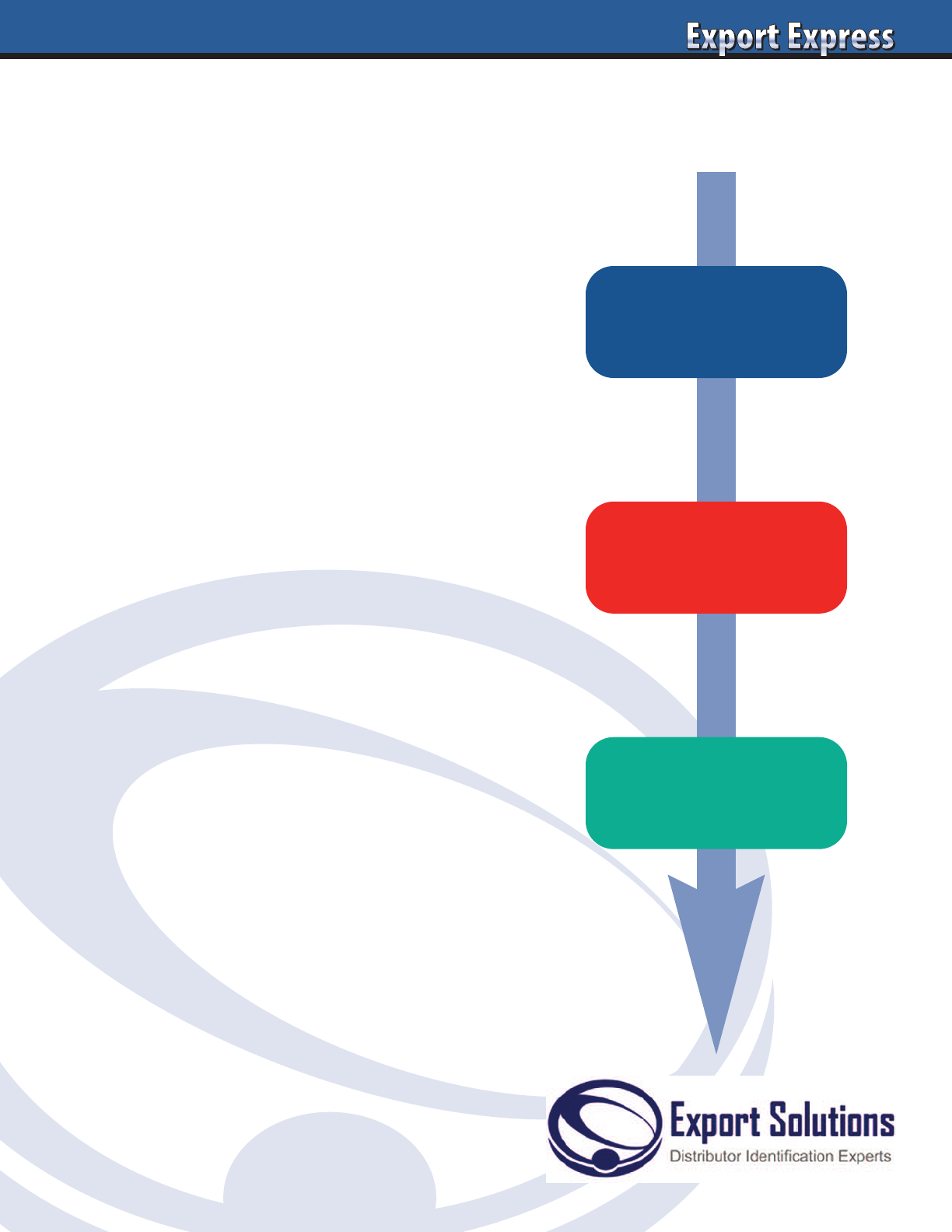
29
Take Your Export Business to the Next Level
Export Solutions Services
Current Business Assessment
Opportunity Gap Analysis
Customer/Channel Prioritization
Broker, Importer, Distributor Identification
USA Entry Plan
Measures: Concept to Shelf
Consumer/Trade Promotion Plan
Connect with Channel/Retailer experts
Team staffing and recruitment
Double Your Business Plans
“Spend time Selling to Distributors
versus Searching for Distributors”
www.exportsolutions.com
Analysis
Partner
Sell
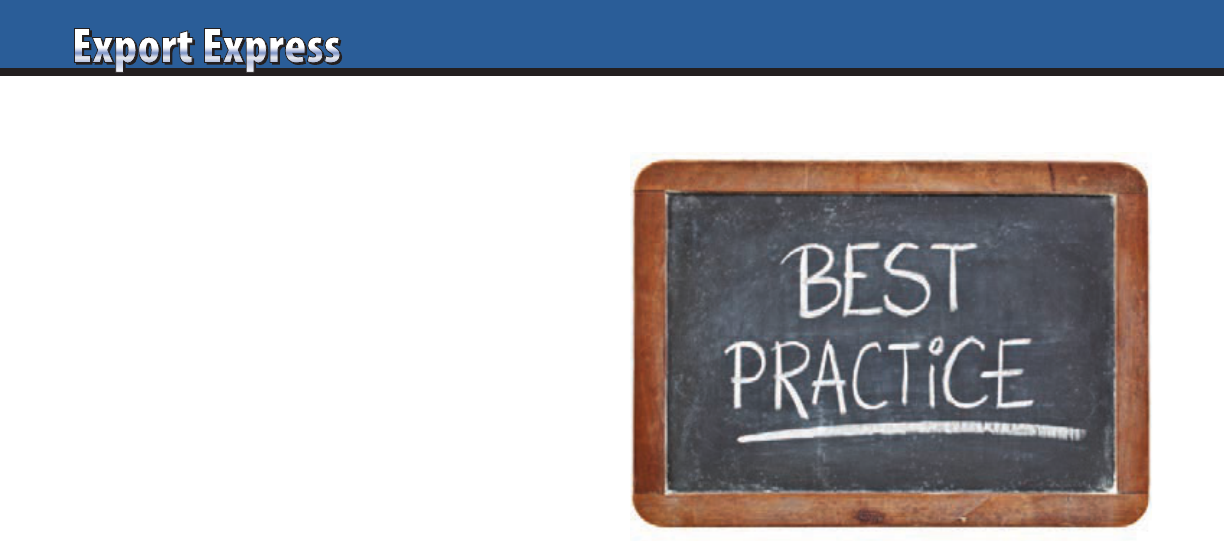
30
How often do you visit your distributor’s warehouse?
Brand owners should inspect their distributor’s warehouse
at least once per year and always before the start of a
new business partnership. Warehouses serve as the
nurseries/creches for where our precious new products
are stored while the commercial team generates sales.
Warehouse managers are custodians of our sales inventory
and companies need to insure that their brands are in good
hands while awaiting sales.
Listed below are 10 Tips on productive distributor
warehouse visits.
1. Confirm Accurate Stock Levels for Your Brands
Does warehouse inventory reconcile with distributor stock
reports? How many cases are there versus agreed to weeks
supply targets? Six to eight weeks of stock is typical for
overseas brands. Walk down every aisle and check every
one of your SKU’s.
2. Identify Problems
A warehouse visit may reveal overstock or understock
conditions. Similarly, you may spot a case of poor sales
rotation or goods approaching expiration date. A common
problem is the discovery that a warehouse may not adhere
to a “first in, first out” method of stock rotation. Examine
cases to look for damaged goods.
3. Warehouse = Window Into Distributor’s Real Business
Warehouse inventory levels paint an accurate picture of
the distributor’s real business profile, not what the pretty
PowerPoint presentation tells you. What brands are stocked?
What are they selling? I remember one distributor interview
included bold claims about representation of famous
companies. The warehouse revealed one pallet of one small
SKU from the famous manufacturer. Another interview for
a distributor claimed representation of fifty world famous
brands. The warehouse check showed that 50% of business
was on a local commodity item and most of the foreign brands
had only 20-30 cases of stock.
4. Outsourced Logistics Providers
In certain countries, distributors outsource logistics to
another third-party provider. This is a mixed message for a
manufacturer. From one standpoint, this frees up distributor
management time to focus on brand building. Also, there are
excellent logistics providers that specialize in “best in class”
practices. On the other hand, the distributor has sold his
logistics contract, sourcing a fat fee for his business. Also the
external logistics provider needs to make a profit, so you wind
up with another margin line item in your calculation. Request
a warehouse inspection, even if it is managed by a third party.
5. Get to Know the Warehouse Manager
Every business runs into supply chain problems at some
point in time and its positive to know the person in charge.
Bring him a shirt or other gift with your company logo and he
will be your friend for life (or at least until the next problem!).
6. What are Distributor’s Service Levels?
Most buyer’s first concern is sales rotation. Their second
metric is service levels such as stock levels, fill rate, and
inventory turns. Your distributor’s adherence to retailer’s
supply chain scorecard objectives reflects on your brand,
sales performance, and distributor’s reliability as a provider.
What are the distributor’s KPI’s? Are they tracked
automatically or manually? How are they doing?
7. Appearances Count!
Is the warehouse clean or dirty? Does it appear to be
logically organized? Is it busy or “asleep?” These clues
send an important message on the overall status and culture
of your distributor partner.
8. Understand Distributor Value Added Services
Many distributors provide value added services in their
warehouse. This may include creation of promotion packs,
stickering or special pack displays. You may discover
distributor capabilities that you were not aware of.
9. The Heat Is On?
Products require different storage conditions. Obviously
frozen and chilled items require temperature control.
Confectionery products require different climate standards.
Health and personal care items may ship in units versus cases.
In other situations products like insecticides cannot be stored
(or shipped) with food products. What is the compliance level
versus the storage standards for your products?
10. Alignment With Expectations
Ultimately, a successful warehouse visit should match
your business and expectations. If business is good, the visit
demonstrates your interest in the distributor’s total company
and team. Request a visit just to say “thanks.” If your business
is declining, the warehouse is a perfect place to dig into what
the real situation is at the distributor. Sales to the customer
begin the moment your brand leaves the distributor
warehouse floor. A periodic inspection will insure that
your brand looks its best in transit to the store shelf.
10 Tips: Mandatory Distributor Warehouse Visit
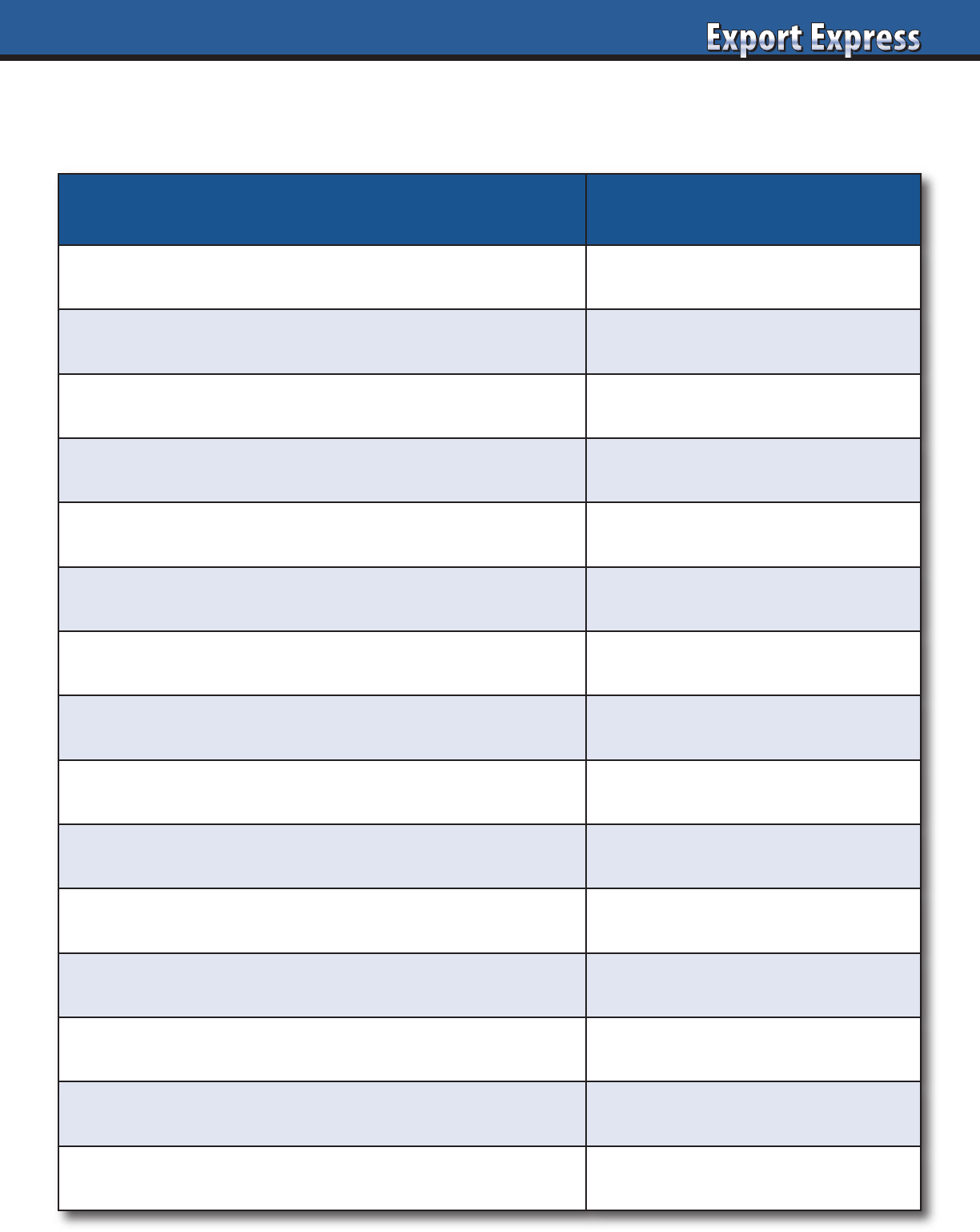
31
Logistics-Distributor Capability Scorecard
Many retailers supply their distributors with service level scorecards. Our distributor’s performance demonstrates their reputation as
a reliable supplier to important customers. Benchmark results vary by country, reflecting unique requirements to serve local customers.
Assessment Criteria Capability – Results
Warehouse: Distributor owned or outsourced to third party?
Trucks/vans: Distributor owned? How many, by type?
Warehouses: Locations, size, pallet positions,temp.controlled?
Special pack services: Stickering, promo packs, repack?
Average stock on hand: number weeks supply, by SKU
Annual inventory turns
Order lead time: capital city, rural regions
Minimum order size: cases, value, avg. order size
Perfect order rate, case fill rate, SKU fill rate
On time delivery rate
Monthly orders handled? Unique customers?
Damaged goods: Percent of sales
Vendor Managed Inventory (VMI) customers
Can distributor ship less than case quantities?
Logistic cost: percent of net invoiced cost
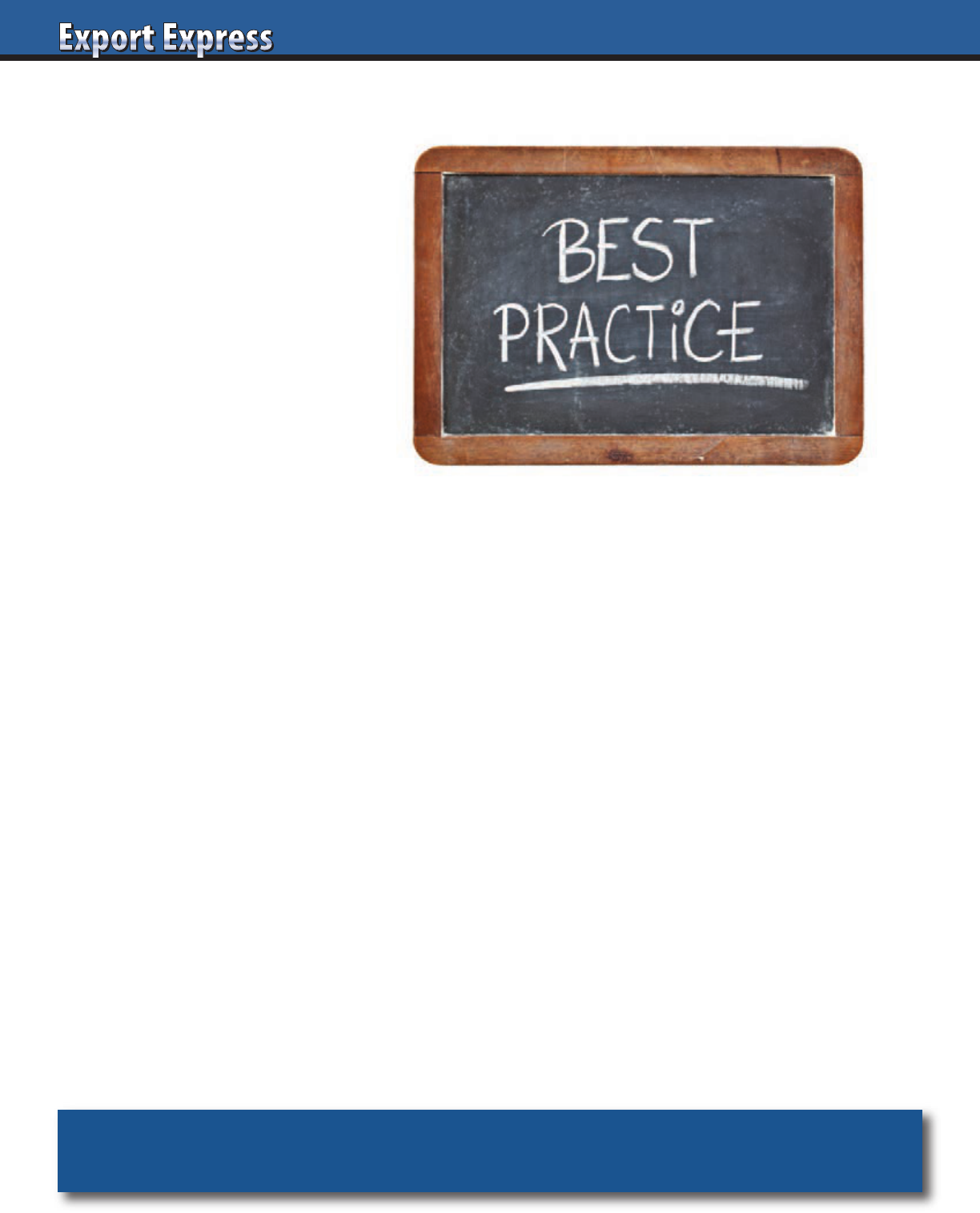
32
1. Extensive Due Diligence
on all New Distributors
Visit each new distributor’s office
and warehouse to calibrate the size
of his business with other principals.
This includes reference checks from
existing manufacturer clients as well
as from leading retailers in his home
country. Run a Dun & Bradstreet
or Equifax financial report.
2.Design a Distributor Fact Sheet
Require each potential distributor
candidate to complete a one page
template recapping their capabilities.
Pay particular attention to sales turnover,
number of employees, and references
from existing brands handled.
3. Ship Directly to Distributor
in his Home Country
Do not allow for distributor sponsored
consolidation at a USA port such as Jersey
City, Miami, or Los Angeles during the
initial launch phase. Allow distributor
pick-up at your factory only after your
relationship and brand have been
established for a year or more.
4. Label your Product in the Local Language
Stickering is acceptable only if it is done
in the destination country or at your own
in-house contractor.
5. Sell Only to Distributors Based
in your Target Country
Avoid shipping product to foreign
distributors with offices and warehouses
in your own county. The goods have
little incentive to leave local ports. Export
Solutions Distributor Directory contains
more than 9,200 local distributors in
96 countries.
6. Create an “International Package”
This could be multilingual label or
a different size. One tactic is to label
packs “Export Only.” This reduces
the risk of it being diverted back to
the domestic market.
7. Establish an International Price Structure
A model could consist of export
base price plus freight charges. This
prevents one country from enjoying
a price advantage.
8. Don’t Believe Stories About
Cruise Ships and Mining Camps
Sophisticated diverters come up with
elaborate stories to convince you that
your product will be sold to legitimate
outlets. Is it really worth the risk?
9. Analyze Orders Versus Size of Country
Leverage technology to alert you
to unusual order patterns outside of
historical trends. Believe me, it is not
possible that Greece or Bermuda are
selling that much product! Analyze
Nielsen consumption data versus
shipments to the market, if possible.
10. Unannounced International Market Visits
Check retail outlets independently,
without a distributor “tour guide”
to confirm a problem. Visit distributor
warehouses with short lead time to
check inventory. Recently, I visited a
distributor claiming to represent famous
brands and found that many were
missing from his warehouse or had
less than 30 cases of stock.
11. Avoid Risky Countries with Low GDP
I am naturally suspicious about
distributor orders from poor African
nations, Jordan, Haiti, or Belize.
Realistically, how many consumers
in these countries can afford premium
European or USA brands?
12. Watch Out: No Web Site
Perform a Google search on a new
distributor. Virtually all serious
companies have web sites or some
internet references. A distributor
without a web site in 2022 is either hiding
something or too unsophisticated to grow
your business. Also, beware of generic
web sites that do not show basic
information like brands represented.
There are exceptions, but lack of a web
site sets off alarm bells.
Export diverting is a serious issue
at many companies causing distrust
and lack of support for export programs.
I admire producers that regularly follow
the practices described above to “weed
out” questionable distributors. When
in doubt, offer the distributor your
standard list price from your home
country. Good luck!
Twelve Tips to Derail Export Diverting
Need a hand? Visit www.exportsolutions.com.
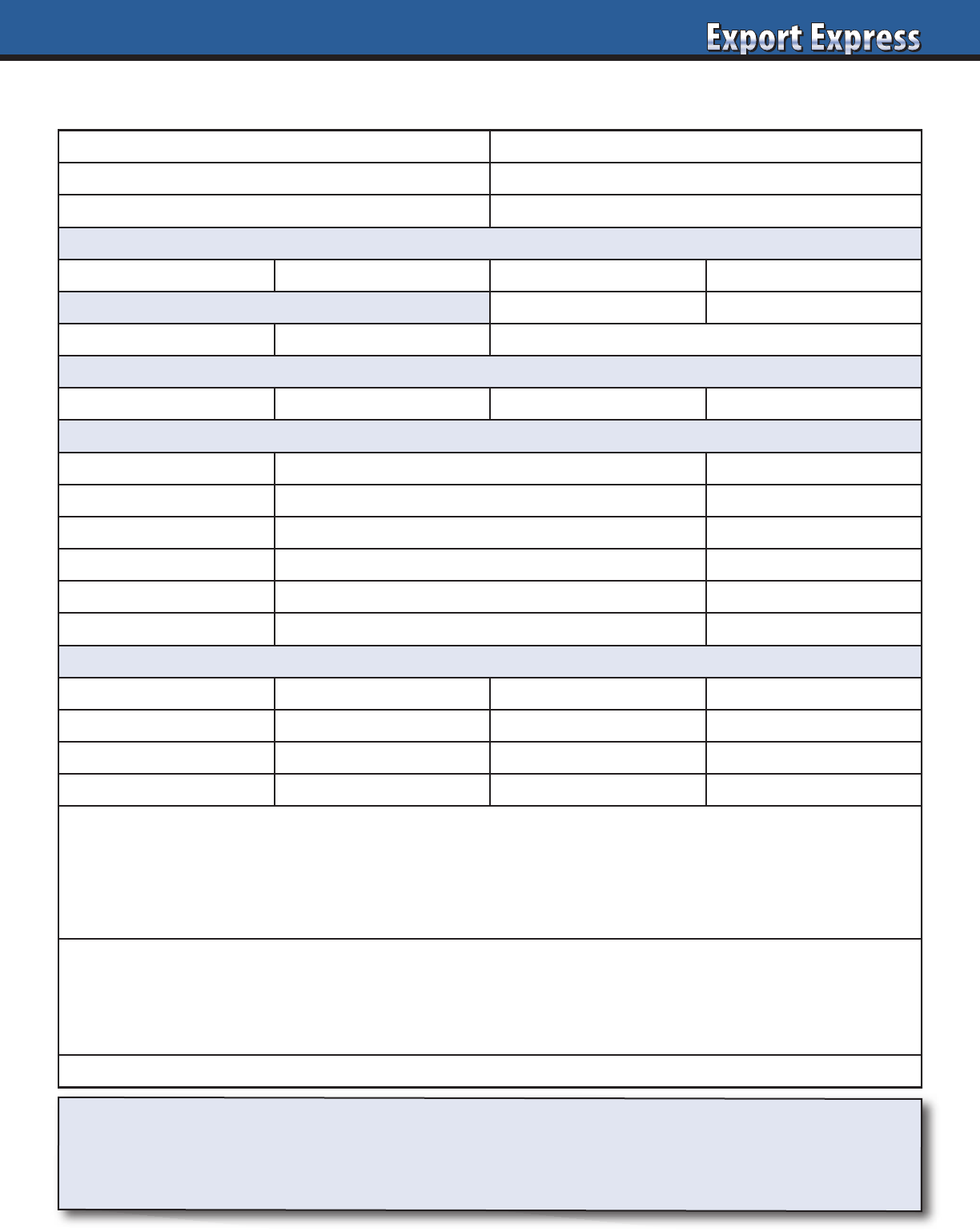
33
Export Solutions recommends creating your own one page Export Distributor fact sheet template. Insist that all candidates
complete the template 100 percent prior to a phone interview or trade show meeting. Pay particular attention to the annual
sales number, brands represented and manufacturer references. Qualified candidates will enthusiastically complete these
sections. “Pretenders” or time wasters will leave these sections blank or disappear saving you time and money!
Export Distributor Data Sheet:___________________________________
Key Contact: Telephone:
Web Site: Email:
Annual Sales: Total Employees:
Employees, by Function:
Key Account Sales Logistics Marketing Merchandising
Company Owned Warehouse: Yes No
If Yes Warehouse Size: Location:
Channel Coverage (percent sales by channel):
Supermarket Convenience Foodservice Other
Top Five Manufacturer Clients:
Company Name Brands Represented Years Service
1
2
3
4
5
Manufacturer references:
Company Name Contact Name Contact Telephone Contact Email
1
2
3
Why are you interested in distributing our brand?
Why is your company the best candidate to represent our brand in the market?
Feel free to attach your company credentials presentation.
(Distributor Name)
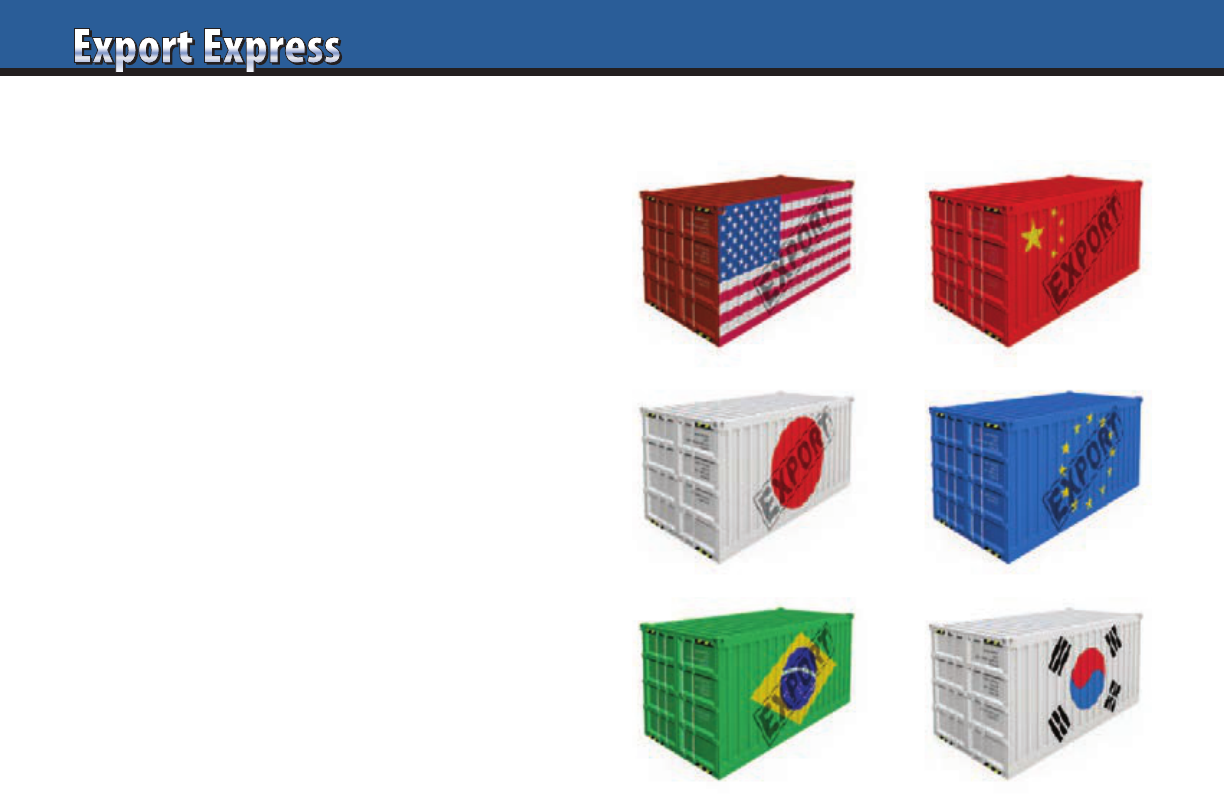
34
Most companies partner with consolidators to source incremental
business from tough to reach geographies. Consolidators are
local companies that group different products from one
country into one container. The consolidator then sells to
a list of customers that may include distributors and retailers.
Consolidator business is typically easier to handle, as you ship
existing packages to a warehouse in your home country and
receive payment in local currency. This practice generally
functions well, but you must balance additional shipments
with “loss of control” and “diverting risk.” Below are
Export Solutions’ “Ten Tips” for building your business
through consolidators.
1. Use Consolidators!
Consolidators represent an efficient route to market for new
exporters, niche brands, or for hard to access regions such
as the Middle East.
2. Fee Structure
Consolidators need to make money too! Normally, their fee is
built into a cost calculation to the retailer or offshore distributor.
10% is an average consolidator margin, but there are many
variables. Note that the consolidator margin plus an extra
logistics stop will ultimately drive your price 15% higher
to the consumer than a “direct to distributor” model.
3. Avoid Region Wide Appointments
Consolidators serve as options for islands in the Caribbean or
small countries in the Middle East. However, you should rarely
give them responsibility for bigger markets like Saudi Arabia or
Puerto Rico. Better to deal directly with distributors in strategic
countries. Use the cost differential to invest in brand building
or lower retail prices.
4. Pricing
Typical pricing to consolidators is around 90% of standard list
price. This will provide a discount to compensate for promotion
pricing activity, but not a wide enough gap to risk diverting.
Good consolidator partners will share a transparent price
calculation model from factory gate to overseas store shelves.
5. Which Distributors Form the Consolidators Customer Network?
Part of your assessment process will be to analyze representative
distributors used by a consolidator. You need to decide if the
consolidator’s typical partners are a good fit with your brand
representation requirements. Note: some consolidators “guard”
their distributor lists. However, understanding their customers
is a critical step in assessing their capabilities.
6. Reference Check New Consolidators
It is a standard practice to reference check consolidators.
Many will accurately claim representation of famous brands.
However, the scope of partnership may actually be quite
limited. Ask references about years of partnership, results,
and countries/brands in the consolidator coverage agreement.
7. Mark Packages “For Export Only”
Diverting discussions are significant distractions for most export
managers. Consolidators may be tempted to divert, as they
typically purchase standard packages and receive delivery
in the home country. Labeling packages “For Export Only”
or even “Export” diminish the likelihood that your brand will
be diverted and reduce complaints and accusations from your
national sales team.
8. Beware of Local Laws
Consolidators are an integrated solution, which eliminates
measurable paperwork and stress from an export program.
However, this does not release the brand owner from obligations
to comply with local laws on labeling and distributor contracts.
Naturally, you should also maintain a contract with your
consolidator to guide terms and conditions of your relationship.
9. Request Listing Maps
A frequent complaint is that manufacturer’s lose control of their
export business when dealing with a consolidator. Brands receive
market level shipment reports at best, with limited or no data
on listings by retailer, pricing, or merchandising activity. Request
that your consolidator provide a “Listing Map,” by country at
least twice per year.
10. Periodic Visits to Consolidator Territory
Export managers should conduct market visits to leading
countries managed by their consolidator. Check stores, meet
with distributors, understand growth opportunities. These
programmed visits are likely to be positive, but send a signal
to the consolidator that you are an active partner.
Ten Tips: Best Practices for Using Consolidators
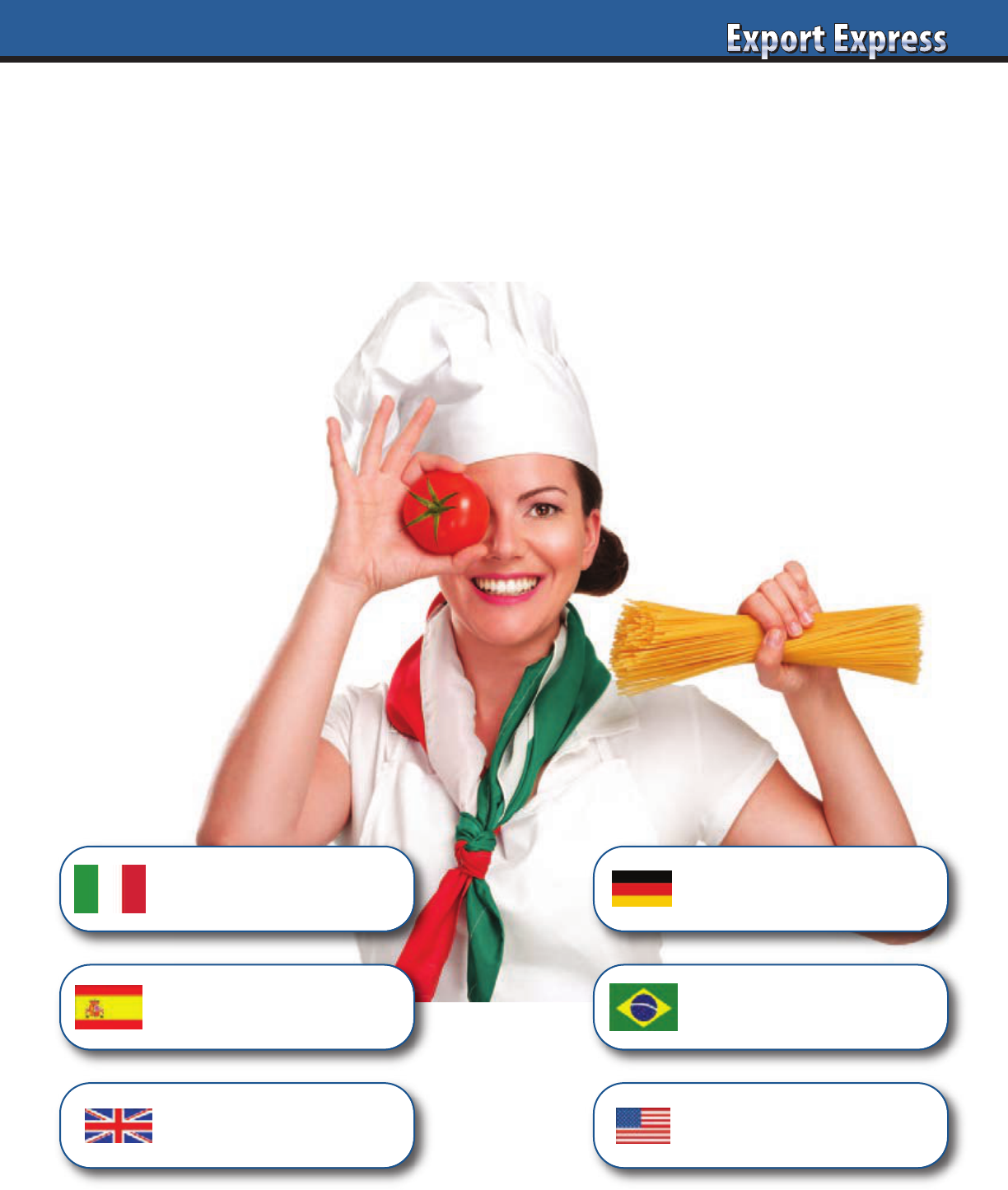
35
Country Experts
Looking for distributors specialized in brands from your country?
Search Export Solutions database to find overseas distributors handling
food, beverage, and sweets brands from your country.
Subscribe now at www.exportsolutions.com
USA Food & Sweets
1,189 Distributors
Spanish Food & Sweets
408 Distributors
Italian Food & Sweets
1,397 Distributors
UK Food & Sweets
682 Distributors
Latam Food & Sweets
543 Distributors
German Food & Sweets
648 Distributors
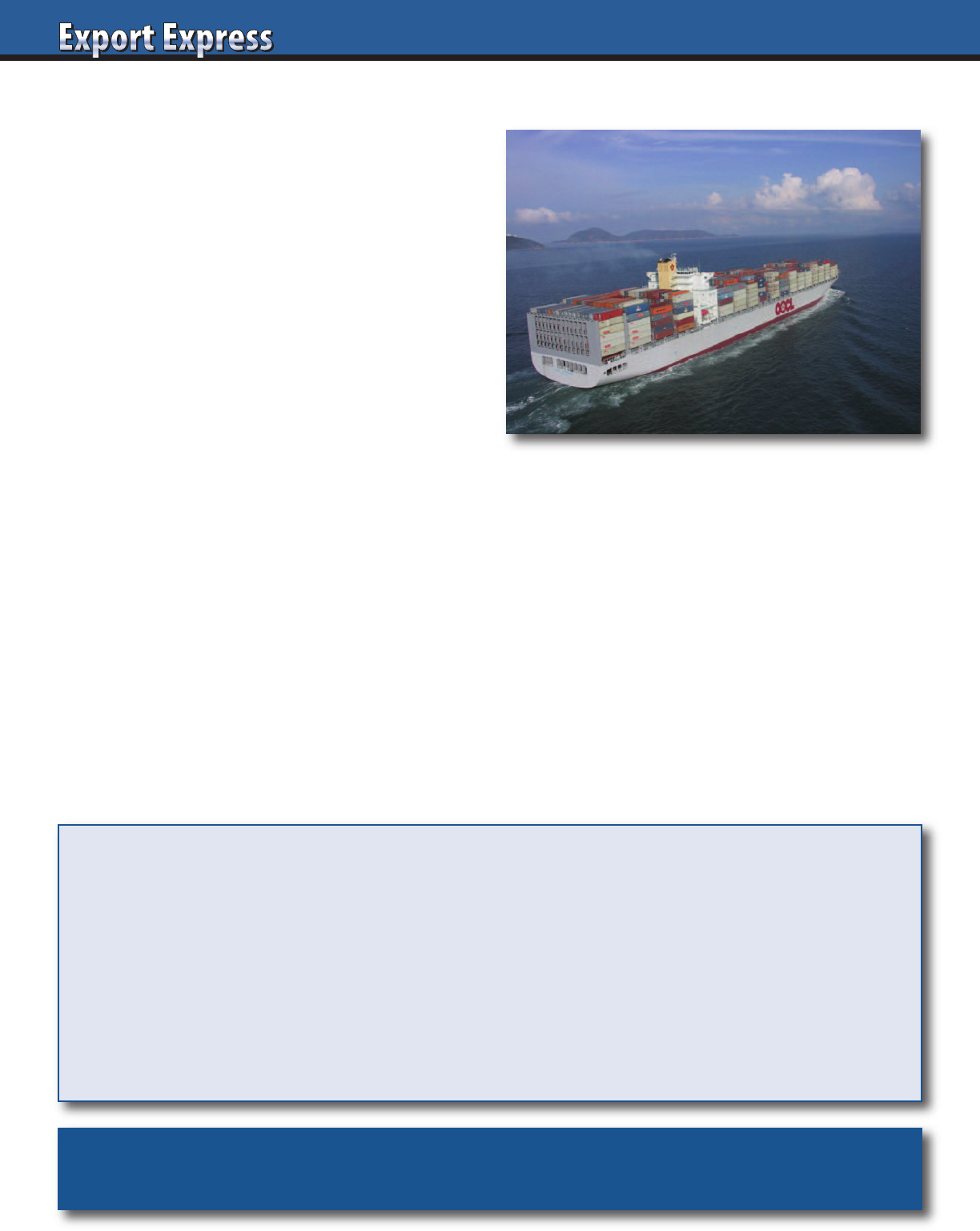
36
The INCOTERMS (International Commercial Terms) is a
universally recognized set of definitions of international trade
terms, defining the respective roles of the buyer and seller in
the arrangement of transportation and other responsibilities and
clarify when the ownership of the merchandise takes place. They
are used in conjunction with a sales agreement or other method
of transacting the sale.
TERMS FOR ALL TRANSPORT MODEs
• EXW - Ex Works: Title and risk pass to buyer including
payment of all transportation and insurance cost from the
seller’s door. Used for any mode of transportation.
• FCA - Free Carrier: Title and risk pass to buyer including
transportation and insurance cost when the seller delivers goods
cleared for export to the carrier. Seller is obligated to load the
goods on the Buyer’s collecting vehicle; it is the Buyer’s
obligation to recieve the Seller’s arriving vehicle unloaded.
• CPT - Carriage Paid To: Title, risk and insurance cost pass
to buyer when delivered to carrier by seller who pays
transportation cost to destination. Used for any mode
of transportation.
• CIP - Carriage and Insurance Paid To: Title and risk
pass to buyer when delivered to carrier by seller who pays
transportation and insurance cost to destination. Used
for any mode of transportation.
• DAT - Delivered At Terminal: Title and risk pass to buyer when
seller delivers and unloads goods at named terminal. Used for
any mode of transportation.
• DAP - Delivered At Place: Title and risk pass to buyer when
seller delivers goods to named place ready for unloading. Used
for any mode of transportation.
• DDP - Delivered Duty Paid: Title and risk pass to buyer when
seller delivers goods to named destination point cleared for
import. Used for any mode of transportation.
TERMS FOR SEA/INLAND WATERWAY TRANSPORT ONLY:
• FAS - Free Alongside Ship: Title and risk pass to buyer
including payment of all transportation and insurance cost
once delivered alongside ship by the seller. Used for sea or
inland waterway transportation. The export clearance
obligation rests with the seller.
• FOB - Free On Board and risk pass to buyer including
payment of all transportation and insurance cost once
delivered on board the ship by the seller. Used for sea
or inland waterway transportation.
• CFR - Cost and Freight: Title, risk and insurance cost pass
to buyer when delivered on board the ship by seller who pays
the transportation cost to the destination port. Used for sea
or inland waterway transportation.
• CIF - Cost, Insurance and Freight: Title and risk pass to
buyer when delivered on board the ship by seller who pays
transportation and insurance cost to destination port. Used
for sea or inland waterway transportation.
Incoterms
Greg’s Guide
3 Recommend CIF (Cost including freight) model to distributors port.
This eliminates diverting risk.
3 Ex Works should only be allowed when your export pricing matches USA list pricing.
3 Overseas freight management is another core export task.
However, most of the “work” is straight forward.
Find a carrier and complete “paperwork.”
Need a hand? Visit www.exportsolutions.com.
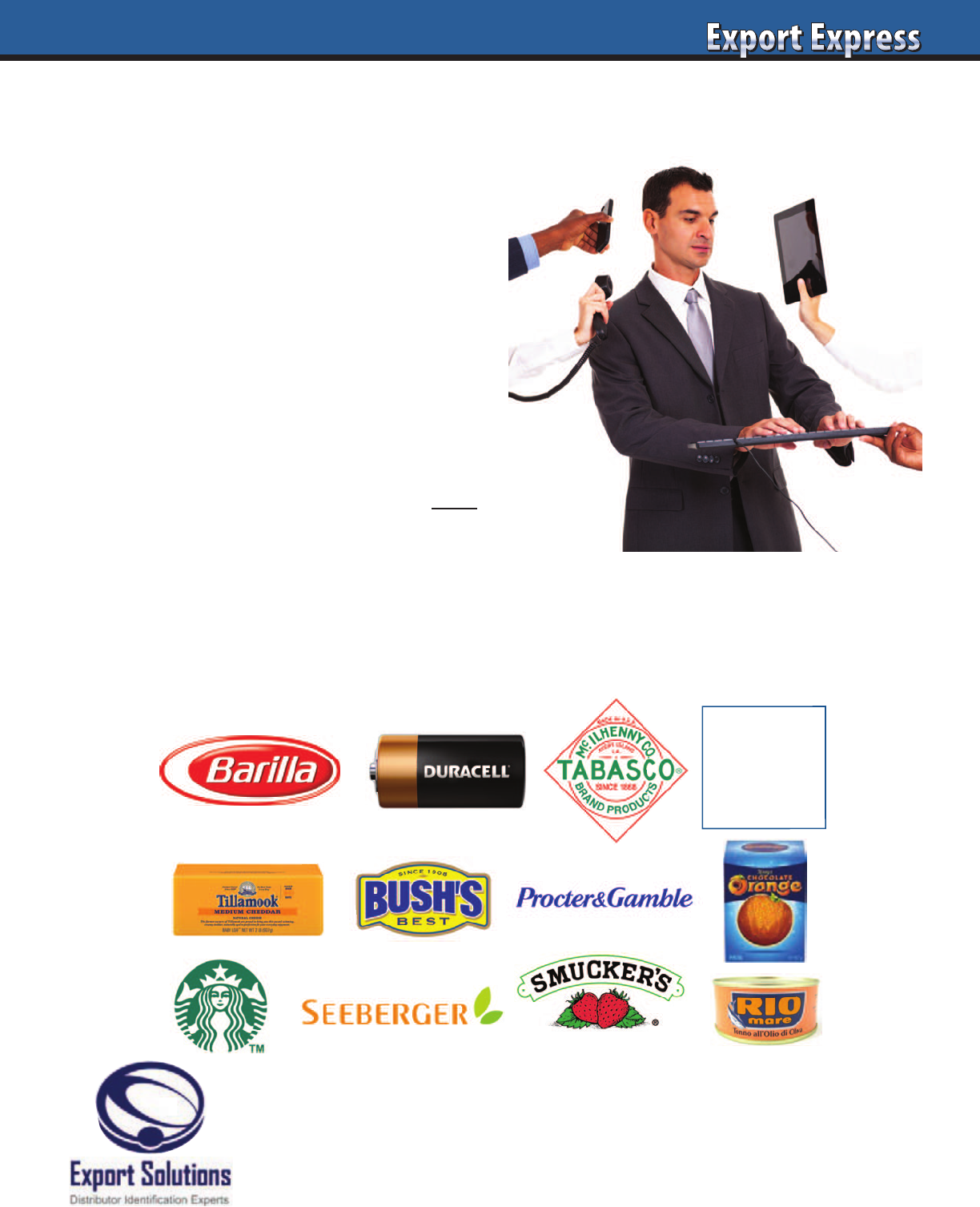
37
Distributor Search Helper for:
How We Help
• Export Solutions: Distributor Search Helper
• Identify and pre-screen a minimum of 5 quality
distributor candidates
• Quickly schedule meetings with distributor
top management
• Guide and participate in proven 10 step
distributor assessment process
• Serve as a team player and sounding board
throughout the distributor search project
• Detailed understanding of distributor’s cost
calculation, able to help client obtain fair value
margin structure from distributor
• Distributors provide strong consideration to
Export Solutions’ client projects due to our visibility on more than 300 distributor search projects
and ownership of the industries distributor database
Contact Greg Seminara at (001)-404-255-8387 to discuss your project.
gseminara@exportsolutions.com
www.exportsolutions.com
Your
Logo
Here

New Sales from
Old Markets
New Sales from
Old Markets
Catalyst: spark to stimulate
new growth strategies.
Export Catalyst
by Greg Seminara
Export Catalyst
by Greg Seminara
38
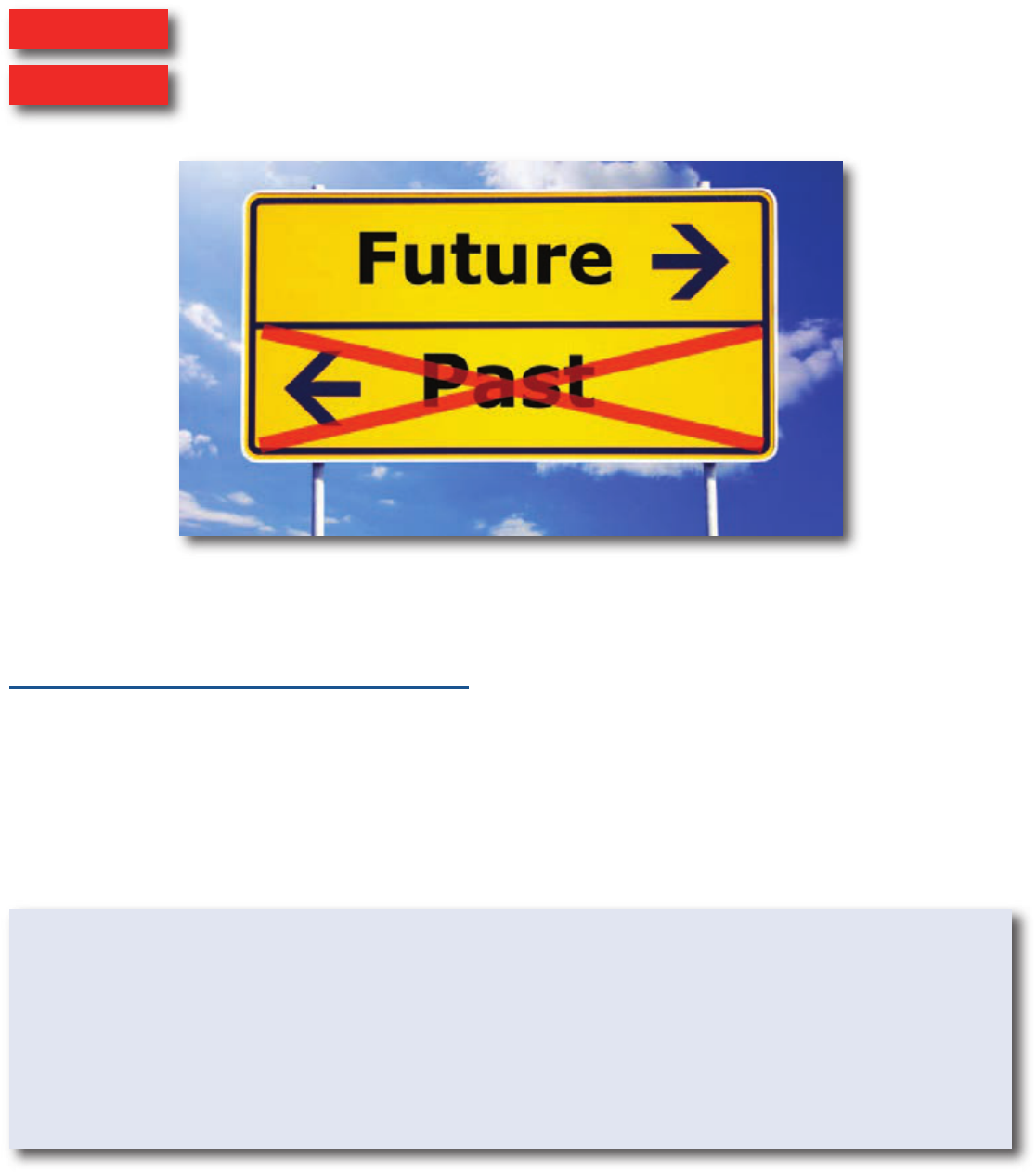
Overview
Four Core Program Pillars
1. Distributor Segmentation: “Capabilities and Alignment”
2. More in the Store
3. People Power
4. Distributor Economics
Introduction
• Your company has export footprint in most key countries
• Current distributors are adequate, but growth has slowed
• Good export team, but too much repetition of old strategies and inefficient promotions
Team requires new ideas to propel existing business to next level
Export Catalyst
stimulates new sales through innovative
strategies for your current distributor network
Challenge:
Solution:
“At our ESMA annual convention – the summit of the distributor industry in FMCG in Europe – we
share thoughts and invite speakers of significance. Greg Seminara was invited to speak about his view
on the development of distributors and the elements in the marketing mix of relevance to this business
sector. Greg impressed his audience with his vast knowledge, his ability to communicate and some
clear thoughts about the drivers behind results. The feedback to his speech was excellent and
participants highlighted his hands-on understanding about our business.“
CEO – ESMA
European Sales & Marketing Association
Testimonial
39

Export Catalyst
Best Practices
Topic
Core Themes
Distributor Segmentation
• Distributor capability and
specialization assessment
• Segmenting distributors:
“leaders, performers, laggards”
• Motivating different classes of partners
• Distributor change management
More in the Store
• Defining a good store versus a bad store
• Trade promotion effectiveness:
creativity, KPI’s
• Culture change:
managing in-store merchandising metrics
• Tool kit: listing maps, perfect shelf, etc.
People Power
• Distributor CEO/MD
engagement in your business
• Distributor brand manager:
veteran or trainee?
• Gaining support of total distributor team
• Your role: doctor, coach or babysitter?
• Creating brand champions
Distributor Economics
• How distributors make money
• Calculation Diagnostic:
from factory to store shelf
• Analyzing your profit contribution
to distributor organization
• Distributor profit centers
40

• Organize as a Work Session or Training Workshop
• Flexible Program: 1 day and 2 day options
• Schedule with annual sales meeting or trade fair.
• Combine Export Solutions’ workshop with your
own company presentation
• Additional modules: Strategic Export Development,
Finding Best in Class Distributors, Selling to the
USA, and 25 Export Problems (& Solutions!)
Looking for new sales from old markets?
Contact Greg Seminara to schedule Export Catalyst
Looking for new sales from old markets?
Contact Greg Seminara to schedule Export Catalyst
Export Catalyst Options
About Greg Seminara
Greg Seminara founded Export Solutions in 2004 after a career with
Procter & Gamble, Clorox, and the leading USA Food Broker. This included
positions based in the USA, Saudi Arabia, and Argentina. Credentials include:
• Creator of industry distributor database: 96 countries, 9,200 distributors
Categories: Confectionery/Snack, Gourmet/Ethnic, Beverage, Italian Foods.
• Author/Publisher of Export Express Newsletter (circulation: 9,900).
• Author/Publisher: Export Strategy Guide, Distributor Search Guide, Selling
to the USA, Distributor Management Guide, 300 Tips for Export Managers, and
more than 300 articles on export development and selling through distributors.
• Completed 300+ Distributor Search projects in 48 countries - 5 continents.
Clients include Nestlé, Barilla, P&G, Starbucks, and Tabasco.
• Recognized by European Distributors Association (ESMA) for lifetime contributions.
Dear Greg
“I am very grateful for the excellent training we were able to set up with your support in Parma
last month. The two day program proved extremely helpful, rich with insights and experiences that
we were striving to deliver to our key people in international markets.
The two days allowed us to cover broad & strategic issues, such as country segmentation &
prioritization, as well as very specific and practical issues, such as the distributors’ business models,
drivers of distributors’ performance and how that can be influenced by the brand owner, to how to
improve performance in the “moment of truth,” with the “more in the store” section.
I therefore wish to take the occasion to thank you again for your important contribution, and am
also very glad to mention that, as we do for all trainings done in the Barilla Lab Learning Center, your
program was subject to a post evaluation from all participants, and that it scored among the highest
programs taken in these past few years.”
Barilla
Director, Export Markets
Testimonial
41
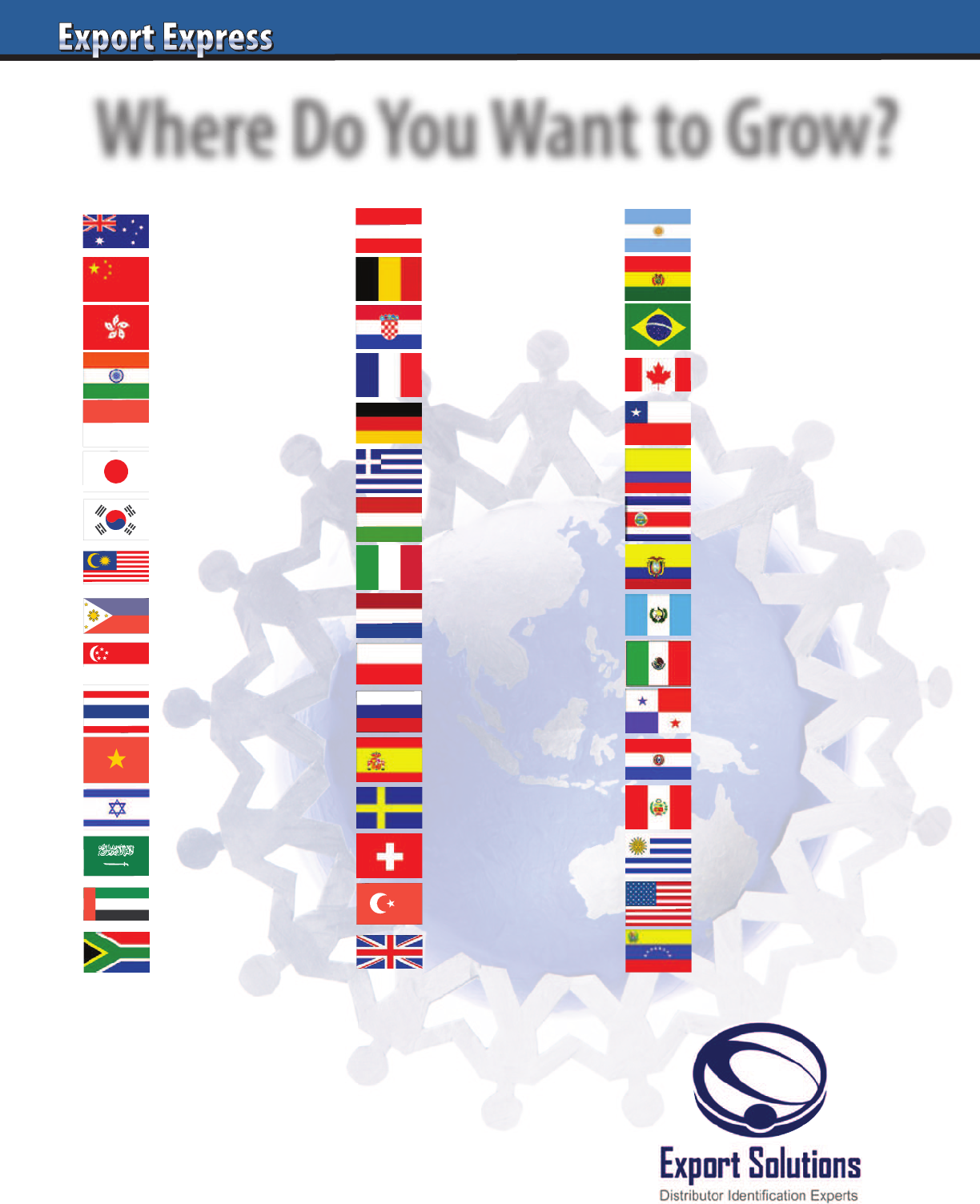
42
Where Do You Want to Grow?
Asia/Africa/Middle East
Europe Americas
Use Export Solutions Database
to fill in the Gaps in your
Export Coverage Map
Australia – 274 Distributors
China – 160 Distributors
Hong Kong – 177 Distributors
India – 109 Distributors
Indonesia – 78 Distributors
Japan – 176 Distributors
Korea – 146 Distributors
Malaysia – 128 Distributors
Philippines – 109 Distributors
Singapore – 163 Distributors
Thailand – 94 Distributors
Vietnam – 49 Distributors
Israel – 61 Distributors
Saudi Arabia – 115 Distributors
U.A.E. – 195 Distributors
South Africa – 106 Distributors
Plus 14 more countries
Austria – 68 Distributors
Belgium – 85 Distributors
Croatia – 78 Distributors
France – 125 Distributors
Germany – 188 Distributors
Greece – 90 Distributors
Hungary – 68 Distributors
Italy – 105 Distributors
Netherlands – 155 Distributors
Poland – 90 Distributors
Russia – 108 Distributors
Spain – 157 Distributors
Sweden – 103 Distributors
Switzerland – 100 Distributors
Turkey – 82 Distributors
U.K. – 274 Distributors
Plus 19 more countries
Argentina – 61 Distributors
Bolivia – 52 Distributors
Brazil – 135 Distributors
Canada – 205 Distributors
Chile – 92 Distributors
Colombia – 82 Distributors
Costa Rica – 73 Distributors
Ecuador – 55 Distributors
Guatemala – 61 Distributors
Mexico – 193 Distributors
Panama – 63 Distributors
Paraguay – 57 Distributors
Peru – 82 Distributors
Uruguay – 52 Distributors
USA – 598 Distributors
Venezuela – 38 Distributors
Plus 14 more countries

